HOW TO SKOG SURVIVING WINTER




TORONTO’S LONGBOARDING SCENE: HALF THE HILLS, ALL THE SKILLS!
ANNUAL PHOTO ISSUE



Vol.10 No.3HOLIDAYS 2011 $4.95
Page 80


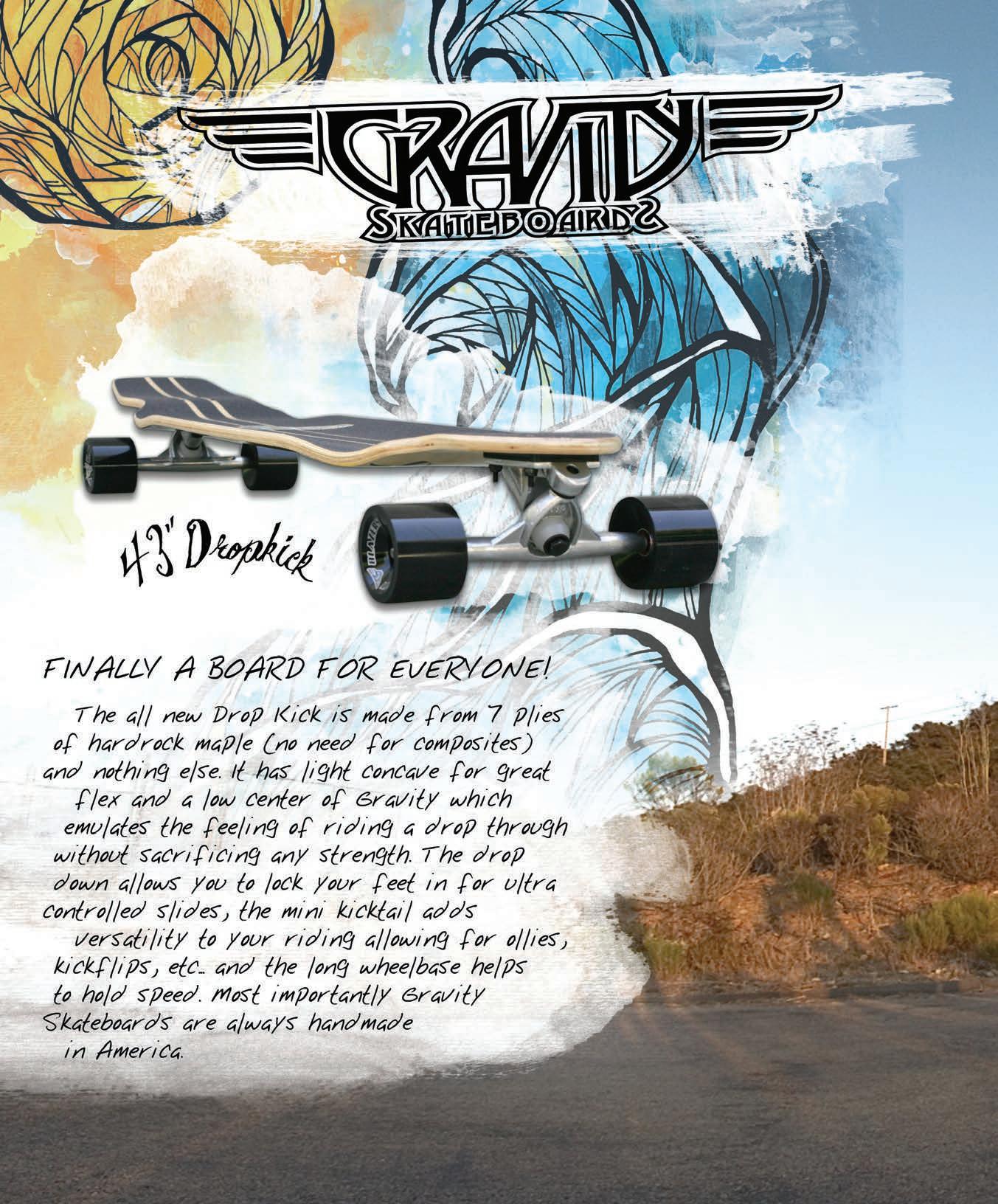




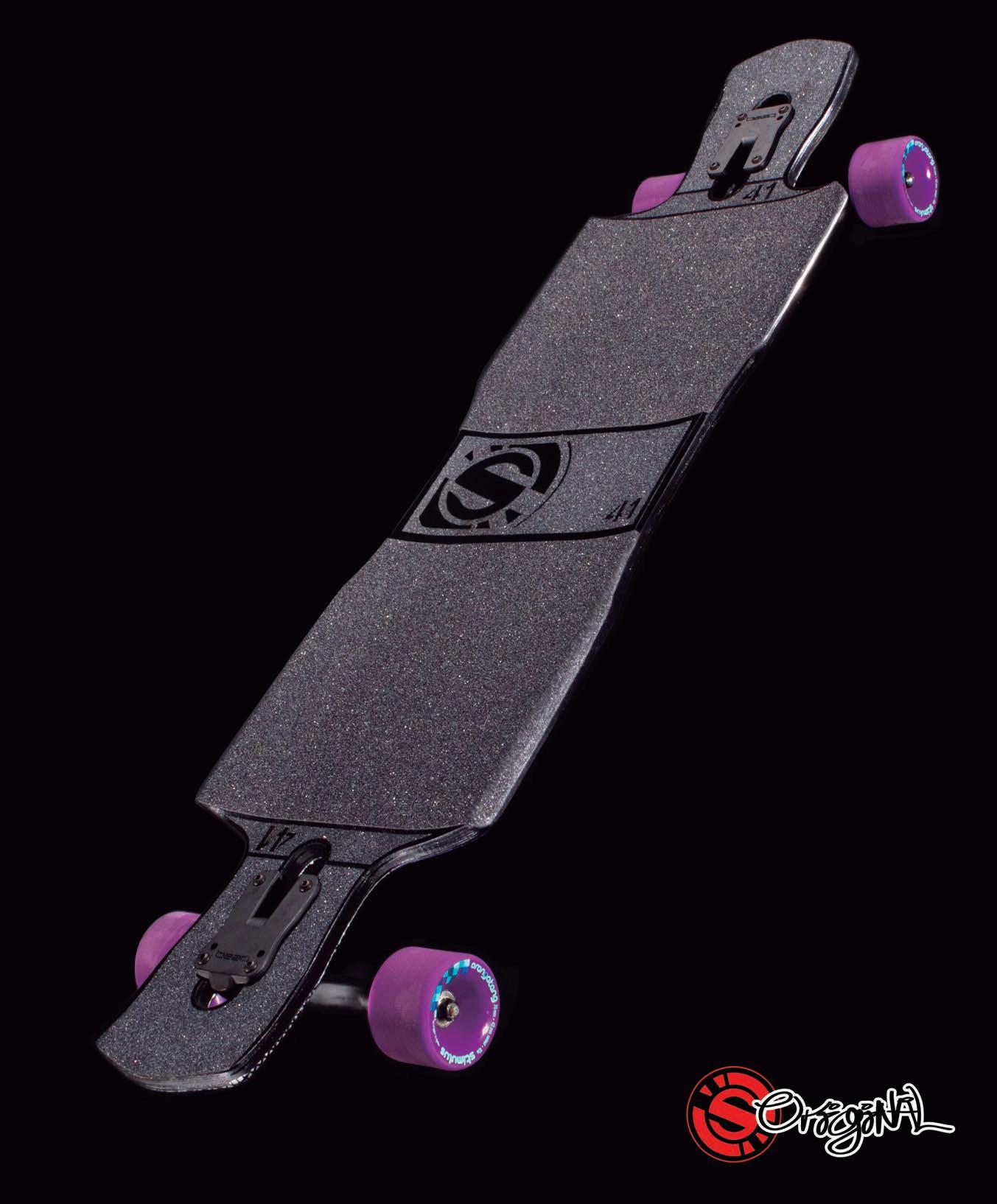
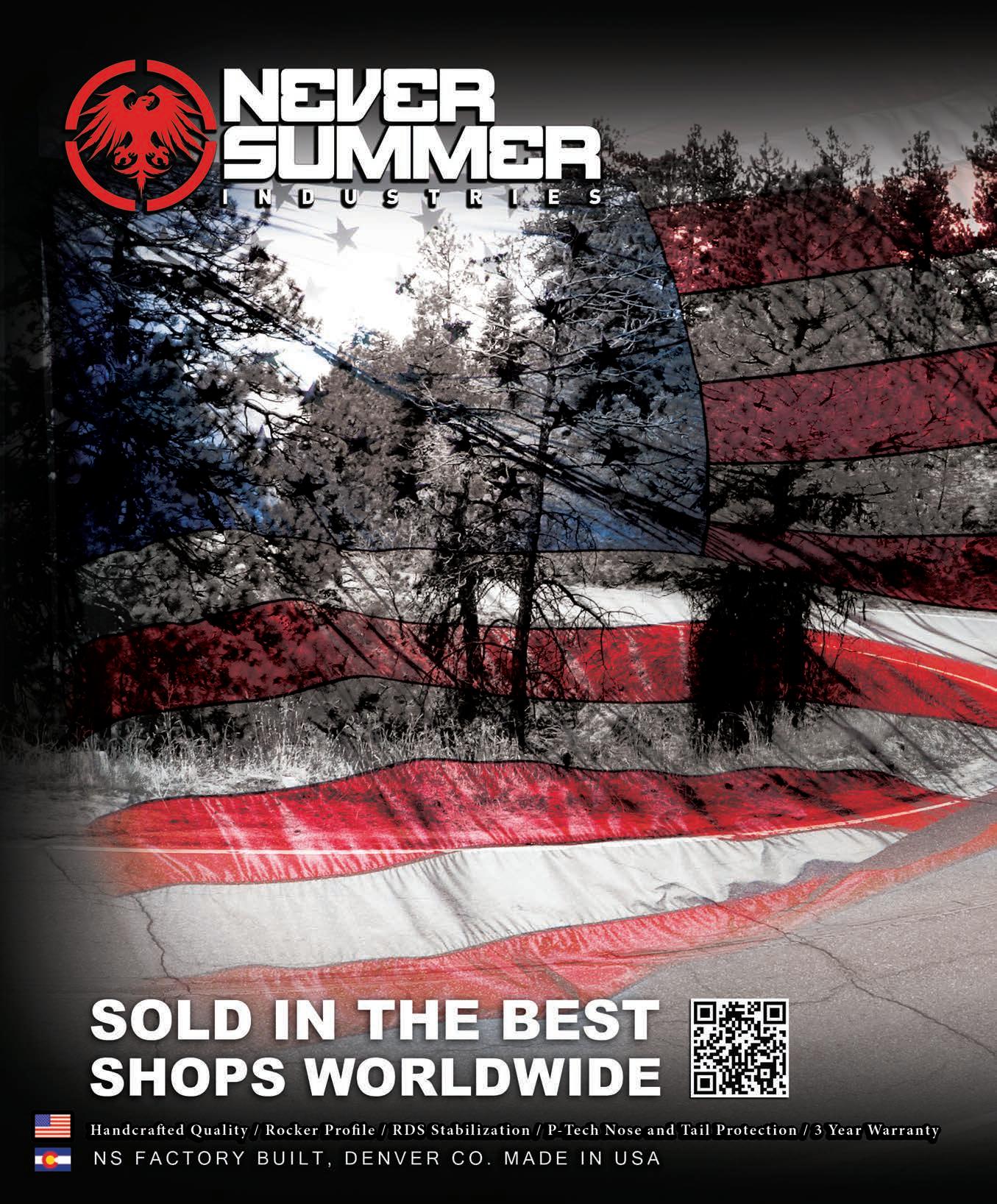


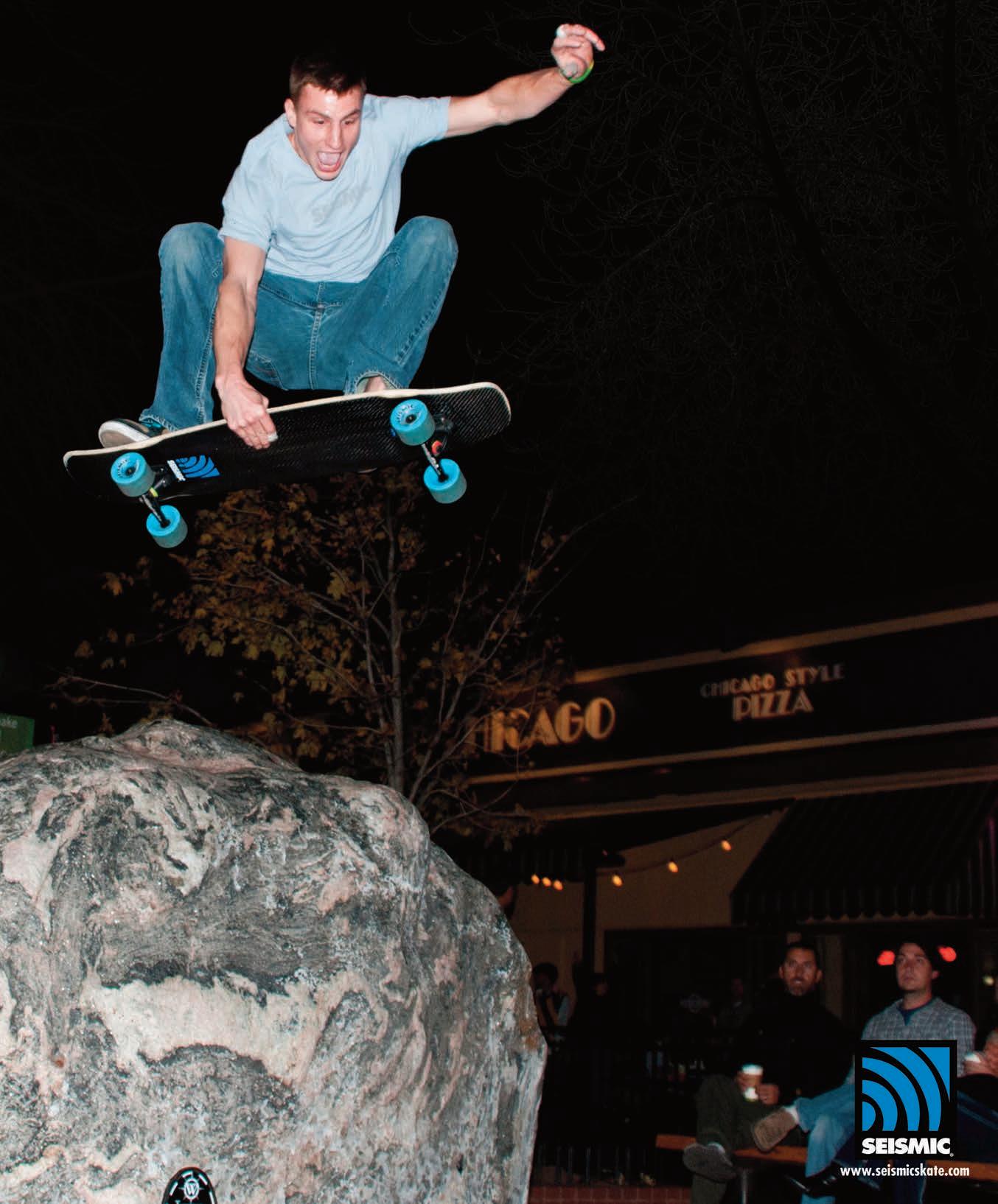

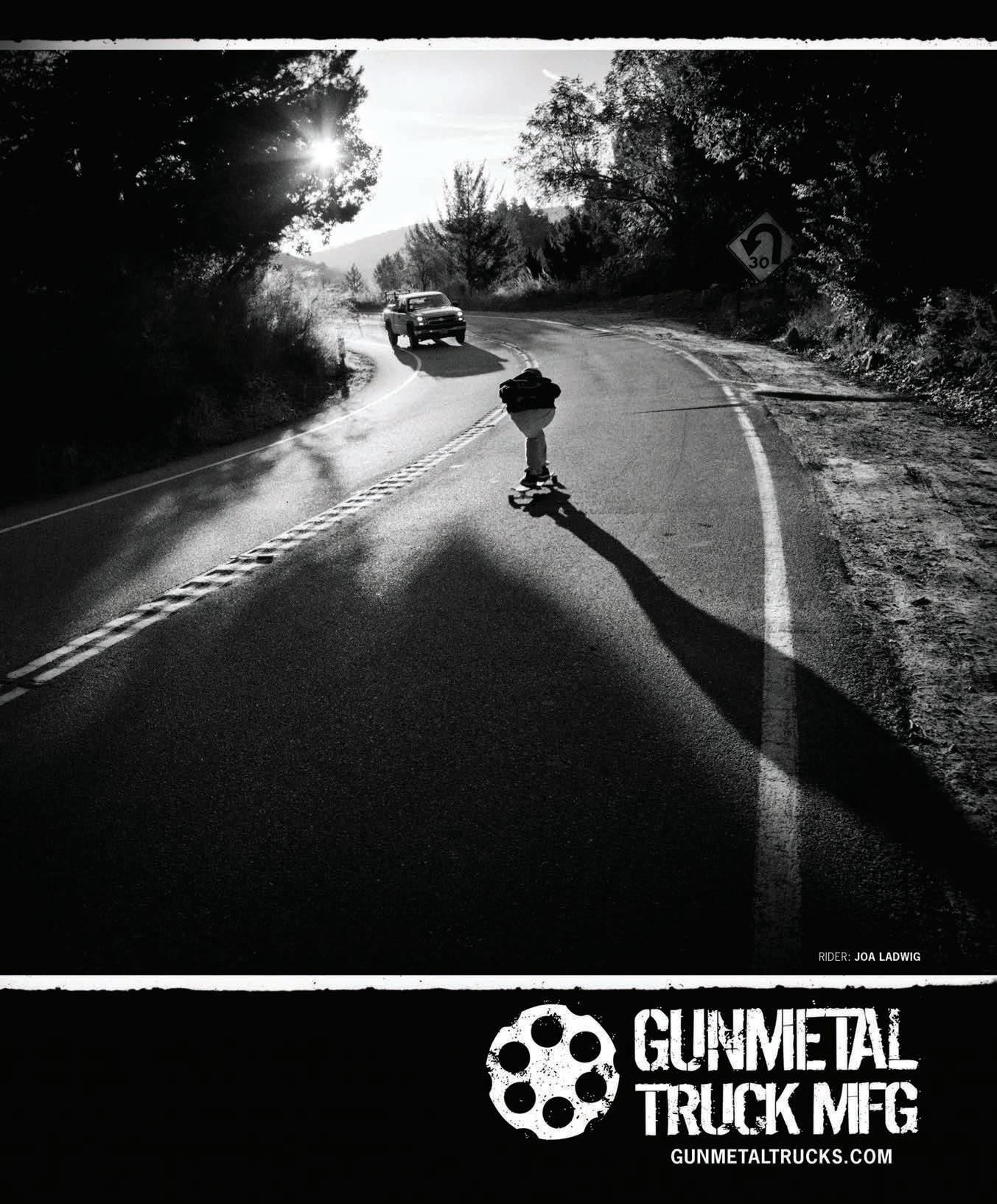
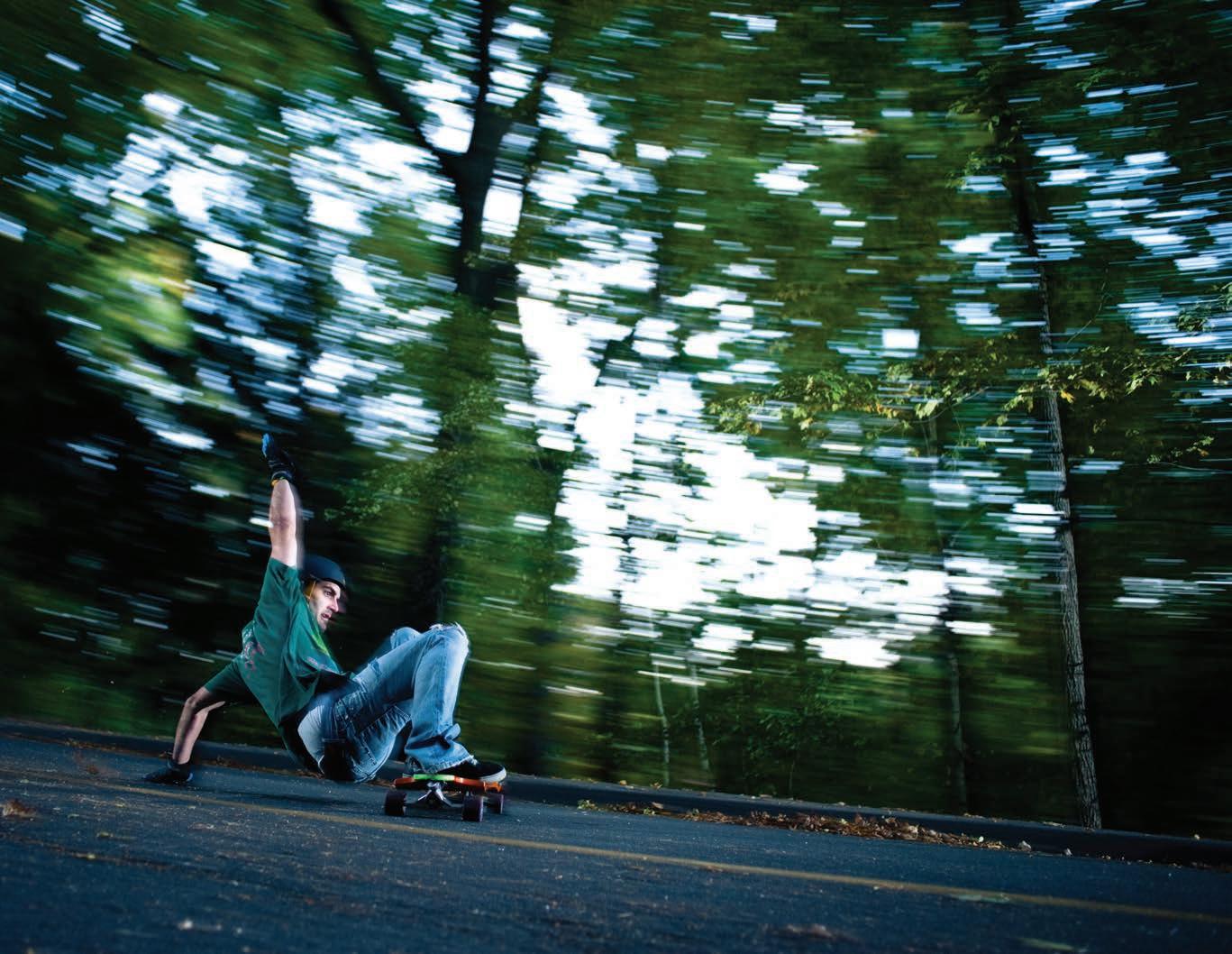

16 CONCRETE WAVE HOLIDAYS 2011 CONTENTS >> 28 EDITORIAL 34 LETTERS 40 NOTEWORTHY 50 SKATE SHOOTINGBOOK EXCERPT: THE IMPOSSIBLE 52 WINTER SURVIVAL GUIDE 56 CUT THE JIVE AND SKOG 58 PLANNING A CONTEST 62 SLALOM REPORT 64 DIARY OF A TRUCK: PART 2 68 PORTFOLIO – JEFF BUDRO 76 STARVING ARTIST GUIDE 80 PHOTO ANNUAL 100 TORONTO SCENE REPORT 108 IGSA REPORT
HOLIDAY 2011
Russ Gerstacker. Photo: Max Benjamin





2011
PUBLISHER/EDITOR Michael Brooke | mbrooke@interlog.com
SENIOR EDITOR Blair Watson
ART DIRECTOR Mark Tzerelshtein | MarkintoshDesign.com
ASSOCIATE EDITOR Buddy Carr
DOWNHILL EDITOR Jon Caften
PHOTO EDITORS Jon Huey | Dan Bourqui
IGSA WORLD CUP EDITOR Marcus Rietema
SLALOM/FREESTYLE Richy and Maria EDITORS Carrasco
CONTRIBUTING EDITORS Erik Basil Malakai Kingston
CORRESPONDENT Jim Kuiack
I.T. DEPT. HEAD Rick Tetz of CalStreets.com
COPY EDITOR Jonathan Harms
PROBLEM SOLVER Bud Stratford | budstratford@aol.com
HEAD OFFICE 1136-3 Center Street Suite 293 Thornhill, Ontario L4J 3M8 ph: 905.738.0804
SKATESHOP DISTRIBUTION Buddy Carr Designs PO Box 1895, Carlsbad, CA 92018 tailtapinfo@yahoo.com ph: 760.722.4111
CONTRIBUTORS (In order of appearance): Dan Bourqui, Lauren Prior-Smith, Max Benjamin, Victor Villodre, Geoff Simpson, Jo Coles, Rich Auden, Pam Díaz, Cole Louison, Clint Cherepa, Erik Daenitz, Jeff Nass, Lena Parkhomenko, Chris Yandall, Gigi Dearmas-Lopatriello, Casey Stearns, Rob Ashby, Doug Kerr, Maria Carrasco, Neil Orta, Dave Arnold, Neil Carver, Jeff Budro, Louis Pilloni, Jorge Salas, Marco, Mitchy, Ray “MRZ” Zimmerman, Joey Budro, Rodgon, Dylan Harkavy, Jonathan Nuss, Brian Babish, Ray Rae Goldman, Paul Norton Taillandier, Dan Sparagna, Rafael Fazano, Brett Beyer, Max Dubler, Spencer Knuttila, Andi Leslie, Jon Huey, Andrew Yeung/longboardism.com, Michael C. Palma, Scott Harrison, Suzanne "Ponyta" Nuttall, Marcus Rietema, Scott Wippermann, Mike Smith, John Longfellow. concretewavemagazine.com
Concrete Wave is published by North of La Jolla Inc.


Subscriptions (5 issues) are US$26 FIRST CLASS or CAN$26 (US$44 outside North America).
Address change? Mag not arriving? Email us... don’t go postal. We can sort it out. mbrooke@interlog.com. We will notify you when your subscription expires. Publisher’s permission is required before reproducing any part of this magazine. The views and opinions expressed in Concrete Wave are not necessarily those of the publisher. We happily accept articles and photos. Please contact the publisher directly at mbrooke@interlog.com before you submit anything. We are looking for a variety of stories and images as long as they are skate related.
COVER 1: Louis Pilloni is caught on tape by Jeff Budro. Photo: Dan Bourqui
COVER 2: Sam Prior-Smith caught in a golden moment.

OPENING SPREAD: Gravity team rider Sara Locke. Photo by Victor Villodre.
WELCOME TO THE FINE PRINT: A few weeks ago I was watching “Midnight in Paris,” the most recent film from Woody Allen. This film explores the age-old question of how people perceive the past. The characters in the film become so immersed in the past that they actually wind up there. It's surreal, but it drives home the point that the time really is now. You can never go back - you just have to learn from the past and build a brighter future. That's easier than it sounds. It's hard to change once you've reached a certain age. People get set in their ways. And yet I've found that the act of skateboarding has kept me thinking young. It's the one activity that both takes me back and moves me forward. But you have to be careful not to get too distracted by the warm glow of the past. Many skaters fondly recall their “golden time.” Depending on your era, this could be when “no one skated” and it was strictly an underground activity; or when every issue of SkateBoarder magazine signaled the introduction of a new move and ground-breaking products. Longboarding a decade ago was also an entirely different experience than it is now. No matter what era you're from, you'll carry some amazing memories and probably a little bit of bias. Hey, that's normal. As the saying goes, “Nostalgia ain't what it used to be.” To the new crop of skaters out there forging their own mark on skateboarding, I can only hope you derive as much satisfaction as the generations of skaters who have preceded you. No doubt, if you've read this far, you are probably well on your way. Here's to the future and 2012!
2011
Life is a search for fulfillment. When you experience something that deeply resonates with you, it is the spark that ignites passion. And once you’ve discovered something you’re passionate about, you want to spread the stoke.
CONCRETE WAVE is the engine that enables people to search, spark and stoke their passion.
Michael Brooke October 2011
22 CONCRETE WAVE HOLIDAYS
Vol. 10 No. 3 HOLIDAYS
Photo: Lauren Prior- Smith
TM
SEARCH/SPARK/STOKE


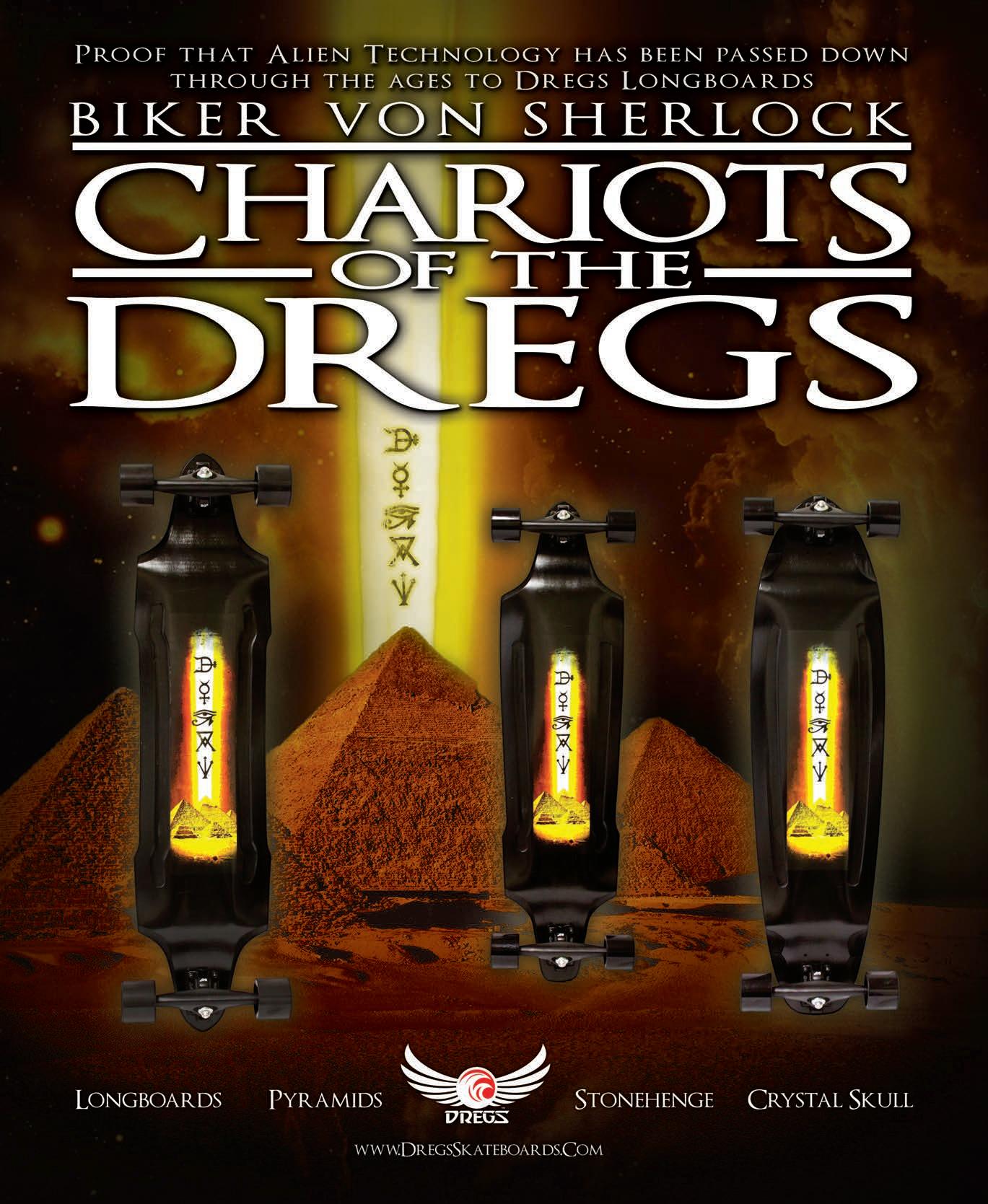


FEELING LONGBOARDING in your bones
Anumber of years ago a friend of mine (not a skater) turned to me and asked incredulously, “How can you derive any deep meaning in what is just a piece of wood, with two metal trucks and some urethane?” I replied with a smile and said simply, “If all you see is the physical components, you’ll never get it.” Skateboarding is something that just runs deep in my bones. I try to explain that stoke via this magazine, but sometimes I run into people who just don’t get it.
But isn’t this the case with anything people get passionate about? One person’s meat is another’s poison; what we can’t understand, we tend to dismiss. A number of skaters look at their fellow

longboarders and can’t figure it out what all the fuss is about. They just can’t understand how anyone could get passionate about merely carving or cruising, let alone putting on leathers and bombing down a hill. But the facts speak for themselves. Millions of people worldwide are deriving a huge amount of satisfaction from longboarding, and the trend doesn’t seem to be falling off any time soon.

If you’ve tapped into the energy that longboarding can provide, then go with it. Enjoy the ride, go with the flow and spread the stoke. In fact, what I’ve found is that sometimes the best part of longboarding is sharing it with others.
go through life faced with a number of difficult issues: the pressure to conform; the pressure not to conform. It can get overwhelming. But riding a longboard and feeling the joy pulsing through your veins and into your bones … well, that’s probably the best way to keep skeletons out of your closet.
Here’s to the future!
Michael Brooke, Publisher

28 CONCRETE WAVE HOLIDAYS 2011 CONCRETEWAVEMAGAZINE.COM EDITORIAL >>
Rider: Billy “Bones”
Meiners |
Photo: Geoff Simpson
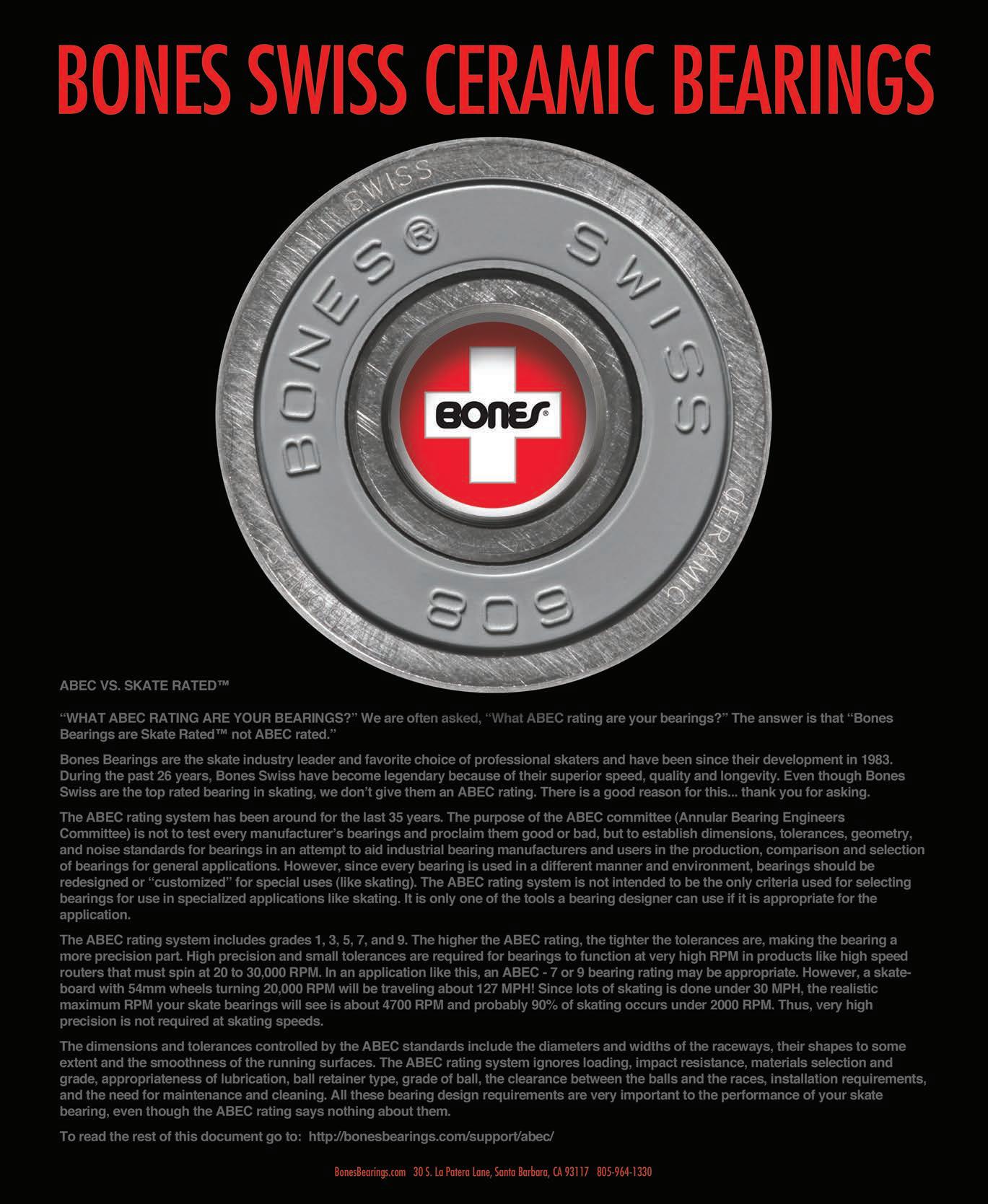

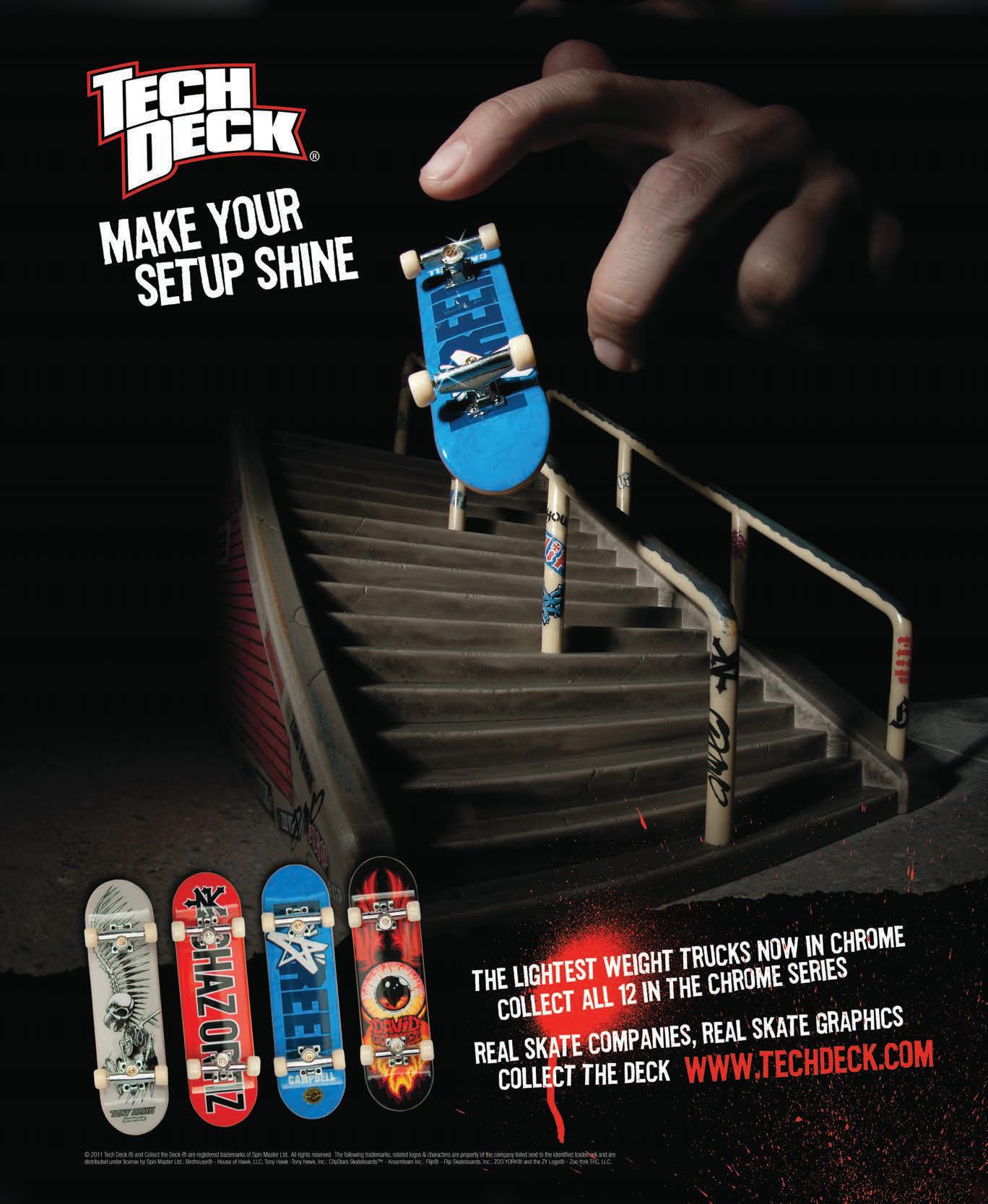



SHOP STOP
Although it was nice to just drive down the street to pick up CW, I think you are making the right move to limit the places to buy it to just skate shops. Before I found it at the store I was getting it from, I used to go to the local shop to get it. This put me in Woody’s Halfpipe a half a dozen times a year. But recently I noticed I had not been visiting them anymore because I could get the mag close by. I like to support my local shop, and this gives me more chances to do so.
My wife, however, may not agree. Now when I go to pick up my mag, I might as well get some wheels while I’m there. Oh, and I better get some bearings for those wheels. And I hate to put those new wheels on those old trucks ... you know how that goes.
Thanks!
TALES FROM THE MOTHERSHIP
I thought I’d take the occasion of my subscription to write and congratulate you on such a great magazine! I recall the first time I picked up Concrete Wave at a newsstand and thought, “Wow, a skate mag for the rest of us!” Keep up the good work! This 46-year-old is now raising a second generation of skateboarders, and I appreciate your attention to and promotion of safety gear. I’ve not broken any bones myself, but have driven battered friends to the hospital.

I did the bulk of my skating in the pool/vert days of the 1980s. It is strange to think that the freestyle epitomized by Mullen and Welinder (which rarely got one page of coverage in Thrasher) would usher in the huge movement (and multiple skate mags and clothing companies) now apparently called streetstyle.
NOT UBER-TRENDY
I wanted to thank you for your publication. I have been reading this magazine with interest for a while now and it finally hit home when i was off with flu why this mag is so important.
I'm 46 and have been skating since the age of 14 (still have my original setup of a G&S Rockit, Gullwings and 70mm green Kryptonics). Being 46, I am not into this grunge rock, "add some graffiti to everything you see" kind of attitude, and sadly, the other magazines are just aimed at teenagers who think skateboarding has to go hand in hand with death metal and jeans that end up showing off your arse crack to the world. Your magazine tells me what I want to know without pretending to be über-trendy.
Sadly, at my age I look and feel so out of place at any skatepark that I have go at silly o'clock in the morning to have an hour or so to myself. So longboarding has come as a blessing to me, and not soon enough. Ever had that feeling that something's missing in your life? Well, I think that longboarding is going to plug that gap just nicely.
So my question to you guys is, can I get the Malibu Santa Monica in the U.K.? And if not, can you recommend something for an experienced ramp/bowl rider who at 46 is making the transition to the hills?


Would be so cool if this made it to your letters page.


 Gary Wiltshire, England
Gary Wiltshire, England
Back in the day, my skate buds and I thought that we had invented the angled riser pad (to turn faster). We’d put a riser in a vise, cut on an angle with a hacksaw and hope for a straight cut! Imagine my surprise 15 years later to learn that skate companies actually manufactured such things! We also made our own longboard (dubbed “The Mothership”) by bolting a couple of Hobie-Flex decks together through the truck holes –with Bennett trucks and Sims Pure Juice wheels, of course! You couldn’t stand in the middle ’cause the belly would drag. So, a sincere “thank you” from “the rest of us” longboarders, slalomers, downhillers, carvers, male, female, young and old alike; and much continued success in the future.
THAT OZZIE STOKE
Max, an 8-year-old downhiller from Quebec.
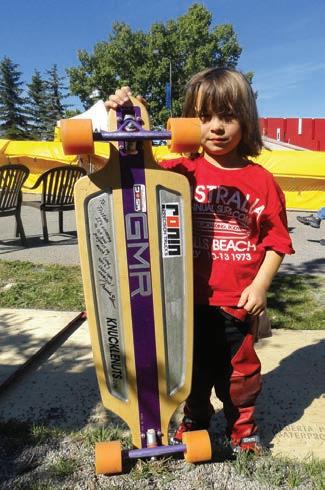 Matt Mullin Cincinnati, Ohio
Matt Mullin Cincinnati, Ohio
When I was 5, my brother was given a skateboard for Christmas. I used it for a while but got bored with it. It wasn’t until late 2010 that my brother showed me a longboarding video. As soon as the video ended, I was hooked on longboarding. I knew it would be my next hobby. Eventually I borrowed my friend’s longboard for a week and carved my way though a parking lot. Even though I didn’t know how to stop, I kept feeling the need to go faster.
Two weeks ago I bought a Drifter complete longboard (pintail) as a cheap starting board . The guy in the store was so cool he gave me a 25% discount.
I began studying loads and loads of YouTube videos about longboarding tricks and tips. I tried a manual, but I still need to work on my balance; I tried a standup slide but I ended up stacking; and then I tried a nose manual, which didn’t end too well, either. Finally I found a trick that looked easier than carving through the streets – the early grab.
I love the magazine, especially the article about the ISSA world championships. And I am really looking forward to the next section of the Moroccan skate parade tour!
Tom Victoria, Australia
Finally!

It’s only $0.99! And you can enjoy the full edition plus extras.
For $3.99 you can get a full year – 6 issues.


34 CONCRETE WAVE HOLIDAYS 2011 LETTERS >>
EJ
Photo: Michael Brooke
CONCRETEWAVEMAGAZINE.COM You can now read Concrete Wave on your iPad® ..


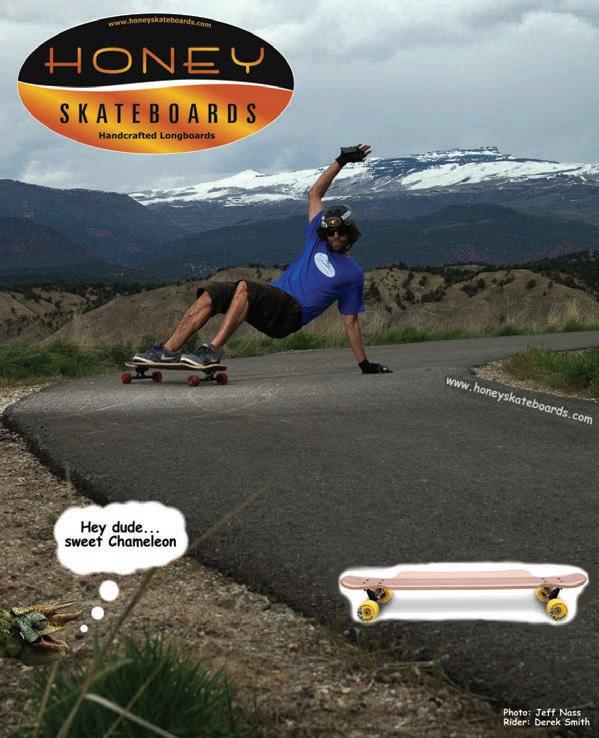
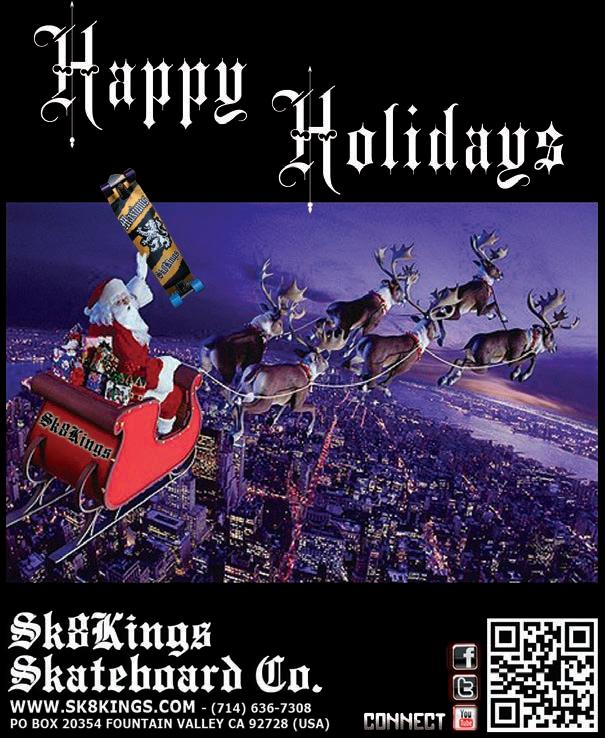
36 CONCRETE WAVE HOLIDAYS 2011
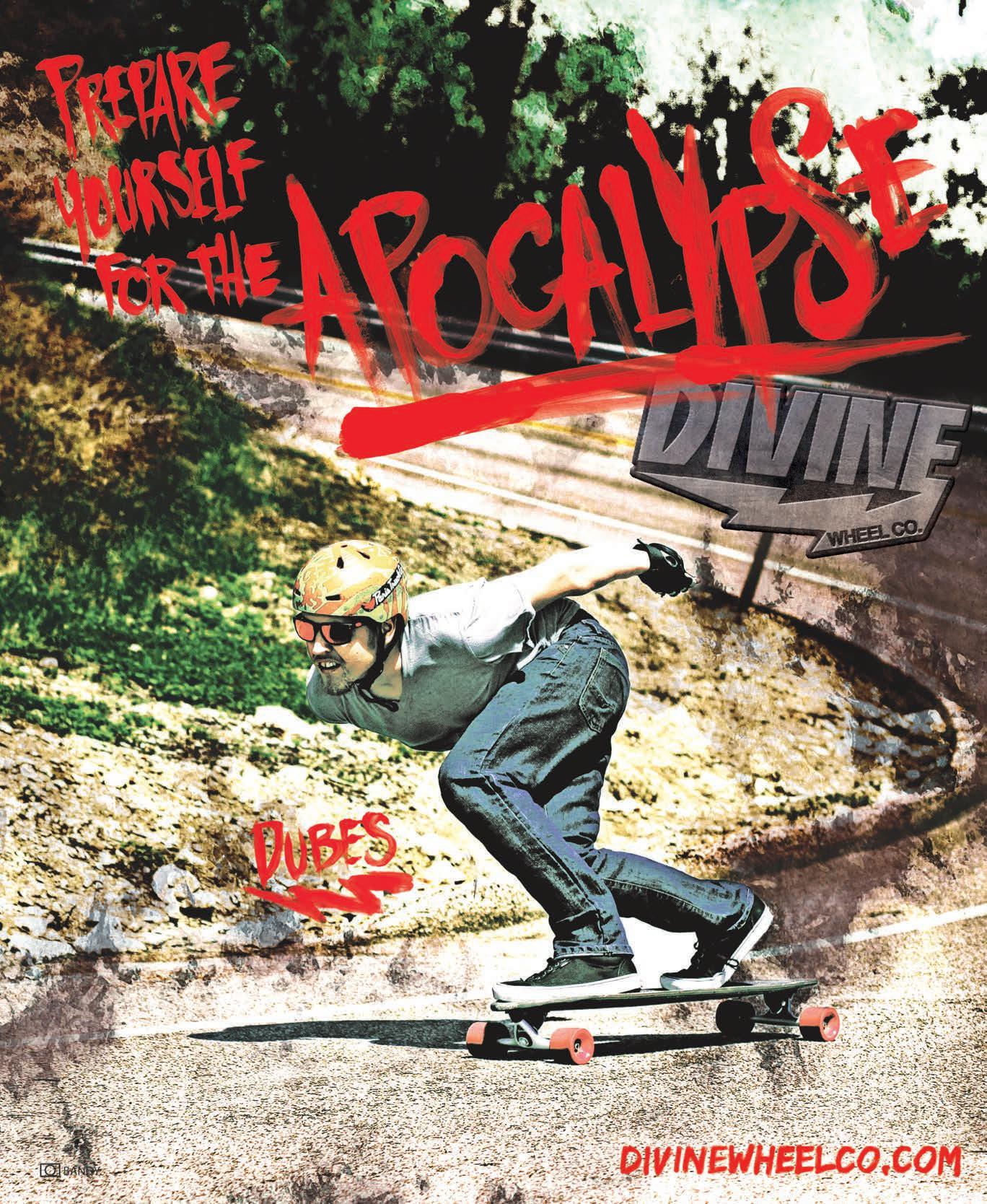


38 CONCRETE WAVE HOLIDAYS 2011

CROOZERBOARDS
landyachtz.com

BUSTIN
Out of SoCal, CroozerBoards comes with the vision of resurrecting the “old school” longboards. They specialize in making solid wood custom longboards. Each board is hand crafted to be sturdy, but light. Their boards are built for cruising and downhill boarding. croozerboards.com

TIMESHIP RACING
“Get Lit” is TimeShip’s new nightsafety awareness effort to help skaters be more visible while riding in low-light conditions. Riding at night can be much safer; there is less traffic, and you can see cars coming from a long way off. The basic kit comes with TimeShip reflective stickers for your helmet, highvisibility strips for your board and a blinking tail lamp for your rear truck or helmet. Upgrade your visibility with our adjustable-brightness headlamp, which slides right onto your helmet. timeshipracing.com
LANDYACHTZ
Landyachtz has introduced a new partner team called the Legion of Shred. This team will feature international riders from around the world and showcase their talent through videos. Pay close attention for some new faces that might be joining the Landyachtz Legion of Shred.

William Royce, a rising star on the downhill circuit, has earned himself a signature pro model wheel from Bustin Boards. Following Will’s vision for a winning shape, the new wheels use the same ultra-high-rebound urethane from Bustin’s Premier line and combine it into a 75mm form with an extra-large contact patch and sharp 90-degree lips. Limited availability at bustinboards.com


XYLAN
Rick Tetz and Pat Montgomery have combined their expertise to create Xylan Longboards. Their flagship race board is the Sleeper drop-down. It features a ¾” drop with a “Ride-able” ramp and a “Hot Pocket” right before the transition from the 9.4” x 36” deck platform to the truck mount. It is totally computer cut on a fiveaxis CNC machine and features the famous “Slide Through” design. downhill@xylanlongboards.com

and the composite engineers at Sandwich Tech. The full carbon fiber construction and SparCoreTM technology make the Spark incredibly light (1.3 lbs.) without giving up any torsional rigidity. The 20”/21” wheelbase options allow adjustability. Continuous gas pedal concave extends into the nose and tail for locked-in grip. sandwichtechboards.com
ATOBE
Introducing the new Atobe Bonneville 76mm x 82A in lime green and the brand new 70mm x 82A Bonneville in pacific blue. The wide contact patch and harder duro of the new Bonnies work great as longer-lasting freeride wheels and great long-distance pushers. Mix and match colors and duros to make the perfect setup. churchillmfg.com
SURF-RODZ/BUSTIN
WEFUNK


The Drop and Pin expand the growing Wefunk lineup. The Drop 7-ply or 8-ply bamboo/Canadian maple deck measures 38.7” x 9.4” and offers a 9mm concave, 8mm camber and a generous platform. A very versatile deck for cruising, carving, freeriding and also downhill beginners. Friends of classic shapes grab the Pin (38” x 9”). Perfect cruising and carving on 7-ply bamboo/Canadian maple, with 8mm concave and 8mm camber. Also available in sky blue. wefunk.de or seasondistribution.com
CADILLAC
EARTHWING
The Earthwing Road Killer was a joint collaboration with team rider and engineer Adam Auger from Vancouver, BC. The multi-radius .625” dropped-platform concave features a “W” bubble that runs from instep to instep, creating a locked-in stance and providing rigidity in all directions. This deck isn’t for everything, or everyone, but is the best for what it was designed to do. earthwingskates.com
SANDWICH TECH
The Spark hybrid slalom deck is the result of a collaborative effort between champion slalom racer Lou Statman



Bustin Boards teams up with Surf-Rodz to create a collaborative creation with a sexy color scheme. The Bustin INDeeSZ trucks are fitted with Surf-Rodz blue medium barrel/cone SolidZ bushings, offering a fairly strong center with tons of lean once the turn is initiated for sweet carving, pumping, and slideZ. Tuned and ready for $119.00 at bustinboards.com
MAKAHA
The parent company of World Industries, i.e. distribution, announces they have reached a multi-year license agreement to produce products in the skateboard category with the iconic skateboard brand Makaha. They plan to launch their initial offering alongside the Makaha documentary Makaha: The Story of the Originator in Spring 2012, with a small early offering slotted for Holiday 2011.

Inspired by street racing and drifting, the Cadillac ’Khanas will redline any rider to skate faster and slide smoother. A high-performance urethane compound and precision core create out-of-the-box slideability and increased durability for more runs and a longer lifespan. The ’Khanas are the first slide wheel from Cadillac and are offered in 70mm 83A. Get some and check out the video at fullcircledistribution.com
AM WOOD
AM Wood Skateboards are constructed using the latest in green technology using Canadian maple, hemp fiber reinforcement, woven basalt composites and bio-epoxy resins. Combined, these materials produce decks with both performance and fun at heart. Each board is built in the Canadian countryside, individually pressed and finished by hand to the highest standards. amwoodskateboards.com

40 CONCRETE WAVE HOLIDAYS 2011 CONCRETEWAVEMAGAZINE.COM NOTEWORTHY >> PRODUCTS, PEOPLE, EVENTS
BUCSU
The Bucsu sisters based out of Penticton, BC, have handcrafted an inspiring array of boards that cater to every level of riding ability. With a continuously growing selection of speedboards, cruisers and everything else in between, you are sure to find a deck that complements your style. Look out for their new downhill/freeride board to hit the market in season 2012 – sure to put a new spin on freeriding. bucsuboards.com
HOLESOM
bushing, giving it more energy. Facing rings on the top and the bottom give extra grip to grab onto the baseplate and the bushing. No movement equals straight power. It’s made in the USA in a one-inch size and machined from 303 stainless steel. Contact Thane Magee at thane@griffinskateboards.com
STRANGE HOUSE
longboard that serves as functional art combined with a unique ride. Each board comes with a wall cleat for displaying it. originalskullboy.com
MADRID
After eight years of searching for the perfect location, StrangeHouse finally found it in Central Virginia. You can now come visit them in person:StrangeHouse Skateboards, 207 W. Main St. Louisa, VA 23093. Order online, by phone or in person. International buyers are always welcome. The full service shop for the entire planet. Call 540-967-GRND (4763) or visit strange-house.net.
DEADBOLT

materials in their product. The decks are eco-friendly, durable and built to perform. But what really sets the company apart is the option to choose what outer layer of wood you want on your deck. blacklongboards.com
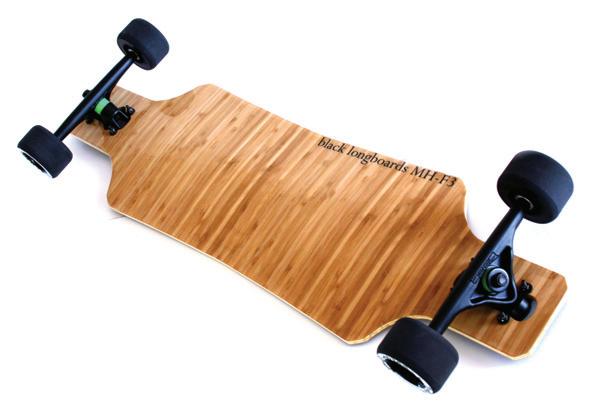
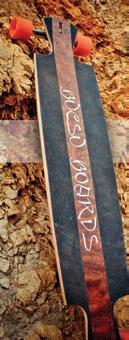
Holesom pucks are made from Delrin® in the shape of a “squircle” and are symmetrical (top and bottom, flippable). They have holes all the way through for less resistance and lighter weight, and they are scented! The pink pucks smell like bubble gum, the brown pucks like cocoa butter, and the glow-in-the-dark ones like … Holesom. holesom.com

GRIFFIN
Fibretec is a small Swiss skateboard manufacturer specializing in highquality downhill, custom and carving boards. Their latest model is called the Flying Pan, and it’s great for sliding. Through the lower ground clearance you get the ultimate freeride and downhill feeling. fibretech.ch

BOMBORA
Griffin Skateboards noticed there was a problem with the standard washer cups on all stock skateboard trucks today. The Grade 8 washers and Grade 8 kingpins, combined with too-soft bushings, are hanging up the kingpin and snapping it. Old traditional washer cups surf around on the bushing and the cup and on the kingpin too much. Griffin’s center sleeve puts the pressure on the center of the
Bombora has been making waves recently in the longboard industry with their fresh designs and their contributions to the local skate community. They have dedicated their first two years to giving every penny back to the community by hosting/sponsoring many epic events and by signing three of the sickest riders they could find. bomboraboards.ca

Deadbolt Pads feature thick caps (almost ¼”) and 2” of foam padding. They also have a cap locking system that allows them to use different types of materials for the caps. The high-friction cap is made of clear polycarbonate (Lexan®); it slides much slower due to a higher amount of friction. This is best used for skating disciplines where you want to slow your bails down, i.e. slalom and freeriding. The other cap is nylon, which has less friction and slides better. deadboltpads.com

SIMS
The Blade 39” is the latest product from Select Distribution. The deck features reactive recoil flex that gives maximum carving power. Comes complete with Sims wheels. selectsk8.com
ORIGINAL SKULLBOY
All new Skullboy New Jersey longboard decks are here! Partnered with Chris Stone of Stone Graphics, we’ve created a




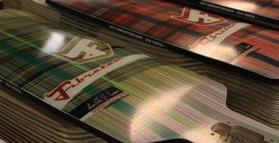
Behind every skate graphic and every pro model, there’s an inside story. In the late ’80s, the X-Team Rider was introduced based on nothing more than rebellion –a rebellion against the establishment (and let’s leave it at that). Available in four incredible colorways and cut from the original concave designed in the early ’80s, this Madrid classic is ready to conquer any concrete jungle and then some. fullcircledistribution.com
CARVER
Carver Skateboards is pleased to announce the appointments of Abraham Paskowitz as global sales director and Lance Dalgart as creative director and IT guru. carverskateboards.com
FIBRETEC
HOLIDAYS2011 CONCRETE WAVE 41
Ryan Rubin of LongboardLiving.ca holds up his recently introduced longboard carrying bag.
PRODUCTS, PEOPLE, EVENTS
BRISTOL CANCER FIGHTERS
By Jo Coles
Photo: Rich Auden
The Lush Longboards Bristol Board Meeting raised more than 5,000 pounds for the Macmillan Cancer Support. They had just over 200 skaters, ranging from ages 11 to 60, and everyone had a fantastic day. Mikey Johnson (skate friend to many at the event) was diagnosed with bowel cancer in February 2010 and was told by doctors that he only had just a few weeks to live. He has been receiving amazing care from Macmillan Cancer Support, and this year we were totally amazed when he joined us for the skate.

HEAVY IN THE STREETS
HOLIDAY GIVING GUIDE
This year, we decided that rather than feature specific products you can give to the longboarder in your life, we would provide you with two profiles of some very worthwhile skate charities you can donate to.
Board Rescue
Heavy in the Streets (H.I.T.S.) proudly produces the #1 site for longboarding videos. With more than 4,000 videos, you can find new tricks and styles from different riders across the globe. Check back on a daily basis for fresh videos, submit your own with ease and contribute toward the growing community. hitslongboarding.com

HACKETT-SLASH FEST
The inaugural HACKETT-SLASH FEST is taking place to benefit legendary skateboarder Dave “HACKMAN” Hackett. Dave was recently hospitalized for emergency colon-cancer surgery, during which doctors successfully removed a cancerous tumor the size of an orange. In addition to that, they repaired the perforated colon and had to remove his appendix as well. Total cost: more than $100K. Due to the need to consolidate all current funds to a single new account, David’s insurance policy got lost in the shuffle and lapsed. It wasn’t until after the surgery that he was informed he was not insured. The most direct and helpful way to help is simply to send a check or contribute via PayPal. More info available here: hackettslashfest.com/ HACKETTSLASHFEST/DONATIONS.htm
Board Rescue is a 501(c)(3) non-profit public benefit corporation. They partner with the skateboard industry to supply skateboard decks, trucks, wheels and safety equipment to organizations that work with children, targeting lowincome and at-risk youth. Board Rescue aims to do the following:
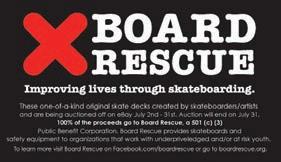
•Build self-confidence
•Adapt to a variety of environments
•Interact with others in a positive manner
•Demonstrate that hard work and dedication create results
•Reap health benefits of outdoor physical activity. boardrescue.org

Girls Riders Organization
Girls Riders Organization (GRO) is a nonprofit group launched in 2006 on a mission to inspire, educate and support girls in action sports. GRO tours the country, bringing nonexclusive events and opportunities designed for females
by females to more girls coast to coast than anyone. All girls, all ages and all skill levels are encouraged to participate. GRO strives to make skateboarding more accessible, providing equipment, experienced instructors and a safe and positive environment. Through their ongoing network of support, they are building membership-based Local GRO Crews to further community involvement and provide well-rounded opportunities all year long. girlsriders.org
T.A. IN MICHIGAN
Tony Alva dropped by the recently opened Smokin Mad Love shop in Grand Rapids, Michigan. Pictured are Blair Butterworth, T.A. and John Butler of SML.
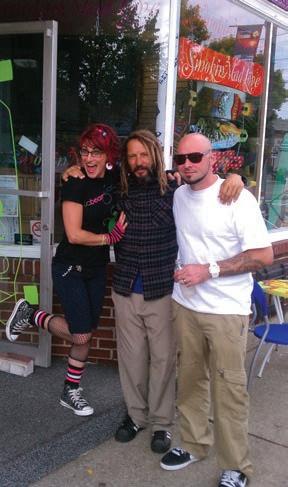
CULT/LUSH/SABRE
Cult Wheels, Lush Longboards and Sabre Trucks have teamed up to form a distribution alliance and online shop, powered by the Shopatron platform. Skaters in the USA, Canada, the U.K. and Germany can now buy direct from the Cult Wheels, Lush Longboards and Sabre Trucks websites, and their order will be fulfilled by their nearest participating stockist. It means that orders are fulfilled much faster, and the brands support their local longboard retailers and distributors. vandem-mfg.com
DOMINICAN REPUBLIC CLINIC
By Pam Díaz
The first longboard clinic of the Longboard Academy was honored to be opened with Louis Pilloni and James Kelly. They were invited to the island by Manuel Pacheco and me (Team Rider and Ambassador of Longboard Girls Crew).
The clinic was held on the morning of Saturday, Oct. 1, using the beautiful and unique viewpoint of “Cap Cana” as a stage. More than 50 people of all ages were there to practice, observe, take pictures, share, meet and have fun! Before the event, we went out in our neighborhood for a morning session.
At the clinic, the guys commented about the sport, equipment, safety, recommendations when out riding and basic tips to develop in the sport, followed by an open forum for questions and answers. After that, we all went to the track that ran nearby and started to ride with them.
Louis and James impressed all present with their skills, and anyone who wanted to learn to do something or had some other concerns could ask and receive their attention and detailed explanation.
After the clinic we had a little break and a visit to Juanillo Beach, located at Cap Cana, where after lunch we prepared for a downhill race and slide jam. CW
42 CONCRETE WAVE HOLIDAYS 2011 CONCRETEWAVEMAGAZINE.COM NOTEWORTHY >>
Louis Pilloni and James Kelly
Now that's a support group! Bristol Board Meeting.

Street San Luis Obispo
805.801.6653 ccmfjay@yahoo.com
Sonoma Old School Skate and Surf 1001 Broadway Sonoma 707.938.5500 skatesos.com
Cellular Skate 287 Mountain Ave Upland Tel: 909.981.8856 cellskate@verizon.net
Maui and Sons
1415 Ocean Front Walk Venice Beach mauiandsons.com
COLORADO
All Board Sports 1750 30th Street Boulder 303.415.1600
Diabolical Boardshop 4255 S.Broadway, Englewood
CONNECTICUT
Skate Pusher 57 McIntosh Drive Bristol 860.593.4550
Skate Valencia 68 Leonard Street, Bristol 203.524.4675
GEORGIA
Feral 190 Park Avenue, Athens 706.369.1084
Skate Madness 13800 Hwy. 9 N., Ste. D 145
Alpharetta 770.410.3456 skatemadness.com
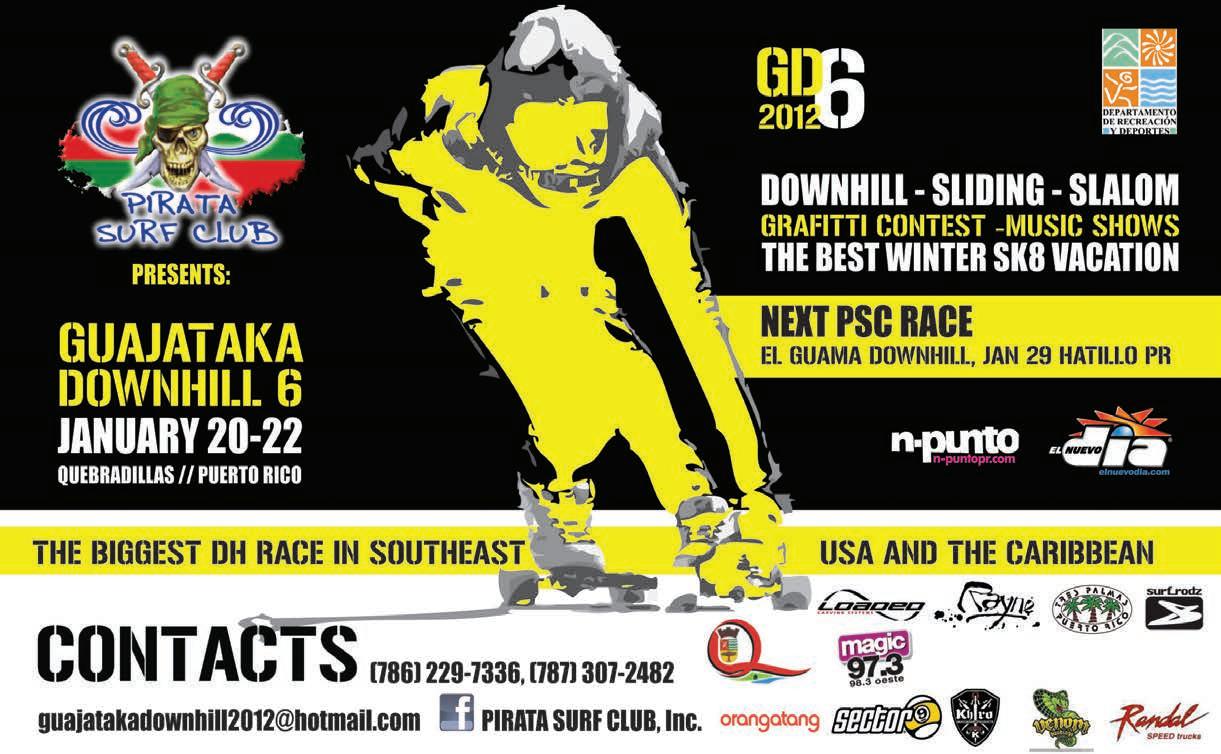
Woody’s Halfpipe
6135 Peachtree Parkway Suite # 603 Norcross
LOUSIANA
Board Lords Mall of Louisiana, 6401 Bluebonnet Blvd.
Suite # 2044, Baton Rouge, 225.769.1222
MASSACHUSETTS
MICHIGAN
Ollies
MINNESOTA
Old School Skaters 1119 NW 2nd Street Faribault 612.578.3326 www.oldschoolskaters.net
MISSOURI
Genesis Skateboarding 13 NW Barry Rd. #147 Kansas City 816.456.1307 genesisskateboarding.com
MONTANA
Wheaton’s 214 1st Avenue West Kalispell 406.257.5808 wheatonscycle.com
BlackTop Surfshop 176 5th Avenue West North Kalispell 406-752-6006
NEW JERSEY
Black Diamond Skatepark 400 Route 38 Unit 1610 Moorestown NEW MEXICO
Koa Nalu Surf Shop 8254 Menaul Blvd NE Albuquerque 505-332-SURF koanalu.com
Timeship Raicing 825 Early Street Suite H Sante Fe 505.474.0074 timeshipracing.com
NORTH CAROLINA
Soul Ride Skatepark 6049 Victory Lane Concord 704.454.7433
soulrideskates.com

We’re Board Inc Skatepark and Shop 1423 North Church Street, Ste 104 Burlington NC 27217
OHIO
Old Skool Skateboards 19E College Avenue, Westerville roxtar55@hotmail.com
OREGON
The Uprise 1110 NW Van Buren Ave, Corvallis 541.754.4257
541.480.4254 thelongboardstore.com
The Longboard Store 1238 SW Wheeler Place Bend
541.480.4254 thelongboardstore.com
Daddies Board Shop 7126
Island, BC 250.537.4984 saltonskate@canada.com
Switchback Longboards 4385B Boban Dr. Nanaimo 250.751. 7625
ONTARIO Hammer Skate Shop 2225 Queen Street East Toronto, 416.698.0005 Hogtown 401 King Street West, Toronto 416.598.4192 McPhails 98 King Street North, Waterloo 519.886.4340
QUEBEC DLX/Deluxe 2480, chemin Ste.Foy Ste.Foy 418.653.0783 dlxdeluxe.com
OVERSEAS
AUSTRALIA
Boardshop Australia — boardshop.com.au 04 15883371 — friendlyfolks@boardshop.com.au
Cre8ive Sk8 — 5/244 Ross River Road
Aitkenvale — Queensland 4814 Australia
BRAZIL Ultra Series Skate Shop Tel.:55(41)3023-2480 — ultraseriesskate.blogspot.com
FRANCE hawaiisurf.com
GERMANY seasondistribution.com, concretewave.de
Hackbrett Longskates Im Wechselfeld — 12 St. Peter hack@customlongskates.com
longboarders.de — Gustavstrasse 49 90762
Furth kontakt@longboarders.de — Tel: 0911 9772500
JAPAN
Y & T Fussa Fussa — 2348 Fussa Fussa City — Tokyo — 1970011
Clover Skateboard Shop — 1-21-3-1201 Befu Jyounan Fukuoka 8140104 — Japan
NETHERLANDS
Sickboards
Marcelisstraat 80b
2586RX Scheveningen
The Netherlands
31-70-7533548
Sickboards.nl
NEW ZEALAND Serenity Island Surf & Skate Café 202a Wainui Road — Gisborne — serenityisland.com
Ultimate Boards 3/1043 Great North Road Point — Chevalier — Auckland 1022 New Zealand — ultimateboards.co.nz
UK octanesport.com
skateboardsofchoice.co.uk
Bath, United Kingdom — Tel: + 44 1249 715811
Sk8s Go — General Juan Cano 40 — Colony San Miguel Chapultepec — Mexico, D.F 52-55-58132448
Soul dh Alameda Picaflores — 245 San Borja — Lima 41 — Peru
Skate of the Nation — Unit 6 GYY Building # 1 Tomas Morato 1100 — Quezon City, Metro Manila, Philippines
Indiana Sports GmbH — Elbestrasse 14 — Wald, 8636 Switzerland — Contact: Christof Peller
ON.LINE RETAILERS allboardsports.com blackholeboards.com covertskates.com
coldwarskateboards.com
daddiesboardshop.com
denverskateshop.com ffashop.com
genesisskateboarding.com longboardskater.com longboardshop.de longboardstore.com longboardskater.com
milehighskates.com
motionboardshop.com
oldschoolskates.net pressuredroplongboards.com sidewalksurfer.com sk8supply.com socalskateshop.com tactissk8.com tailtap.com
vslboardshop.com
44 CONCRETE WAVE HOLIDAYS 2011 CONCRETEWAVEMAGAZINE.COM Want to know where to find Concrete Wave мagazine? Would you like to find all the amazing skate gear you see in these pages? Look no further than our shop list. If you’d like to have your shop listed here, it’s easy. Simply send a check for $115 to Indaba Group PO Box 1895 Carlsbad California 92018 or PayPal tailtapinfo@yahoo.com, ph: 760-722-4111. You’ll get 10 copies of 5 issues mailed out along with this complete listing. For international rates, please email us. Yes, shipping is included. If you think your local shop or park should be carrying Concrete Wave, email mbrooke@interlog.com. SKATEBOARD
ARIZONA Sidewalk Surfer 2602 N. Scottsdale Road Scottsdale 480.994.1017 admin@sidewalksurfer.com • www.sidewalksurfer.com CALIFORNIA IFYI Inc 1083 Bedmar Street Carson Board Gallery 3333 Newport Boulevard Newport Beach 714.902.3769 Cellular Skate 6787 Carnelian Street Alta Loma 909.941.1004 Mike McGills Skate Shop 335 First Street Suite #S Encinitas 760.943.7730 Ollie Angel 235 Palm Avenue, Imperial Beach 619.575.7357 Mike’s Bike Shop 5507 West Pico Blvd. Los Angeles 323.935.4338 Viva Skateboards 1709 Howard Road Madera 559.664.8997 Bill’s Wheels Skateshop 1240 Soquel Avenue Santa Cruz 831.469.0904 Purple Skunk Purpleskunk.com 5820 Geary Blvd. San Francisco 415.668.7905 CCMF/Toyland 1260 Palm Street San Luis Obispo, CA 93401 805-801-6653 ccmfjay@yahoo.com The Trading Post 622 Upham
SHOPS LIST
Boardroom 6 Armory Street Northhampton 413.586.8857
Skate Shop 120 ½ E Maumee Adrian
517.265.2031
NE Sandy Blvd., Portland 503.281.5123 daddiesboardshop.com Gorge Performance 7400 Southwest Macadam Avenue Portland 503.246.6646 The Mountain Shop 628 NE Broadway Portland Rip City Skate 1510 NE 37th Ave. Portland PENNSYLVANIA Rayzor Tattoos 4 South Front Street Steeltown RHODE ISLAND Seven.Ply 3 Canal Street Westerly 401.348.0656 TENNESSEE Planet Sk8 7024 East Church Street Suite 2 Brentwood 615.377.1947 Sk8sations Skate Shop 3032 N.John B.Dennis Hwy. Kingsport 423.245.0994 tbec@charter.net VIRGINIA EastCoast Boardco. 10358 Fairfax Blvd. Fairfax 703.352.4600 x:8 213 25th Street Va Beach Black Cat Skateshop 1325 A West Main Street, Charlottesville 434.244.0014 WASHINGTON Gravity Sports 126 Rainier Ave South Renton 425.255.1874 Mountain Goat Outfitters 12 W. Sprague Avenue Spokane Motion Boardshop 17230 Bothell Way NE Lake Forest Park 206.372.5268 motionboardshop.com ALBERTA Avenue Skateparks 9030.118 Avenue NW Edmonton 780.477.2149 Easy Rider 4211.106 St., #153 Edmonton 780.413.4554 Pipeline Surf Co 780.421.1575 Comasports 10B-200 Barclay Parade SW 403.233.8841 powerinmotion.ca BRITISH COLUMBIA Area 51 191 Station Street Duncan 250.746.8869 a51.ca Raven Skate Shop 411 Campbell Street Tofino 250.725.1280 ravenskateshop.ca Salton Rides Saltholidays

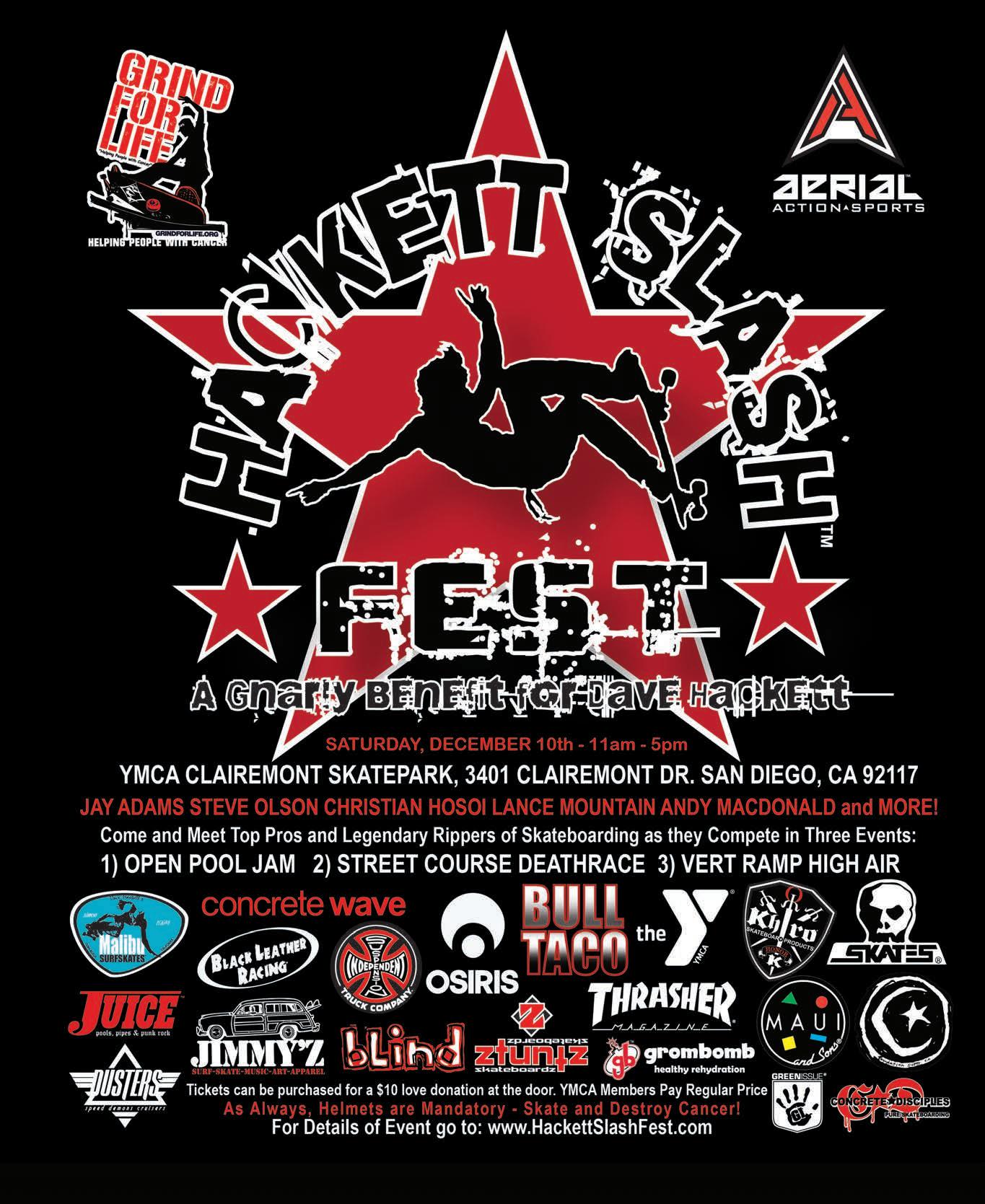


HOLIDAYS 2011 CONCRETE WAVE 47


RODNEY RIDS HIS BODY OF SCAR TISSUE, AND THE FIRST STANCELESS SKATER
ALMOST’S ROUND 3 premiered in London in 2002. Rodney Mullen sat with Ryan Sheckler and his teammates, watching his footage and harboring a hard, dark secret: Skateboarding was over for him, yet again. Halfway through filming, Mullen’s right leg—his ollie leg—began to work improperly. First it was aches and cramping, followed by full-time seizure and near-constant pain. Rolling out of falls became difficult, and he found it hard to sleep through the night. Due to temperature change he couldn’t sit in the window seat of the plane while the team flew from the United States to Australia to Europe to promote the video.
From Tony Hawk’s sports medicine doctor and the man’s brother, an East Coast radiologist, Mullen learned that years of skating, specifically years of his back foot slipping off the tail, had built up scar tissue that over the decades had wound through his right leg and was now pulling his femur into his pelvis. He started feeling a grinding sensation every time he stepped out of his car. Doctors explained that the ceaseless grinding was due to his bones producing calcium, and that as the condition worsened, the head of his femur would be ground off completely, and the bone would eventually fuse to his pelvis. This would shorten his right leg; he would walk with a cane. Doctors said the unremovable scar tissue resembled that of frontend-collision victims whose legs had been driven back up into their hips.
“I couldn’t tell anyone because I knew this was it,” Rodney remembers. “And my skating, very much like we talked about with Ryan, it defined who I was, and it’s pretty scary—even being as old as I am—I mean I’m a grown man, and I shouldn’t have to rely on my skateboard like it’s Linus’s blanket, carrying it around for security. But that’s all I’ve ever known. And that’s been me so long—to take that away ... there’s a lot of unknown in that.”
Mullen knew he couldn’t top what he’d done in Round 3 to his satisfaction, and he could never be “that ugly old guy people feel sorry for because he’s holding on to a dream. So let it go. Just be a man and let it go and disappear. Essentially that’s what I tried to do.”
Mullen told his sponsors and coworkers he was going to take some time off, but soon found himself
stretching and “prying myself apart,” trying to rid his leg of the binding tissue he could feel inside of it.
“You get a sense of what’s foreign in you, holding you. And you know it’s in your muscles—and when you’re stretching it that far, you do sense that foreign thing.” Mullen wrapped himself around fire hydrants so their stems would dig into his tissue. He twisted his leg into the wheel well of his car, and used screwdrivers or knobs atop chain-link fence poles to apply pressure to the scar tissue before he’d stretch against a shelf or shopping rack. It was the chemotherapeutic idea of destroying a little of the person and a lot of the toxin. Little by little, he began to remove the scar tissue.
“It tears out like chewing gum that’s kinda old, dry, and it’ll stretch and stretch and stretch and that’s when you’re just giving up—and then [there’s] a ‘pop.’ If you’ve ever broken bones you get a heat sensation, then a little nausea, then you get this crazy high.”
Every time he tore out a piece of scar tissue, Mullen says he would find himself a bit more free. He went on for three years, pressurizing, stretching, tearing, then trying out his balance on his board. Sessions were always at night and lasted up to six or eight hours. The process improved his flexibility but also freed his leg of scar tissue, which Mullen refers to as “material.” As the material was flushed from his body, he would wake up sick and dehydrated with chapped lips. He urinated frequently, and it always smelled terrible.
His flexibility was improving, but he says his hip still felt like a stick shift instead of a ball and socket. A turning point came one night in the valley around 1 a.m. Mullen was under his car with his leg in the wheel well, twisting so hard that he was up off the ground, “bouncing,” he says, on a specific area of pain in his hip. “You have to get to that stage where you don’t care. And that’s when you make it. And guys like Ryan and Jamie Thomas and Jeremy Wray and Bryan Herman, they’re all ninjas at that stuff.”
Suddenly Mullen heard a loud POP.
“It was like when I broke my ankle,” he remembers. “Like a tree branch. And my body hit the ground—not all of it, because I’m stuck in the wheel well, but the rest of it. And I looked up, and there was snot and tears on my
hand. And I got that crazy high and I pulled myself out the best I could, lying on the ground going, ‘God, what’d I do, what’d I do, what’d I do,’ and I got up. The pain goes away in twenty to forty seconds because you’re numb. So I get up slowly, and for the first time in four years, three years, I felt it move like a ball and socket.”
He’d broken the bit of calcium that had formed between his pelvis and femur, which was keeping the two from moving like a ball and socket. “I got on my skateboard and was like ‘I did it! I did it! I did it!’ I went home, slept for fourteen hours. I vomited. And at that stage, I kept going.”
Mullen tore out the remaining scar tissue, and by 2007 was skating at his “normal level” again. But by then he’d lost interest in adding to the dizzying, unique lines exhibited in Round 3. Flipping a different way out of a primo slide (when the board’s sideways and the rider’s on the wheels), he said, was just diminishing returns. “Polishing a turd.” But the past three years had given him a revelation: So much scar tissue had grown in his right leg because of the asymmetrical nature of the sport. His stance is regular, and so he was disproportionately using his right leg, where the injury occurred. Now that he’d undone the nature of his stance and was starting clean, he planned to approach skateboarding not with a new stance, but with no stance at all.
“We’re flesh and bone, and the flesh wraps around your bones like a thick wetsuit,” he explained. “And if I can rotate or change the way my flesh is around the bones by manhandling it—again, I’m not a tough guy, but I’ve got my pain threshold—then I can change my stance.”
Mullen began only skating switch, goofy-footed, doing hundreds of thousands of switch tic-tacs, and he says, forming two right legs.
After the plateau there was, again, a spike, and Mullen found himself doing things in his switch stance he could never do regular, “because my center was at a new place.” CW
Reprinted from The Impossible: Rodney Mullen, Ryan Scheckler, and the Fantastic History of Skateboarding ©2011 by Cole Louison. Published by Lyons Press, an imprint of Globe Pequot Press, Guilford, CT.

50 CONCRETE WAVE HOLIDAYS 2011
BOOK EXCERPT >>


HOLIDAYS 2011 CONCRETE WAVE 51
A WINTER Survival Guide By

 CLINT CHEREPA
CLINT CHEREPA

Istarted to skate when I was 8 years old. My first board was of the plastic banana board variety. It was soon replaced with a “Max Headroom” department-store special; at least it was made out of wood. I spent summers skating at the newest spots, panhandling for soda money and lying dehydrated after getting demolished by a session in the midday sun. Fall always came too soon, and on its breath the scent of winter. As a skater in Canada, I did not look forward to the cold, ice-glazed streets and the dry asphalt patches seasoned with sand and rock salt. The seasons may change, but the desire to skate does not flee with the summer. The streets still call your name – the streets that you skate only in your dreams.

Skating is about dreaming and then putting a reality to that dream. Envisioning a 360 kickflip down a 10-step staircase is only a dream, until you land it and roll away. Learning how to ollie is a dream until, bang, you’re ollieing over garbage cans and grocery carts. Starting as a skater takes a positive frame of mind. If you can’t imagine yourself sticking the trick, you will not stick it.
In Thunder Bay, Ontario, where I started skating, we had plenty of time to dream as the snow filled the streets of winter. Surviving the winter wonderland took patience, genius and the ability to dream. We passed the hours watching skate videos – yes, on video tapes – until we wore them out. I think we even had some Beta skate videos. The Search for Animal Chin was on constant rerun, along with Wheels of Fire and Ban This. The worst part was watching a trick in slow motion over and over again, and then not having a patch of concrete in sight.
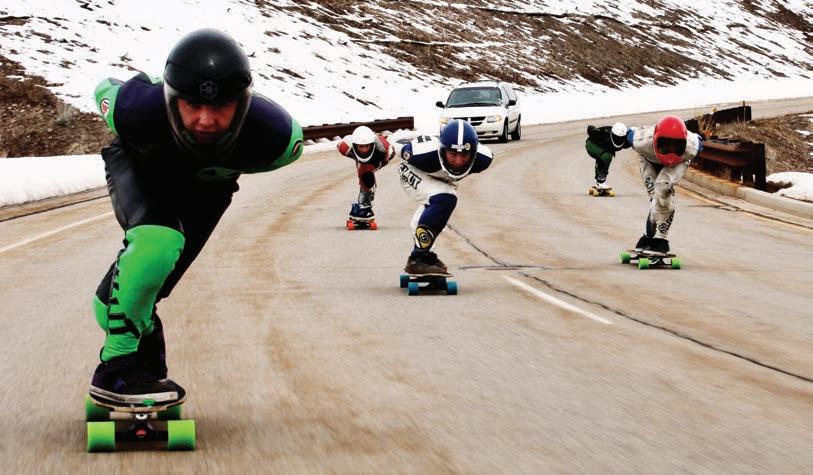
52 CONCRETE WAVE HOLIDAYS 2011
Zac Baca, Hayden Stirk, Micah Green, Scott Hamilton and Connor Wagner don’t let winter slow them down. Photo: Erik Daenitz
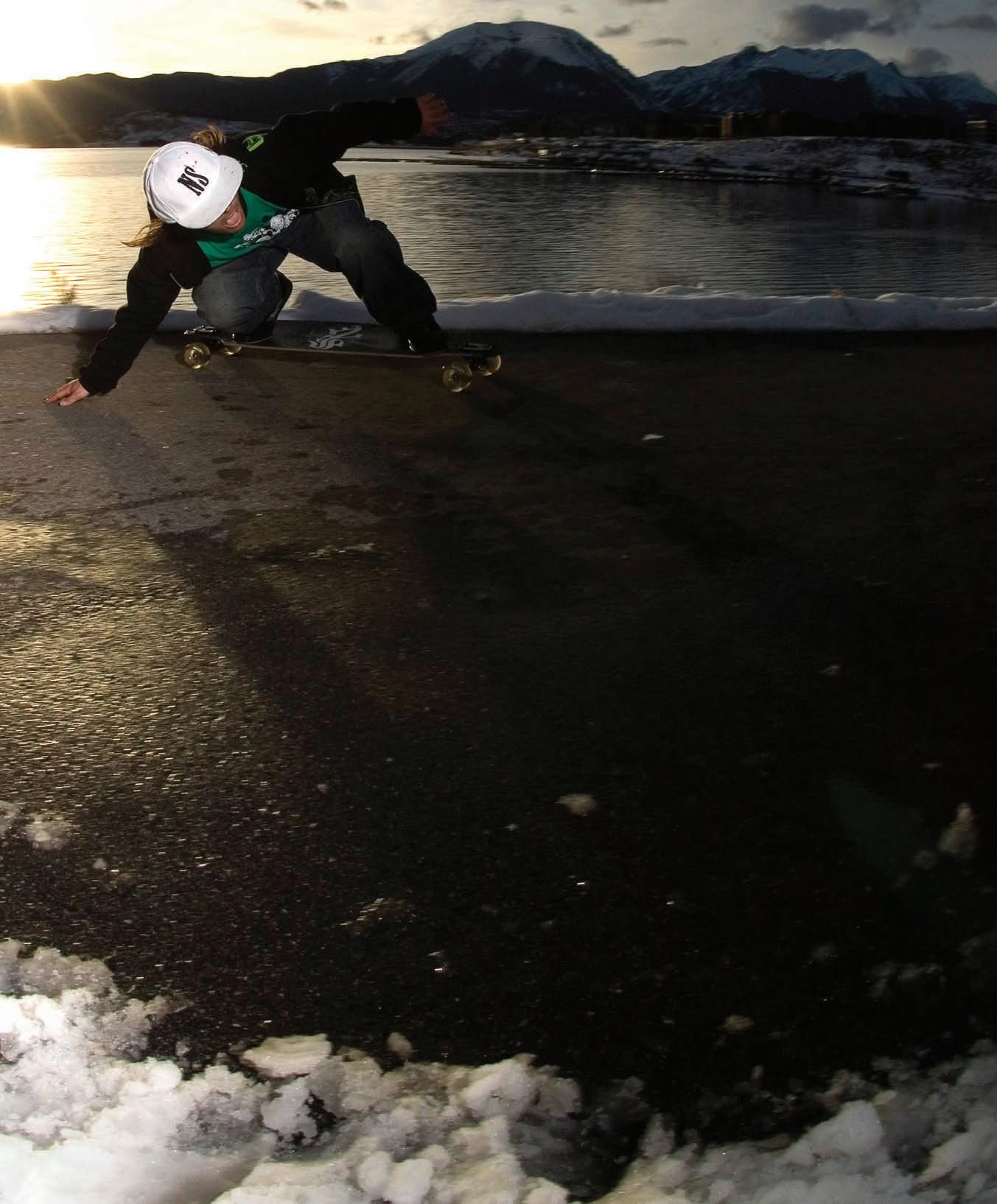
HOLIDAYS2011 CONCRETE WAVE 53
Scotty VerMerris doesn’t let a little thing like snow slow him down.
Photo: Jeff Nass
So we headed to the basements with boards in hand. Having a 6-foot-tall basement didn’t lend itself to skating, but we still found a way to practice kickflips, ollies and handplants. Handplants were especially practiced time and time again, mostly with pillows; we would wear ourselves out with every conceivable handplant variety. After the basement sessions it was back to the videos to see where we were going wrong.
California Cheap Skates and other skateboard catalogs became worn and dog-eared from use. We scanned the pages for the sweetest new decks. We all had our favorite pros and waited anxiously for their newest deck models. The kid that introduced me to real skating was a Christian Hosoi follower, but I was at first drawn to the original Lance Mountain boards. We circled and highlighted decks, trucks, bearings and wheels. The same was done in the clothing section of the catalog. After hours of scouring the catalogs, we would order our winter completes. It sucked ordering a complete, putting it together and letting the virgin deck stand solemnly in the corner.
It was time to search for the only dry spots in town: parking garages. Bundling up with toques, gloves, hoodies and jackets, we were off to the places where we knew we went only to be kicked out. But we had to get our new decks broken in; the wheels needed to be touched by concrete; the trucks yearned for waxed curbs. The parking garages were usually dry, but full of sand and salt. Still, it worked. Our sessions would average 10 or 20 minutes before security was called and we were cockily told to leave – run-of-the-mill, cliché kick-out sessions.
Back at home it was time to play Skate or Die. It was no Tony Hawk Pro Skater, but the vert ramp and jousting were insane, and the lingo was cutting-edge for the day. I don’t know of any other skate video games from that time period, except Skate or Die 2
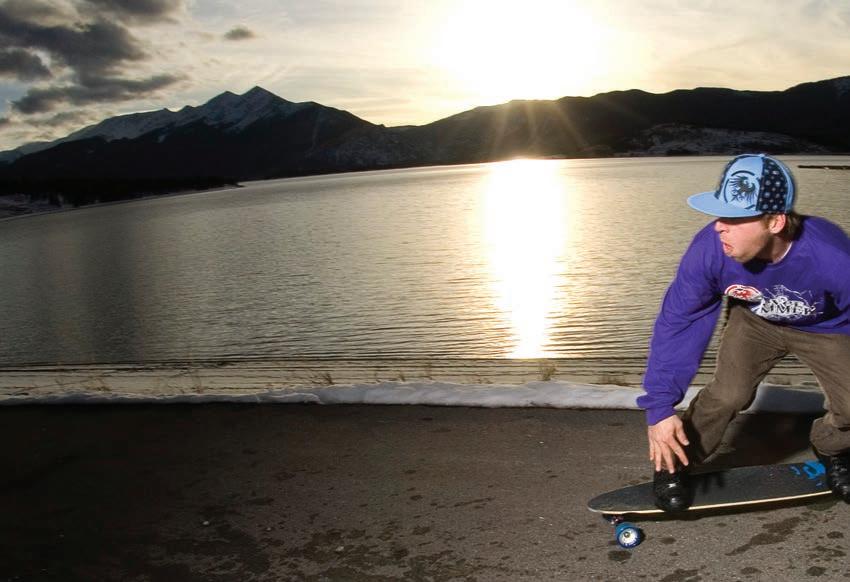

When my family decided to move to the United States, I thought we were headed to warmer climates and a longer skate season. I was wrong. The Upper Peninsula of Michigan had fewer places to skate and a winter to match Ontario’s. I made some skater friends, at least one in particular, and we started with the same winter survival plan, with one added asset: a makeshift mini-halfpipe in his barn. It was a sorry excuse for a mini, but it served, and we spent hours and hours sessioning. Even though we had a place to skate through the winter, the skating was different. The below-freezing temperatures caused it to hurt worse when you smacked your shins; kingpins broke regularly; and to be bundled up in layers of clothes stole the aesthetic from skating. When we were bored with the winter skating, we frequented the skate shop, buying stickers and new bushings and dreaming about owning one of the five


54 CONCRETE WAVE HOLIDAYS 2011
Paul Michalowski proves you can survive winter, assuming you have a clear path!
Photo: Lena Parkhomenko
Sure, it’s cold, but at least there’s sun! Cory Zila enjoys the last few moments of light.
Photo: Jeff Nass
to 10 decks in stock.

When snowboarding entered the scene, we never felt it was an adequate substitute for skating. It was similar enough, but not the same. It did take the winter edge off. Of course, we never paid to skate; indoor skateparks were a rarity. Going to the ski hill to snowboard was a little bit hard on the wallet of nonworking teenagers. Instead, we would find steep hills and build kickers that could keep us busy for weeks.
Winter was the time when non-skating friends would decide that they wanted to give this skateboarding thing a try. They would get all set up through the winter with a complete deck, shoes and maybe some pads. Then come spring they would find out that their dreams did not come true; they couldn’t ollie, kickflips were impossible, and falling hurt way more than they thought. If you worked it right, you could inherit their deck or buy it at a low price.
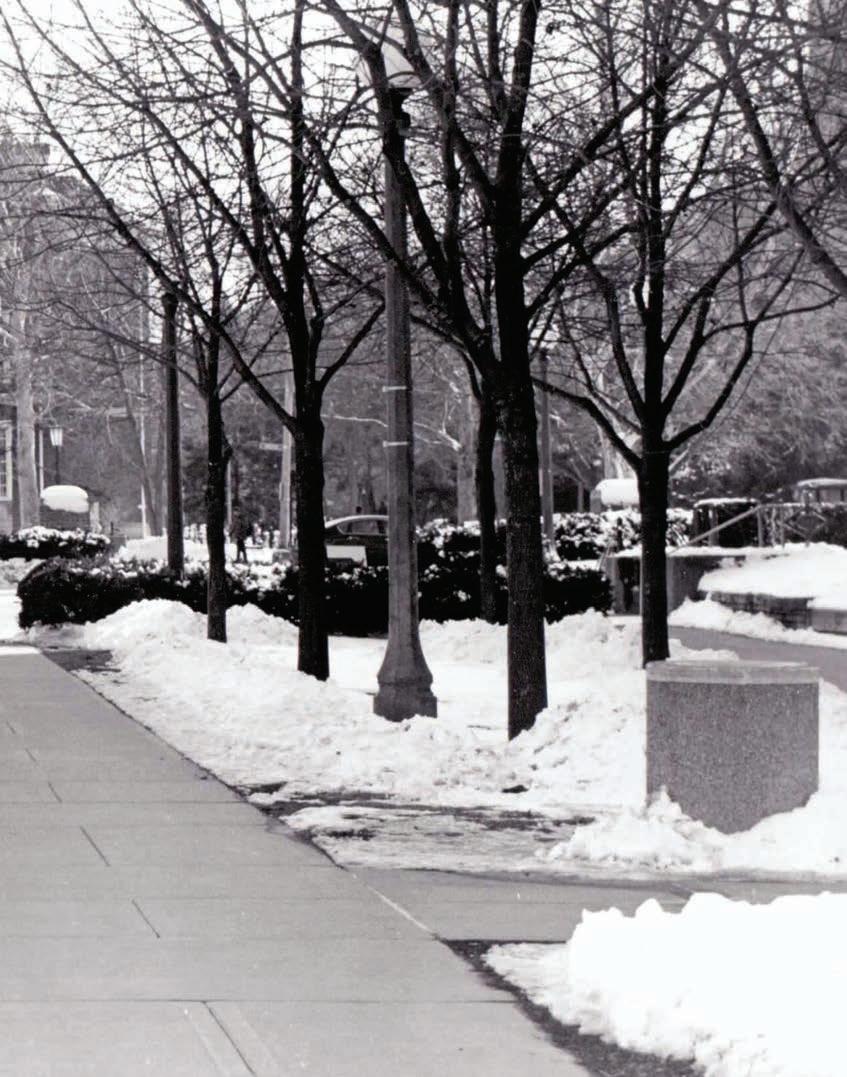
Since those early skating years, things have changed. Indoor skateboard parks are increasing, there are different practice tools like the Indo Board, Ollieblocks and Softrucks. There are also snowskates, which are like mini-snowboards without bindings. And snowdecks, which are similar, with trucks and a mini-snowboard attached to the bottom. Skaters can also keep themselves busy with skateboard forums, although talking about skating can make things seem even worse. The one thing that has not changed is this: Every skater in a cold climate needs to find a way to survive the death grip of winter.
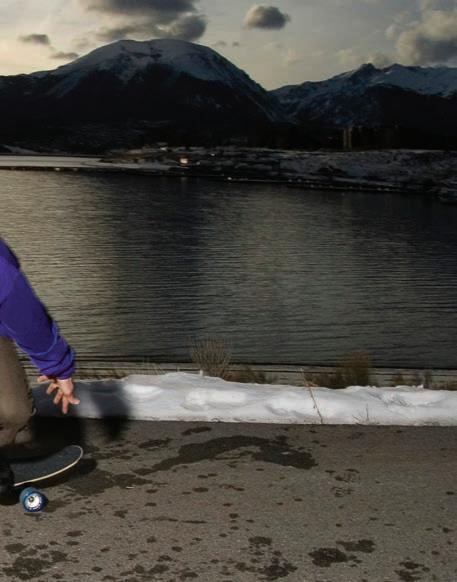
Two springs ago I was trying to make it through the winter as a skater in Wisconsin. There was one small indoor park in town. It was in the back of a skate shop. It had a mini with a spine, various moveable rails, a box with two roll-ins and other haphazard obstacles. Once I got over continually banging my head and hands on the ceiling of the building, I was pretty into the scene. It was dry, and there is nothing better than the sound of skate wheels echoing in a building. After a while I got the itch to skate without a roof and ducking every time I got air.
Every spring warmup we got, I was out searching for skateable spots. Summer was on its way and the local outdoor skate park was drying up. I drove by it daily to check if it had opened, because the city officials never said when it was going to open for the year. One day I passed and was pleased to see a group of skaters inside. The doors were locked and shut, but the fence was climbable.
As would any skater who’s been confined by the cold for six months, I hopped the fence. The session was soon cut short by the authorities, but I survived the winter. CW

HOLIDAYS2011 CONCRETE WAVE 55
EVERY SKATER IN A COLD CLIMATE NEEDS TO FIND A WAY TO SURVIVE THE DEATH GRIP OF WINTER.
CUTTHEJIVEANDSKOG!

 BY CHRIS YANDALL PHOTOS: GIGI DEARMAS-LOPATRIELLO
BY CHRIS YANDALL PHOTOS: GIGI DEARMAS-LOPATRIELLO



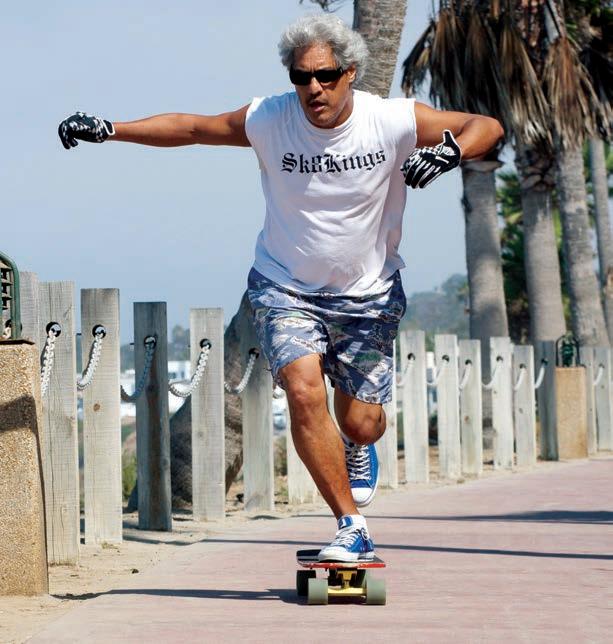
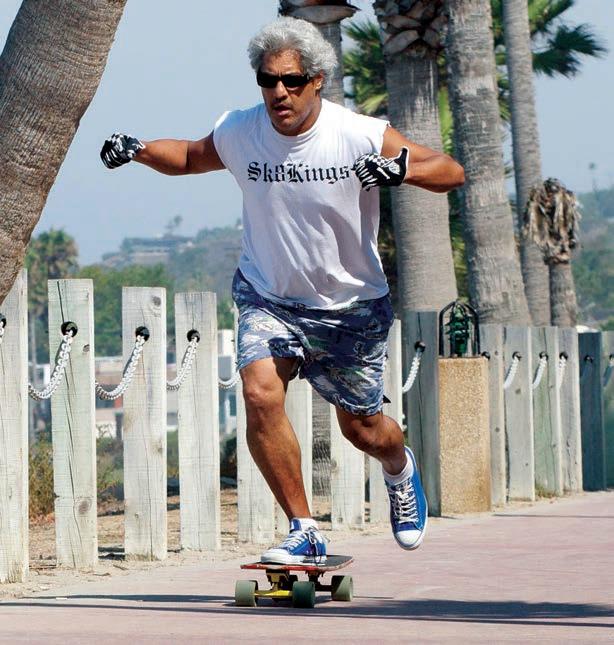
56 CONCRETE WAVE HOLIDAYS 2011
In 1975, when I was almost 19 years old, I wrote an article called “Cut the Jive and Jog” for SkateBoarder magazine. It prophetically outlined pushing one’s skateboard with both legs. More than 35 years later, I’m still riding my skateboard at a fairly high level, and, even though I'll soon be pushing 60, I'm pushing that same concept ever more.

The old article outlined the technique. Back then, it made lots of sense to write about it because skateboarding was in its rebirth from the ’60s, helped by the upgrades of urethane wheels and cast trucks. These technological advancements added more safety and confidence for riding at higher speeds and big G’s into transition. Street skating, slalom, downhill and vert all demanded shockabsorbing, grippy wheels and trucks that wouldn’t break easily under bone-jarring conditions. And with all these disciplines, it appeared that an overlooked, relatively obvious technique to acquire was the ability to push with both legs. It’s a fundamental idea, but many don’t pick up on it because once one leg gets used to pushing during the learning process, the other becomes dormant from lack of use. After all, most skating just needs a few pushes to drop into a bowl or wire a downhill run.
Fundamentally, the very first trick most beginner skateboarders take on is pushing the board. It seems simple at first, and mastering respectable control is done by most during the first day. There’s a huge fudge factor when pushing a skateboard – it isn’t something that depends on accuracy, like throwing a football or baseball – and this is why many can pick up a good push in an honest day’s work to learn it. But in almost every beginner’s case, during the learning process one side appears to be easier, either regular (push right facing right) or goofy foot (reverse of regular). From this point on, the reverse side is avoided and the questionably bad habit begins.
The remedy is simple: Just push with the other leg. Simply concentrating on pushing with the opposite leg, and then placing that foot on the board while using the other
foot to push, can help a rider gain confidence.
Competence in finding that sweet spot to operate both legs in alternating the push should always be the goal. As with many sports, once the center has been found, the ability to master becomes evident. One-footed carpet practice is recommended to add more “pedi-dexterity” awareness. Pedi-dexterity is a word I came up with to describe the requirement in order to fine-tune the skog. One must tune his (or her) muscles for rapid response to the aggressive demands of body movement to stay in balance while basically jogging with the skateboard and alternating legs. Reaching this plateau of a riding technique, one must start out at a very basic level, and, depending on how quickly advancement occurs, mastering the technique requires some serious knee and elbow grease. Without targeted practice, skogging is nearly impossible to attain. Mastering it requires a regular litany of stroking the cement with alternating leg pushes.
If you truly desire to learn how to switch push, read the following thoroughly; visualize yourself performing the steps before attempting; and, as always, wear the proper safety equipment.
1.Set your expectations low when starting.
2.Take baby steps and practice on carpet or a restricted moving surface like a golf green.
3.Whether you’re mongo or not, place either left or right foot near the front of the board. This foot should be pointing straight forward, parallel with the sides of the board.


4.Gently push with the other foot once and glide while placing the pushing foot back on the board.
5.Gingerly remove the front foot off the board in pushing position, take one push, and then place that foot back on the board.
And there you have it! Repeat often until you master this part and eventually work your way up to switching the lead foot in above Step 3.
I came up with the term “skogging” in the early 2000s to promote alternate-leg push skateboarding and coined the term in Urban Dictionary in 2004, by
taking two words, “skateboard” and “jogging,” and mixing them together to reflect a series of riding types: sk + ogging. A jogging pace of alternating skateboard pushing is faster than your average runner. And since this concept is relatively new, and somewhat difficult for the masses, it is yet to evolve to “skrunning.” Maybe that day will come, but until then, it’s skogging!
The term skog is being used to define flatland carving and pumping mixed with pushing to maintain pedi-dextrous movement. The art of attempting to balance body movement while attaining selfgenerated controlled speeds using both pushing legs is another definition most can grasp on to.
Think of downhill skiers and snowboarders working the gravitational pull down a slippery slope. Skogging is a similar feat except the fall line is self-generated, with a slippery slope directly proportional to the angle of attack. Alternating pushing feet during weight transition swinging from side to side to maintain constant speed is a standard part of the exercise. I have lots of experience sliding down slopes with skis, surfboards, roller skates, snowboards, canoeing, kayaking and body surfing. Skogging is a culmination of all these movements. It’s almost like jumping out of a plane (yes, done that too), where you instead float with self-generated speeds mixed with the gravitational forces that create the playground of the skogging movement. While all this may seem like an Eastern spiritual ritual, it was born with the spirit of a surfy aerobic and pedi-dextrous body movement. No ollies, no air, no grinding curbs, no downhill speeds (although cross-country skogging may require it), and basically no tricks is an earmark for skogging. It’s all about riding, keeping all wheels in contact with terra firma – a contiguous flow of sidewalk surfing on smooth surfaces for long distances. Rolling on to the tune of celebrating life like there’s no tomorrow to its fullest using a board, two trucks and four wheels! This type of skateboarding for life is another healthy option to all the other sports on the planet. CW
HOLIDAYS 2011 CONCRETE WAVE 57
INSIGHTS ON HOSTING A SUCCESSFUL RACE EVENT
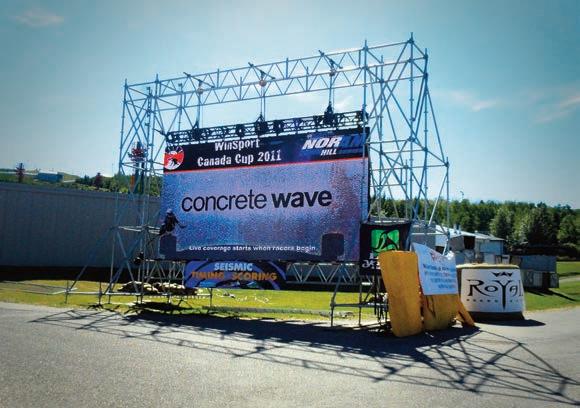
 By MICHAEL BROOKE
By MICHAEL BROOKE
For decades, contests have been a great way for skaters to meet up and show off their stuff.

The camaraderie and friendships that are formed are at the heart of what it means to be a skater. Sure, it can get competitive, but the thrill of riding and seeing skaters giving it their all is part of the experience. But while some skate events have become globally televised, multimillion-dollar experiences, longboarding is still on a very lean budget. In putting together this article, we wanted to present you a variety of ways that contests can be run, from people that have run them. If you’re inclined to start putting on a contest, make sure you learn from these folks. Not only have they been there and done that, they’ve probably paid for the T-shirt.
LOW BUDGET, HIGH STOKE (a.k.a. "Let's Just Do It and See What Happens")
The terms “underground” and “outlaw” conjure up all kinds of images. But unofficial races remain a fact of life, and if you’re on a low (or no) budget, they can be a great way to get people racing. But if you’re planning on running such an event, you’d better have a strong constitution.
Tye Donnelly and Darrin Niner, whom I met this past summer in southern California, have things down to a science. Tye and Darrin truly embody what it means to be a skateboarder. Their friendly, easygoing nature makes them the perfect candidates to handle all types of “situations” that can arise from hosting underground events. They simply spread the stoke and bring joy to so many people. What they lack in money, they more than make up for in spirit.
The two met through a mutual friend, and the idea for putting on races was Tye’s. “He wanted to put on a race. He had to say it a couple of times before we backed him up,” recalls Darrin. From this humble beginning, the San Diego Racing League (SDRL) was born.
I asked them to give me their philosophy when it came to hosting events. The two looked at each other mischievously.

“Tell him our motto, Darrin,” said Tye.
I glanced over at Darrin and could see him smiling.

“Our philosophy?” he said. “Let’s just do it and see what happens.”
So that’s pretty much at the root of what Tye and Darrin have been up to. It’s underground. It’s not
Closed-circuit television is not crucial feature at an event – but it is nice! Photo: Michael Brooke
San Diego Racing League co-founder Tye Donnelly.
Photo: Casey Stearns

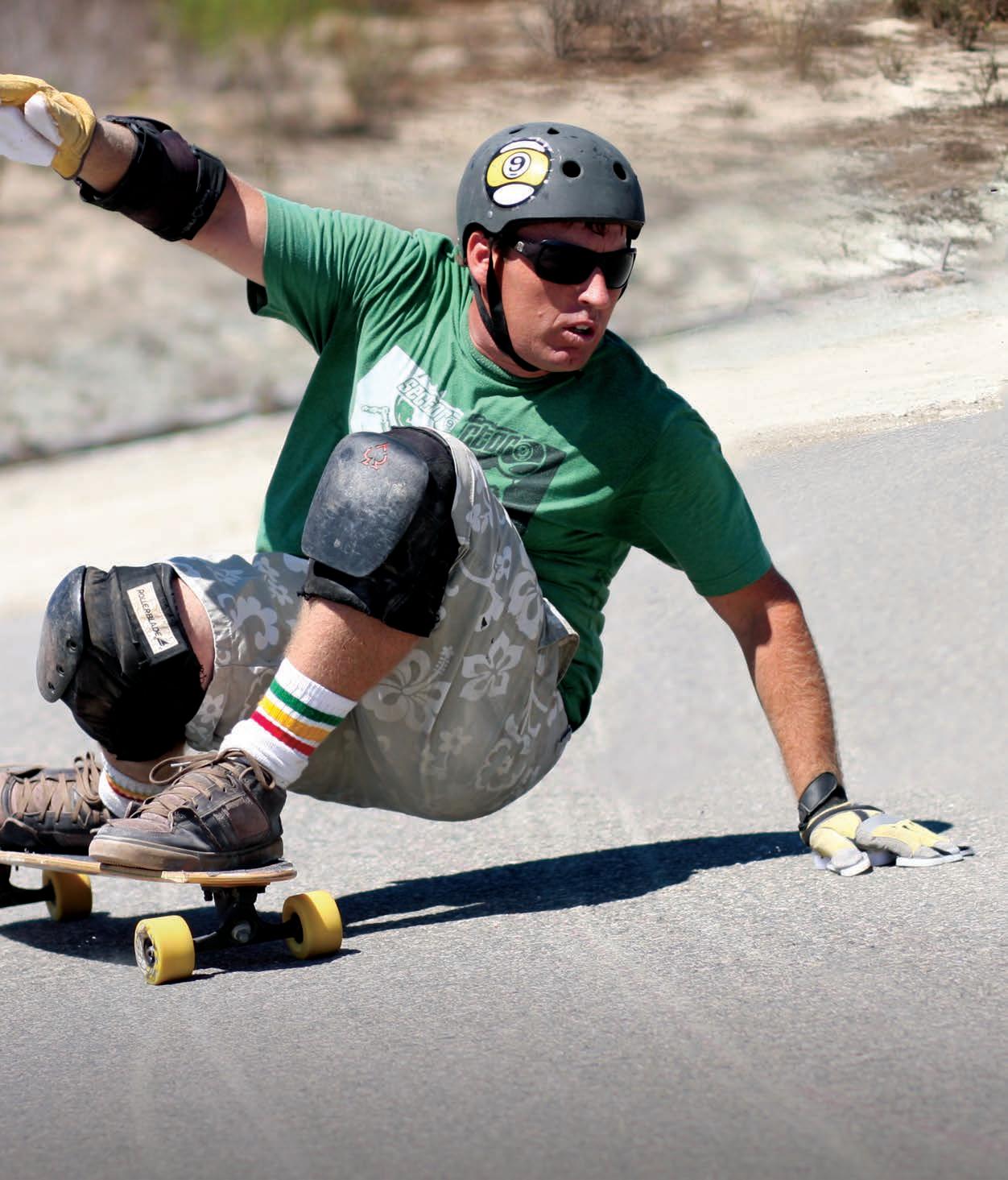
HOLIDAYS 2011 CONCRETE WAVE 59
expertly planned. It might be even be somewhat risky. But it’s working.
“We were always told you need bathrooms, security, permits, shuttling, medics,” Tye said. “But we have other ideas. We’re going to just do it.”
For the members of the SDRL, it’s always been about the hills.
“We know what you need to race. We’ve done 33 races on 27 different hills. These are all hills we’ve ridden for years; we know what’s necessary,” explains Tye.
When it comes to providing information about the legal aspects of running a quasi-legal event, Concrete Wave magazine assumes … wait, I think I hear my lawyer knocking at the front door. The fact is that in certain states, the assumed risk liability law means that you can’t sue if you hurt yourself on public land.

Private land is another matter. Don’t assume that ignorance of the law is any defense. If you’re planning an underground event, just be aware that you might be stepping into some issues that could come back to haunt you. However, the fact remains that in the dozens of races that the San Diego Racing League has put on, only one has been shut down by police.
The community support for SDRL has ranged from indifferent to overwhelming. Last August, I had the privilege of witnessing the latter, firsthand, when our family drove out to a race in Temecula, about an hour north of San Diego. Upon arrival, we learned that the entire event had been moved from the original road to a private driveway. But this driveway was steep, and a perfect place for hosting a slide comp. Talk about flexibility!
Turns out that Tye and Darrin had discovered this spot a few years back.
“We started skating on this driveway knowing that they would come out at any moment,” Tye says. “I was the first to go, and they did come out. They were happy we were racing on their driveway.”
Imagine that: homeowners happy that skaters were charging down their driveway! Tye couldn’t believe their good fortune.

But it only got better, Tye says: “They offered us their pool. They picked two crates of oranges for us, grown on their property. I kept riding the local hills, got their phone number, and a friendship was formed. I brought [their] daughter a skateboard.”
So what started as something that could have been a simple “Hey, get the heck out of here!” situation turned into a friendship.
When my family and I arrived in Temecula, there were dozens of skaters enjoying the event. Once it finished, we had an opportunity to swim in the pool and enjoy a barbeque. The awards presentation was just full of stoke. It was one of the most soulful events I’ve ever witnessed.
“We tread lightly and we’ve never had a problem,” says Darrin. “We relate to everyone real well, and our goal is to be a family of riders.”
Definitely food for thought.
TAKING THINGS TO THE NEXT LEVEL
Let’s say you’ve got bigger plans than an “outlaw” event, or your mom or dad knows a lawyer who says there’s no way you’re getting involved in an underground race. Or you want to shut down a road and host something that might run not just for a few hours but for two or more days. Well, you’re going have to take a different approach – one that works with the system, not around it.
Marcus Rietema of the International Gravity Sports Association has worked tirelessly over the last 15 years presenting racing events around the world. I asked him
what the single most important thing was when it came to hosting a race.
“Before you announce the race, or any official plans, you need the proper permits and permissions and insurance in place,” he said.
You might want to read that sentence a few times. If you are putting on an event, it’s crucial that you ensure everything is handled.
“We had a race [planned] about five years ago in Sweden,” Rietema continues, “and one week before the event, the organizer had to cancel because he couldn’t get the permit.”
60 CONCRETE WAVE HOLIDAYS 2011
Darrin Niner (left) and Tye Donnelly have planned more than 33 races. They are two of the most hard-working and hospitable folks you'll ever meet. Photo: Michael Brooke
Meet the Parks family of Picton, Ontario. They’ve hosted a successful downhill event in both 2010 and 2011: the Prince Edward County Gravity Fest.
The family’s involvement began through Kolby Parks, a street luger who’s achieved quite a bit of success. Now the whole family helps plan and produce the event: Kolby; his sister, Krisha; their mother, Nancy; and their father, Gary.
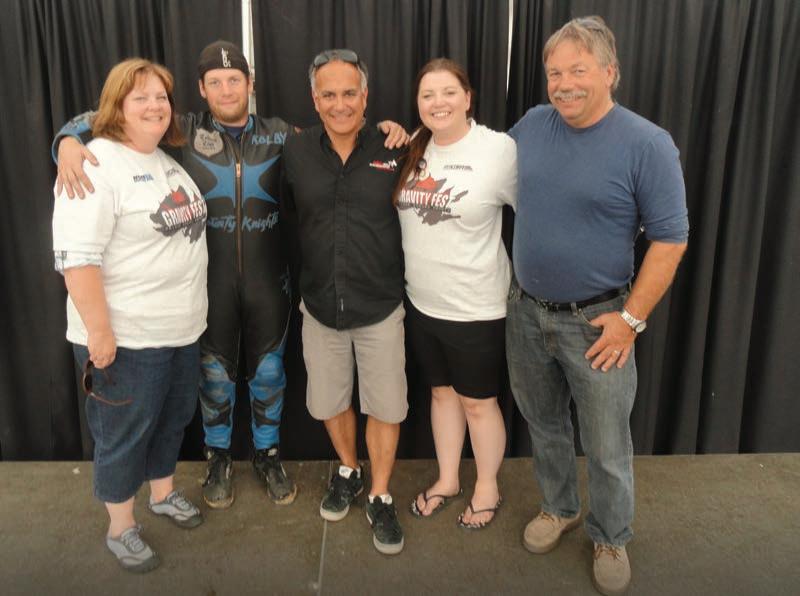
Krisha says the first thing they needed was a really strong organizing committee. So they called on friends and neighbors who had a background in running events of some sort – including Gary, who had helped organize a local soccer league, among other things.
This is a valuable lesson to learn. Networking is essential. It’s crucial to work with folks who have at least some background in organizing and working with politicians. It can definitely smooth things out.
The biggest problem, Krisha says, was that only her immediate family had been to a standup race: “The people on our committee didn’t know what it was about. We showed them videos. It took a little while, but once that was taken care of, things went well.”
Another hurdle: getting streets shut down. To do so, you are going to have work with the town council.
“It took a lot of discussion to smooth everyone’s fears,” says Gary. “We kept repeating to folks that ‘you’re still going to be able to do what you normally do.’”
This is probably where smaller towns have the upper hand when compared to the big city.
“We live in a small community and we knew who to ask, so we are very fortunate,” Nancy says.
Krisha agrees: “We are very lucky to live where we live because almost everyone knows each other, and there is strong community support for hosting an event like a downhill race.”
Contests can become expensive. It’s very easy to lose your shirt. So getting financial contributions is critical for holding a larger-scale race.
When an event takes place, it’s important to think about the ripple effect. In this crazy economic climate, a longboardrace can bring in some much-needed business. In this crazy economic climate, a longboard race can bring in some much-needed business. Hotels, restaurants and all types of goods and services are purchased by racers and spectators. Make sure you communicate this to the local politicians.
“We make an economic impact on a community, and doors open up,” says Marcus Rietema.
There can be money in places you’d never even consider. Contact your local Chamber of Commerce. You never know what they’ll say.
While it would be great to get some cold, hard sponsorship dollars from an energy-drink company, the reality is that you’re better off looking locally for sponsorship money. It’s imperative that you bring in advertising support from the local businesses.
Krisha agrees. She says that although “the local hard-

ware shop didn’t really benefit because they are not a national corporation ... they are truly a community-minded business and they came out supported it financially.”
Speaking of finances, Rietema reminded me that it’s imperative that race organizers create a budget and stick to it. Having a budget helps ensure that you can deliver on expectations – the classic “under-promise and over-perform.” The problems arise when you
The Parks family also contacted Rietema and brought the IGSA to the Picton event. I asked Marcus if the IGSA should certify all races.
“It doesn’t have to work for everyone,” he said. “We brand an event as an IGSA and it guarantees a certain level of participation.”
The process to bring in the IGSA is pretty straightforward. An organizer contacts the IGSA and explains
promise the world and then expect it all to fall into place without the hard work.
Don’t ever underestimate the power of a small town getting behind a race. Picton had the support of more than 350 volunteers last year. “We went to our local Rotary club to help with traffic control. Local and regional media were helpful,” says Nancy Parks.
Another great thing about being in the countryside is that it’s a little easier to access hay bales – or straw bales – to line your course. (“We use straw,” explains Gary. “Hay is feed [grass that animals can eat] ... straw is a by-product, but it’s not food.”) This is an important item, and it’s crucial that you have a safe race.
The Picton events benefited because Gary is a farmer. He borrowed wagons from his neighbors and was able to collect so much straw that the entire course was lined from top to bottom.
It also helped that the race was held at an opportune time. In the northern part of North America, the straw crop comes off in August. So September is a good time to host a race.
Placing the bales before the event is only half the battle, however. Remember, they’ve got to be collected after the event. “We had 10 farmers show up with a wagon to collect 2,500 bales of straw in five hours,” recalls Gary.
what they want to do with their event.
“We take a look at their maps and plans and aspirations,” says Rietema. “We just work together through the process.”
Having an IGSA official at your race can be helpful.
“These people are experienced and have been through a lot,” explains Marcus. “They can shorten the learning curve. Having one of our people can also be helpful prior to the event.”
In speaking with Parks family, it was evident that they were methodical in their approach. It took four months to plan their first race, and the results were quite impressive. The registration process was flawless, racers received stellar treatment and they even managed to break even financially. Rietema said their event was absolutely first-rate – quite an endorsement for a first-time race.
As to the future of race events, it would appear that small is the new big. Rietema agrees.
“We are limiting events,” he says. “The big events have become saturated, and we will need smaller events for people to qualify at the World Cup level.”
So if you think your town is too small to host an event, you might be missing the big picture. This might be the perfect time to become friendly with your local
HOLIDAYS 2011 CONCRETE WAVE 61 Ouch.
Organizing the Gravity Fest in Picton, Ontario is truly a team effort. Marcus Rietema (center) of the IGSA with the Parks family: Nancy (far left), Kolby, Krisha and Gary.
ISSA SLALOM
By Jonathan Harms and Rob Ashby
The last couple of months have been a great time for slalom racing of all kinds — big and small, serious and not-so-serious, all over North America and Europe. Veteran racers took the top spots at the bigger races, but some relatively new names are popping up in the smaller races who may soon challenge the well-known riders. Here’s a quick summary of some of these events.
CAN/AM SLALOM CHAMPIONSHIPS
Antrim, New Hampshire, USA
For the sixth consecutive year, the small town of Antrim, New Hampshire, opened its arms to slalom racers, hosting the Can/Am Slalom Championships Sept. 1618, 2011. As in 2010, this year’s race received a Main status, the second-highest awarded by the International Slalom Skateboarding Association (ISSA). Many of the top U.S. and Canadian racers showed up, including current men’s and women’s world champions Joe McLaren and Lynn Kramer and junior world champ Gabe Duquet. Ferdinand Lindner, the No. 2 amateur in the world, came all the way from Germany to do battle with No. 1 am racer Lou Statman from Texas and No. 3 am Pascal “Rookie” Jean from Canada.
Cool, crisp and sunny weather made for some great racing conditions on Antrim’s Summer Street, a versatile hill that works well for tight, hybrid and giant slalom.
In the single-lane tight slalom race on Friday, Sept. 16, Martin Reaves snatched first place ahead of fellow Coloradoans George Pappas and current Joe McLaren, both of whom are former TS world champions. Vermont’s Adam Schwippert took fourth.
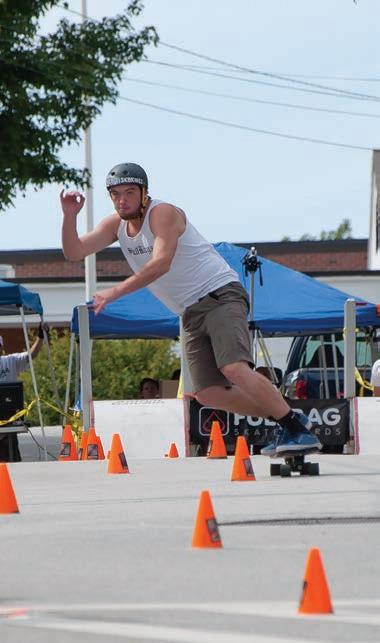

In Saturday’s hybrid racing, McLaren rebounded to take first place over Schwippert, and Reaves captured third by defeating Pappas in the consolation round.
And in Sunday’s giant slalom, McLaren again took the win, followed by Reaves, Schwippert and Pappas in second through fourth, respectively.
In the open division, Lindner finished ahead of Statman in all three races, but Statman still holds the No. 1 ranking. If Lindner attends the European Indoor Championships in November, he could still possibly surpass Statman, but he’ll have to do well against some very tough competition. Stay tuned …
SOUTHERN FRIED CONE FEST
Ashland, Kentucky, USA
The Cone Fest is also in its sixth year, and is held — wouldn’t you know it? — the very same weekend as Antrim, as it is also held in conjunction with a local fall festival, Poage Landing Days. But rather than suffering or splitting the pool of available racers, both events seem to be thriving — perhaps because they’re 850 miles apart. Whatever the reason, both races are doing just fine, thank you very much.
The hybrid and tight slalom races at the Cone Fest are short and sweet drag races — times are typically about 8-9 seconds. But they always attract a good crowd of spectators, perhaps for that very reason, and because the courses begin just a few feet away from the main street of the festival. So it’s easy for spectators to stop and watch the races and to see who wins.
This year’s racing was dominated by the Yerke brothers from Lansing, Michigan, who have quietly but steadily become two of the top racers in the Midwest over the last couple of years. Younger brother Derek took first place in both the hybrid and tight slalom events, and older brother Jason, a.k.a. “Yerkuleez,” scored his first big slalom win by taking the GS. North Carolina’s Mark Nix, Ashland local young gun Kyle Smith, Cincinnati stoke master Bobby Thomas and Texas Outlaws Marcos Soulsby-Monroy and Greg Stubbs all gave them some tough competition.
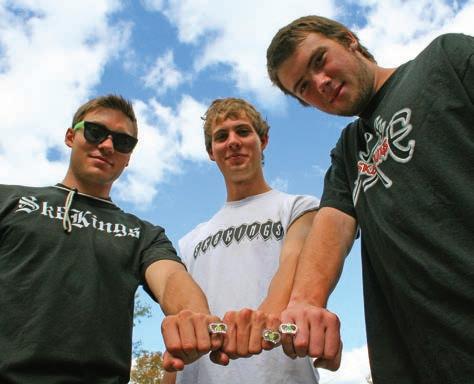
HOGTOBERFEST Ilford,
U.K.
After the British Open Slalom Championships in August, the Redbridge Cycling Centre, a.k.a. Hog Hill, hosted another great slalom event Oct. 15-16, 2011 – aptly called
62 CONCRETE WAVE HOLIDAYS 2011 CONCRETEWAVEMAGAZINE.COM SLALOM >>
REPORT
Adam Schwippert (L), Martin Reaves (C) and Joe McLaren (R) were kings at Antrim, taking 8 of 9 podium spots.
Photo: Maria Carrasco
Joe McLaren took two wins at the Can/Am Championships.
Photo: Doug Kerr
Lou Statman showing the intense focus that's made him the No. 1-ranked amateur slalom racer.
Photo: Doug Kerr
Hogtoberfest. The Hog Hill track, located near Ilford, about 20 miles northeast of London, was built in 2008 as a cycling training center and features a superbly smooth, fast, grippy surface ideal for slalom skateboard racing.
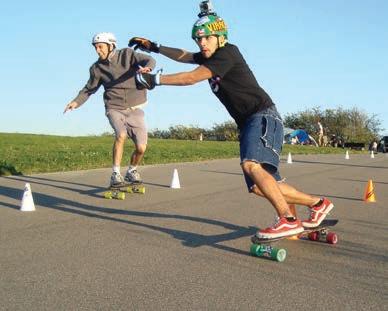
The United Kingdom Slalom Skateboarding Association (UKSSA) had been invited to race at this event by Timmy Peters from Southampton University, who had set up the event as a fun weekend, with various workshops and downhill races for all skill levels. He had also encouraged universities to bring “freshers” along to share the stoke of downhill skating in all of its disciplines.
The mid-October weather was abnormally fine, with clear skies and glorious autumn sunshine bringing riders out in droves, including young gun Jack Corpes, making a welcome return to Hog Hill, and old Southbank/LSD Boy Chris Charalambous, making his second appearance at a British race this year.
Newly signed Pavel rider Bruno Silva de Oliveira battled with teammate Louis “Slipa” Selby for the top spot in both hybrid and giant slalom. Bruno even beat Louis on raw time in one heat in each discipline, but Louis scored the victory in both events by running just a bit cleaner, pipping Bruno by .11 seconds in the hybrid
NEW WORLD RECORD! Colorado
wonder teen
Joe McLaren solidified his status as the best slalomer in the world by setting a new world record in the 100-cone straight slalom at the Can/Am Championships. On his first official run, Joe burned through 100 cones in 20.687 seconds – that’s almost five cones per second – without hitting a single cone to beat the previous record of 20.77 seconds set in 2010 by Latvia’s Janis Kuzmins.
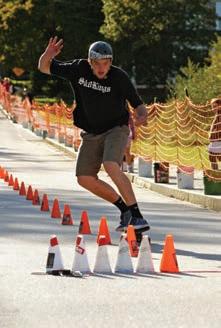
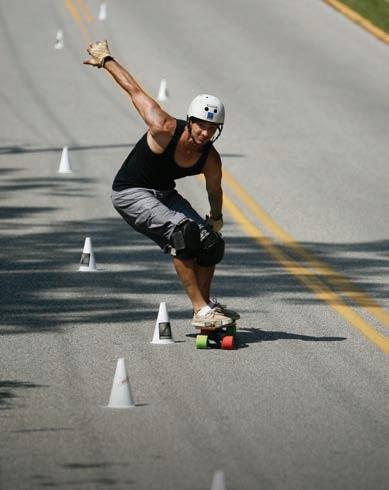


Running 100 cones clean is fiendishly difficult even under the best circumstances. Antrim’s Summer Street made it even more difficult because its slope changes significantly at least twice, requiring the cone spacing to change accordingly – at times wider than necessary, according to riders who witnessed McLaren’s run. On a consistent slope with more consistent spacing, times of less than 20 seconds seem quite attainable. The only question is who will break that barrier first. Will it be McLaren? Kuzmins? One of the Swedes who’ve run in the 19’s but hit a few cones? Or someone else entirely? Again, stay tuned …
and a scant .03 seconds in the GS. Mike Allison and Ben Williams had their own battle for third and fourth in both races, with Mike edging Ben in the hybrid and Ben besting Mike in the GS.
SIZE MATTERS (NOT)
The bigger “points” races are not the only ones attracting riders. At any given time, numerous smaller races and race series are happening all around the world. The past couple of months have seen wellattended races in Amsterdam (the Rabbit Race), Gothenburg (Swedish Championships) and Zürich (Over 80 Cones, won by a healed-up Ramón Königshausen), among several others. And that’s not to mention all the “outlaw” and grass-roots races and race series in Spain, France (three different series), Quebec, and Kentucky and New Hampshire in the USA.
Finally, the ISSA also has some interesting new developments afoot, including a pilot program to conduct clinics, practice sessions and races on the Derby Downs soap box derby hill in Akron, Ohio, in collaboration with the IGSA and the All American Soap Box Derby organization. Right now it’s still too early to know what might result from this collaboration, but if all goes well, slalom racers may eventually be able to use soap box derby tracks all over the USA as safe, traffic-free hills for both practice sessions and races.
UPCOMING EVENTS
7th (and final?) Dixie Cup
Statesville, N.C., USA – Nov. 4-6

European Indoor Championships
Brno, Czech Republic – Nov. 12-13
For full results of any of these events or more information about slalom skateboarding in general, go to slalomskateboarder.com CW
HOLIDAYS2011 CONCRETE WAVE 63
Schwippert had a great weekend at Antrim with two podium finishes.
Photo: Doug Kerr
Old school vs. new: Chris Charalambous (L) battles Bruno Silva de Oliveira at Hogtoberfest.
Photo: Dave Arnold
Joe McLaren breaking the 100-cone record.
Photo: Oliver Lehmann
Seb Leger laying a beatdown on the Antrim GS course.
Photo: Doug Kerr
Jason Yerke won the giant slalom at the Kentucky Cone Fest and finished second to his brother Derek in the hybrid and tight slalom.
Photo: Neil Orta
CONTINUED FROM VOL.10 NO.1

DIARY OF A TRUCK PART 2: CASTING & MANUFACTURE






Words and Photos
by NEIL CARVER
Manufacturing a high-quality skateboard truck is a hands-on process – literally. It involves as many as 27 different craftsmen from different industries working in tight coordination to produce something that will hold up to the kind of abuse we call a good time. At the end of the “Diary of a Truck Part 1” (and continued in Part 1.5 online at carverskateboards.com), we left off at the completion of the masters and making the sand casting tooling called the pattern plate. In Part 2 we’ll pick up at the beginning of the casting stage and follow our parts all the way to a finished truck.
64 CONCRETE WAVE HOLIDAYS 2011
Cast hangers emerging from the sand molds after they’ve cooled.
FRIDAY, AUG. 19, FRIDAY, AUG. 19, 2011:

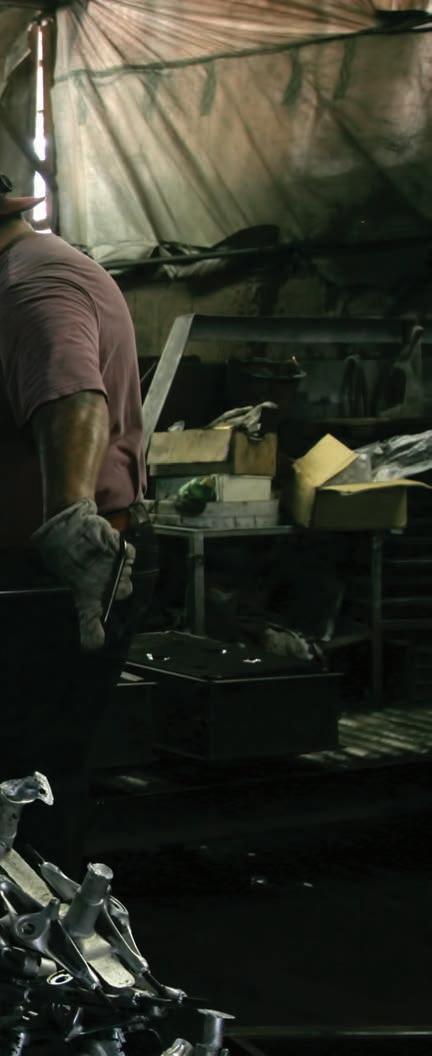
Today we’re at the foundry, a cavernous building where everything has been blackened by the oily dust that hangs in the air. The furnaces roar constantly, and steam rises from mountains of cooling black-sand molds. It’s like Dante’s Inferno at the dawn of the Industrial Age. At the squeezer, the pneumatic stand that compresses the sand tightly into the molds, a foundryman takes the pattern plate with the shapes of the truck parts on it, and an open-ended pair of boxes called flasks, and packs a special mix of damp sand and clay onto the plate, forming an impression of the trucks into each of the two sand-filled boxes. After removing the pattern plate from between the two flasks and reassembling the sand blocks together again, another craftsman pours 1,380° F molten aluminum into the cavities, filling them until the metal begins to spill out of the sprues (the opening through which the metal is poured). After they have cooled, they are fished out of the steaming sand blocks using steel hooks, and the individual parts are sawn off the trees (so called because the parts look rather like branches). Then the stubs, called gates, are sanded flush, and the seams, called parting lines, are ground smooth by hand.

THURSDAY, AUG. 25, 2011: If you know Greg Falk, OG founder and president of Carver, you know that the first thing he does when you visit the factory is show you his machines. Banks of rebuilt vintage American Walker-Turner drill presses are lined up in rows in the shop, each drill head dedicated to a specific operation. Today a load of parts arrives from the foundry; our machinists take the parts one by one and load them into the new jigs that hold the parts at the correct angles while the holes for the kingpin, pivot cup and mounting hardware are drilled. The jigs are custom-made from machined and welded steel plates, tested weeks ago in preparation for this day. One of these jigs is for a new process designed to “chase” or remove the parting line around the pivot pin of the hanger. Because this parting line runs along the pivot pin on every cast RKP hanger, nearly all pivot pins tend to be slightly out of round from sanding, or have a raised seam that prevents a precise fit inside the pivot cup. This leads to either binding or slop, neither of which is good for performance. Greg has developed a method to chase the pivot pin so it’s perfectly round and fits the pivot cup exactly. It’s great to see this new technique in operation today. Finally a cast truck with a pivot pin as precise as a costly CNC truck!
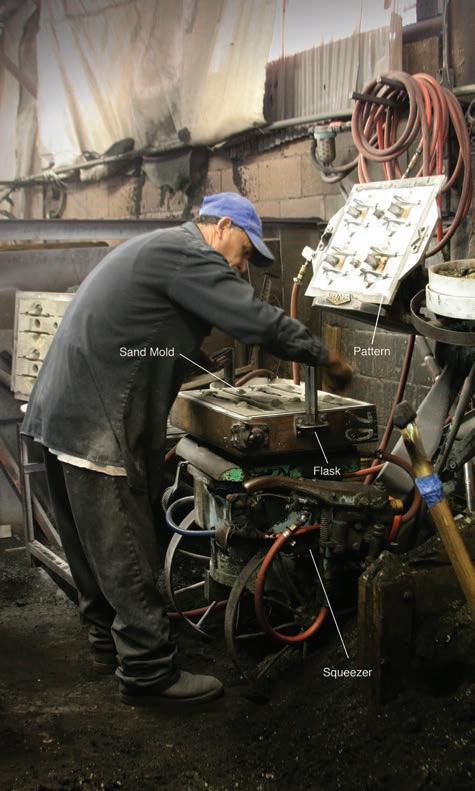
HOLIDAYS 2011 CONCRETE WAVE 65
Grinding hanger parting lines one at a time.
Careful hand placement of the axles into the sand mold at the squeezer.
THURSDAY, SEPT. 1, 2011: The first batch of parts has been machined, and today they’ll travel to the heattreating ovens in downtown Los Angeles. This is a crucial step in the process, as the special 356 alloy is quite soft when it’s cast, and needs to be heated to temperatures of 950° F over many hours and then quenched in water in order to harden the alloy. The beauty of 356 is that it can be precisely tempered to the ideal hardness, which is hard enough to withstand the beating the truck will soon take, but not so hard that it’s brittle. Brittleness is the biggest drawback to the cheap die-cast alloys used in trucks made overseas (see "Casting 101" sidebar).
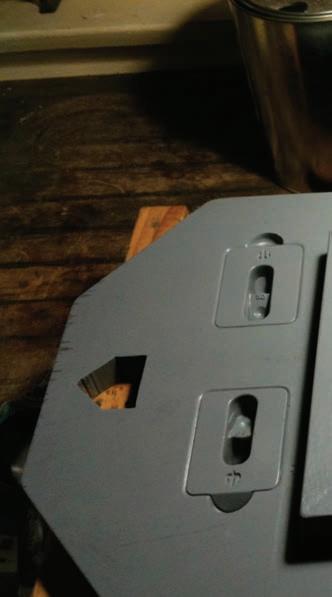


FRIDAY, SEPT. 9, 2011: The heat-treated parts are now taken to the finisher, where they will be loaded into huge rubber-lined vats filled with water and ceramic stones. These massive “VibraHone” vats are mounted to motors that shake them vigorously; as they shake, the stones vibrate against the truck parts like pebbles on the beach, wearing down the parts’ sand-cast texture and giving them a dull, smooth finish. It’s so loud you leave with a ringing in your ears! Once the parts have been smoothed, a process that can take as many as five hours, they are removed from the vats, sorted from the stones and loaded back into barrels to be taken to the powder-coating facility nearby.
TUESDAY, SEPT. 13, 2011: Once the parts arrive at the powder coater, the axles are masked off and all the parts are hung on hooks traveling along a suspended conveyor, while a pair of skilled painters spray a magnetically charged black powder onto each side of the parts as they pass by. Then the parts are again put in an oven, where the powder is melted onto the surface at 400° F. The powder-coating process is completely free of volatile gases, unlike traditional paint, producing an environmentally sensitive finish that is much more durable than regular sprayed-on paint. Even the ovens run on clean-burning natural gas. It’s so clean that the EPA doesn’t even need to regulate the process. Once the parts have cooled, they are individually wrapped in paper like candy, boxed and brought back to our factory.
Greg Falk experimenting with the chasing jig for pivot pins.
Pattern plates like this one are used to make precise impressions in a sand mold. It takes a lot of testing to ensure you get exactly the truck you want.
The vibrator barrel where the castings dance with stones .
FRIDAY, SEPT. 16, 2011: Once the finished parts arrive, the bases are unpacked first, and one at a time the Grade 8 kingpin is pressed in with a six-ton Denison hydraulic multipress, another of Greg’s classic American machines. From here the bases are loaded onto carts and brought to the assembly table, where another craftsman individually presses in the pivot cup, slides a cup washer and a brightly colored urethane bottom bushing onto the kingpin, then fits the hanger onto the base and traps it with the top bushing, flat washer and nut. The finished trucks are then loaded back onto the carts and either assembled onto boards or packed into boxes, either to be shipped to your local shop or purchased online and mailed directly to your house. It’s all downhill from there!
CASTING 101
There are several ways to cast a skateboard truck. The OG method, dating back to Mesopotamia circa 3,300 B.C., is called sand casting. It’s done by making an impression in a pair of damp sand blocks with a pattern plate and pouring molten metal into the cavities left by the plate’s impressions.
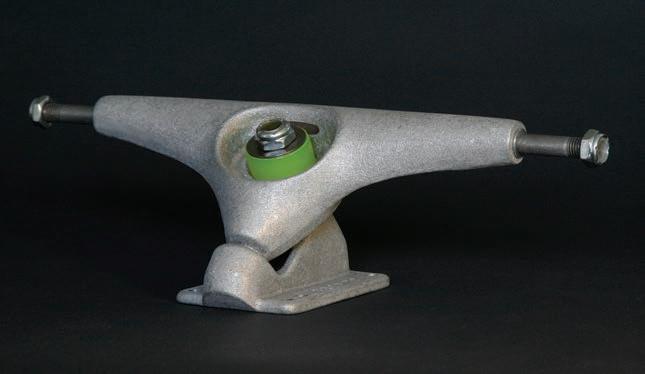
Another, more recent method is casting into steel or iron molds. Much confusion surrounds this method, as it is referred to variously as die casting, injection casting, pressure casting and permanent molding. Some overseas manufacturers have long claimed the results of this process are just as good; but for one skilled in the art of casting, nothing could be further from the truth.
Die casting does produce a very clean finish and has been widely used to produce the smoothest, best-looking truck parts being imported from overseas today, but there are serious problems with this method. While a die casting is extremely clean, it requires special alloys, which are combinations of two or more metals that together have enhanced properties not present in either of the individual elements. For example, stainless steel is an alloy of iron with small amounts of carbon and chromium, and it’s harder, nonmagnetic and does not rust, which is quite different from the properties of the iron it’s primarily made from. It’s the same with aluminum alloys.
The aluminum alloys used in die casting need to contain higher concentrations of iron so they don’t solder or stick to the steel of the die mold. This unfortunately reduces the alloy’s ductility, or amount the aluminum can bend before breaking, in effect producing a hard but brittle part. These alloys, typically classified as 360 or 380, are in the same family as 356 but are much cheaper and not able to be heat-treated. By contrast, the sand-casting alloy 356 contains higher amounts of magnesium for strength, which provides for the ability to heat-treat the aluminum. It also contains silicon, which helps it to flow a full 200 degrees cooler than for die casting, which prevents burning off the magnesium that is so crucial to heat-treat hardening.

Heat treating is the process whereby the aluminum parts are heated in huge ovens to 950° F for a precise amount of time (nearly nine hours), and then quenched in water to chill them quickly. This process will change the crystalline microstructure of the metal’s grain, grouping it in a specific rearrangement called allotropy, which will increase the strength and flexibility of the aluminum. After quenching it’s reheated to 350° F for another five hours in a process called aging, which takes the metal to its final T6 Rockwell hardness rating. This produces what we consider the ideal combination of hardness and flexibility to guarantee a strong, long-lasting truck.
Permanent molding is like sand casting in that it’s a gravity-fed pour, where the molten aluminum is literally hand poured into the mold, but the mold is made of steel instead of sand. The finish is not as smooth as die casting and it’s not as quick in production, but it’s smoother than sand casting, and can also be used with 356. It’s more costly and fickle than sand casting, but once it’s worked out, it requires less finishing costs to make the part smooth.
The other day we were at a local foundry and the owner was telling us how numerous truck brands he worked with were unhappy with their trucks from overseas, from the brittle metal to the rising prices, and were trying to bring production back to the U.S. He said these brands had spent a lot of money shipping their tooling back home, expecting that they could re-use it to cast with here. What was arriving, though, was not the permanent-mold tooling they had been promised, but unusable die-cast tooling specially designed to fit foreign injection-molding machines. The lesson that has been learned over and over regarding overseas production: Beware the old “bait and switch” trick, where specific materials and processes are promised and cheaper substitutes are delivered. Now many companies are scrambling to remake their tooling, and learning that not all truck castings are alike. CW
HOLIDAYS2011 CONCRETE WAVE 67
Neil Carver is a trucksmith living in Venice, California, and a neighbor and partner of Greg Falk in Carver Skateboards.

68 CONCRETE WAVE HOLIDAYS 2011
PORTFOLIO

EDITOR’S NOTE: I HAVE KNOWN JEFF BUDRO FOR ALMOST 15 YEARS. SINCE THIS IS THE PHOTO ISSUE, I WANTED TO GO BEYOND JUST SHOWCASING JEFF'S PHOTOGRAPHY; I WANTED HIM TO TAKE READERS A LITTLE DEEPER INTO HIS WORLD. JEFF JUST DOESN’T SHOOT PHOTOS: HE MANAGES THE SECTOR 9 TEAM, HELPS WITH MARKETING, ORGANIZES EVENTS AND IS ALWAYS UP FOR SKATING ANY TYPE OF TERRAIN. HE’S NOT JUST MAKING KIDS’ DREAMS COME TRUE, HE’S LIVING THE DREAM. HERE’S TO THE NEXT 15 YEARS, JEFF!
The camaraderie of the skateboard community is second to none. Its fellowship draws skaters in and leaves them with a lifetime of memories. Outside of the love for skateboarding, the passion is fueled by the stories created by the skaters in front of and behind the lens. These stories spread throughout the community, enticing others to embark on their own journey.
On your expedition, there will be fellow skaters reaching out to help you along the way. Few people have reached out to more skaters than Jeff Budro. His community support doesn’t stop with his skating or his work behind a camera. He also supports local events, mentors fellow skaters and sparks passion. Whether it is a major undertaking or just picking a skater up from the airport, you can be assured his actions are building the community.
Jeff has been a major influence on my own journey. When I found myself in a predicament and placed a distressed phone call to Jeff, he provided a helping hand up. It hasn’t stopped there, as he has only further helped smooth the path for my journey. And he does this for all kinds of other skaters, too.
No matter what life path you choose, your actions decide your story. Jeff’s story is comprised of selfless actions and timeless skateboard adventures. This shot of Jeff was taken on Scoot Smith’s first trip down to San Diego to meet the Sector 9 family. Beside Jeff is his canine companion, Pivot. Some people say you can found out a lot about the owner through the dog. If you have ever met Pivot, you will only have good things to say. –Louis
Pilloni
 BY JEFF BUDRO
BY JEFF BUDRO
First off, I would like to take this opportunity to thank all those who have inspired and supported me throughout my journey in this skateboard industry. I am truly blessed to be surrounded by the people that are involved with this ever-so-fast-growing sport. When people ask me what I do, I must say, it’s a hard question to answer. If they don’t have any knowledge of the skateboard world and have never been sponsored or been on a team, I usually tell them, “I make kids’ dreams come true.”
Working for Sector 9 has been an amazing part of my life. When EG Fratantaro and I sat down for the first time in the Sector 9 warehouse, it was definitely a little awkward. After working at Gravity for years, I was now coming over to their competitor. But I always appreciated what Sector 9 was doing. We had a mutual respect for the sport and for each other, so fortunately we developed a good relationship from the start. I really admired Steve Lake and Dennis Telfer and their view on skateboarding. They have absolutely been a driving force in doing what I do.
EG, Louis Pilloni and I share an office together, so I quickly learned that EG is the reason Sector 9 has the image it does today. He makes sure that everyone who represents the 9 is a solid person and is respectful of their surroundings everywhere they go.
This picture was taken in our warehouse at the infamous Bread Bowl. Jorge Salas took this shot when we had set up a photo shoot for Tyler Martin. I got some runs in on my lunch break and Jorge captured this backside shifty, one of my favorite go-to tricks – and yes, I early-grabbed.

HOLIDAYS 2011 CONCRETE WAVE 69
Istarted taking pictures about five years ago with a Canon Rebel I bought off my uncle Andrew. Soon after, I acquired a lens and a flash. Next thing you know, my photo frenzy was on. I quickly taught myself how to manually set my camera, and because I was always on the other side of the lens, it was easy for me to know the angles I wanted to capture as well. This picture of Steve Lange is a great one that we got in Albuquerque, New Mexico after the Indian School Ditch Race. The next day Steve crashed at the finish line in another ditch race and got knocked out cold. But when he woke up, he discovered he had won the race!
This picture of Og De Souza says it all. Believe in yourself and you can accomplish anything you put your mind and heart into. He is an inspiration to all of us. I had the pleasure of meeting him a couple of years ago on a Panasonic commercial set. I gave him a set of Sidewinder trucks, and I will never forget how stoked he was. His wheelchair is his skateboard. Talk about inspiring – he’s it. It’s always a pleasure to skate with him. I took this shot at the Bread Bowl in 2009.


70 CONCRETE WAVE HOLIDAYS 2011
If you had asked me six years ago if I would be racing downhill skateboarding, I would have said, “No way –those guys are crazy.” When I first saw Biker Sherlock and Rat Sult battling at the X Games, I thought they were superheroes. Well, they were and still are. Without pucks on their hands and with such a short footbrake finishing area, the danger factor was definitely heavy.
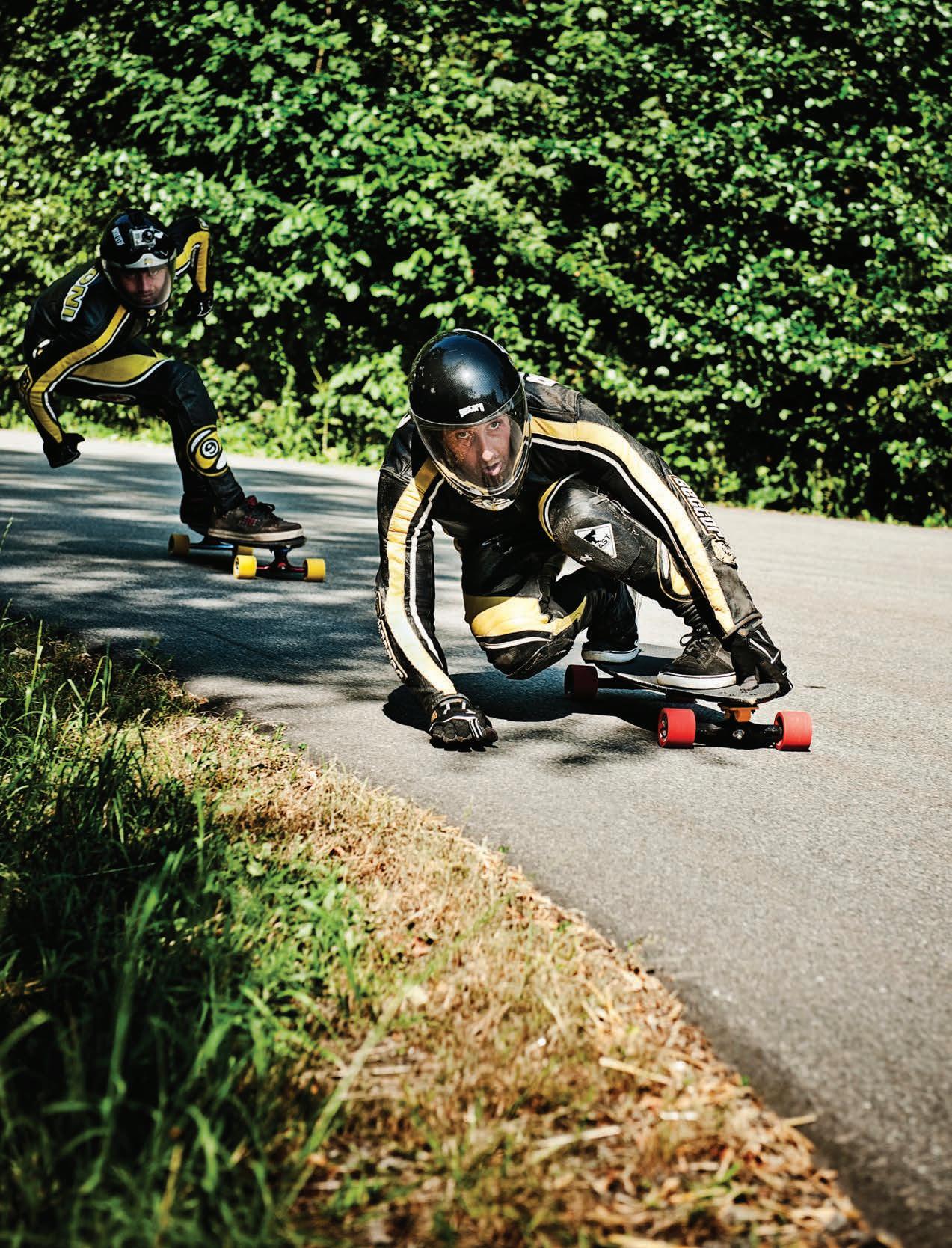
On a skate-everything trip to Mammoth, I followed Danny Connor and Rob Molt down a hill with a camera in my hand. It was the fastest I have ever gone on a skateboard. I had tears running down my face. I was scared s—tless, but after a few runs I fell in love with skateboarding once again. I came home and took a Sector race board to Randal Fuller’s house, and he handcrafted me a drop-though with Randal floating-axle luge trucks and ceramic bearings. That board was awesome. It was incredibly stable and I could really build my confidence up on it. My first race was the IGSA U.S. Nationals at Bonelli Park in San Dimas, California. Rob let me use his leathers and Danny had me follow him down the course. I was hooked!
Noah Sakamoto really dialed me in as far as tucking, cornering and drifting. He is part of the Berkeley crew and grew up under the close eye of the legendary Cliff Coleman. Noah, JM Duran and Patrick Rizzo had so much style that they would melt the roads they skated on.
My first trip to Europe was with those guys, and I learned so much. Now we travel around the world racing and chasing that ultimate dream, to be the world champion. Louis and I are racing here at Almabtrieb in Germany, and Marco captures the look in my eyes as I dive into the corner, trying to stay in front of Louis.
I’ve ridden different boards in the parks, streets and hills. I always try to remember my roots. The ’80s were awesome, man. The boards barely had any concave, no nose and a small tail, but they worked. Everything in your way was a skatepark. So my quiver runs deep, just like a surfer’s. You ride the right board for the right situation. Jorge Salas took this picture at the Coronado skatepark. I think the judo really represents the ’80s. RIP Jeff Phillips, one of my favorite old pros.
I’ve been riding a 36”-plus board for the past 15 years. I feel really comfortable on a big board. Some say it’s harder, but I think the more board, the better. Back in the day, I would show up to skateparks and kids would be like, “Why is your board so big?” I would reply, “Why is yours so small?” Now big boards are a common sight at skateparks and slide events. Everyone has their own style, and not every skateboard has to look the same. Be an individual and ride what you like, not just what everyone else is riding. This picture was taken by Mitchy at the Squamish skatepark. I’ve always been the big gap guy at the skateparks.


72 CONCRETE WAVE HOLIDAYS 2011
Igrew up a park skater, and that really molded my style into what it is today. When I moved from Temecula to Encinitas just after high school, all I wanted to do was skateboard and surf, and I was finally in the right environment for that. My brother gave me his YMCA skatepark card. Joey, I owe you for everything that has happened to me since the first day I walked into the skatepark. From there I met Kris Markovich, and he introduced me to the skateboard industry. He took me under his wing, and that is why I do the same for other people today. This picture was taken at the ASR show in San Diego by Ray “MRZ” Zimmerman at the ’80s Launch Ramp contest.

HOLIDAYS2011 CONCRETE WAVE 73
In 2009 I had the best trip to Europe. We rolled with a posse all over Munich. The Aussies were awesome and Marcus Rietema was one of the best tour guides you could ask for. He took us skating around the city for hours. I was one of those tourists with their camera out, looking up the whole time. We ended up skating this mini ramp in the middle of a parking lot with a liquor store nearby. We had a party on the ramp, so I had to get a frontside boneless over the channel in the middle of it.
We are really blessed to be a part of this industry right now. It’s so new and everyone is stoked. I’ve made some lifelong friends from traveling. You never know whom you’re going to meet. You show up to an event and people just want to know where you’re from and what you’re riding.
The longboard community has couches around the world. Just look at what the Skate House Media crew is doing. They are housing people from around the world and making videos of what goes down on their local hills. Once you’re a part of this longboard family, you really do have several vacation homes around the world. Respect people and their homes and you will be invited back.
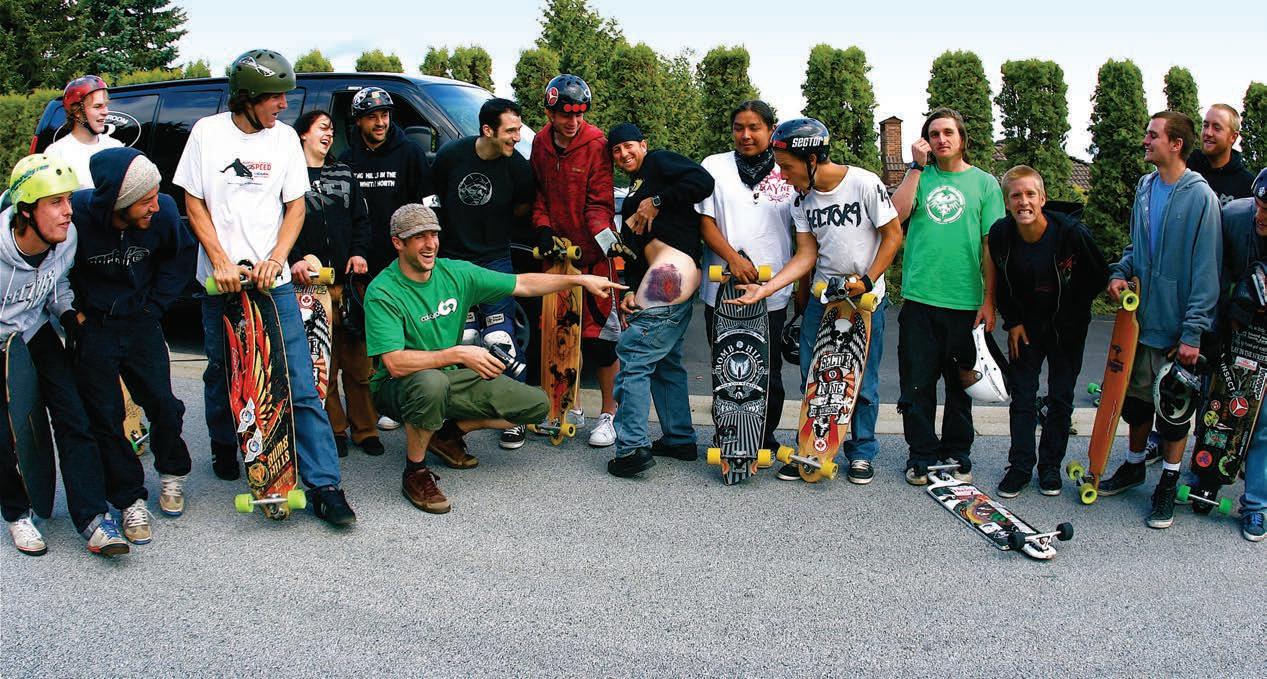
More and more skaters are opening their doors to fellow travelers and making it easier to attend races and freerides around the world. Jackson “Jacko” Shapiera and his parents are a great example: They take in the community and house riders when attending races in their area. It was a blast. Thanks again, Pip!
Through all of the awesome trips I have been on, though, I must say nothing beats home ...

74 CONCRETE WAVE HOLIDAYS 2011
Itook a heavy hit in a crash at Danger Bay one year. It left a bruise on my hip for a month. I still wanted to hang out and be a part of the session, though, so I volunteered to be the driver for the rest of the trip. Here we are getting a group photo before skating theBPs in West Vancouver.
Ihope this article has given you a glimpse into my life and what inspires me to keep doing what I do, always pushing forward. In life, everything comes full circle. It is awesome to experience this firsthand in the skateboard industry. Kids can now go out and freeride on their local hills, without restrictions, memberships or rules. As street skaters did when vert faded, kids are again using the streets to express their individual skating style. This is how it used to be – and how it should be. I look forward to being a part of this new type of skating that is evolving in our industry, freeriding.

Being the team manager for Sector 9 and the brand manager for Gator Grip has allowed me to involve myself in the development of new products that will hopefully keep kids safe and inspired to keep pushing. It may be cliché to say "love what you do and do what you love," but these words couldn’t be truer when it comes to my career and my life. Not a day goes by that I would ever take that for granted. So, as I said, when people ask me what I do ... I do what was done to me, and I make kids’ dreams come true. CW

HOLIDAYS2011 CONCRETE WAVE 75
Photo: Joey Budro
Jeff and his faithful companion, Pivot.
Photo: Jeff Budro
STARVING ARTIST GUIDE
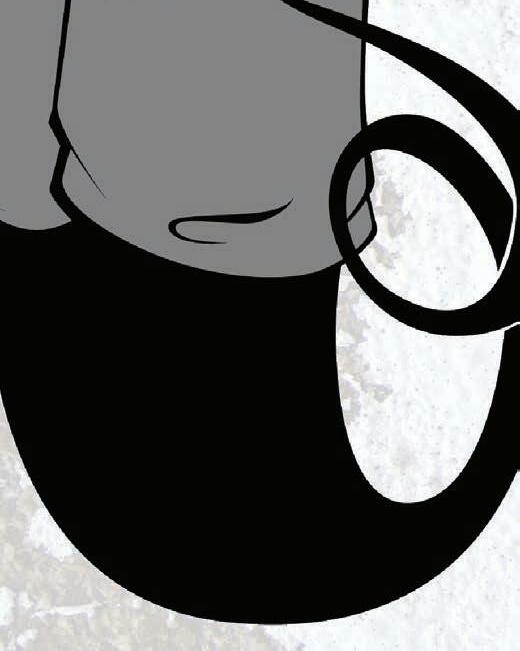

HOW TO GET INTO THE SKATING INDUSTRY
S



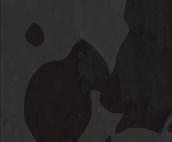



















If you don’t know me, I am an artist by the name of Rodgon. I have had the pleasure of working with a massive amount of companies in the skate industry over the years. I am known as an artist, but I am also an avid skater and adrenaline junkie. I hope I can help out you up-and-coming artists with these articles and help you all get noticed in this very crowded world of skating art. So let’s get to it, shall we?


It doesn’t matter if you’re a slider, a speed freak, a pumper, a cone junkie, an ollie freak or a freerider – all of us know a good-looking deck when we see one. And if you do art as well, you may have wondered, “How do I get to do this for a living?!” Well, I’m here to tell you how.
The beauty of the art in the skating community is that no two companies want to have the same art, and many companies are constantly looking for amazing art for their products. It’s up to us artists to make people smile when they lift up their boards.

Step 1: Skills

First things first: You need to be able to draw or paint, or at least make something look pretty. This has to go beyond the skills that get praise by your mom, though; you need to try to get to a level where other people appreciate your designs. You will be competing with some amazing, ridiculously talented artists who are already well known, so you need to develop amazing skills as well to be on par with them. Remember, you want to make money doing this, so put forth the effort.
Step 2: The Art
Now that you have the skills to develop cool stuff, you actually need to make some. Most artists will hold a body of work of at least 15 pieces – although I think you can get away with 10. That should be enough to demonstrate your skills to their fullest and show your range as an artist to clients.
Remember, though, that you MUST NOT include any work you don’t consider to be your very best. If you’re not confident you put 100% of your talent into it – don’t put it in. Bad art, or even just OK art, will make you look like an amateur and make your best pieces look worse.
Step 3: T




So now you have the skills and the art to show the world, but unless you have somewhere for people to view it, no one will. It does no good to just have it on your computer or sitting in your living room, does it? So welcome to the Internet!
If you have the money, get a website made. But if, like most of us, you don’t have the extra cash just yet, you can get away with a really cool-looking blog. Sites such as Blogger and WordPress allow you to add your own personal touch to thousands of templates online to show off your art exactly as you want it – and best of all, for free!
Make sure to demonstrate your art in a direct and well-laid-out format that matches your art. You don’t want to have flowers and kitties if your art is about dark demons and monsters, right? This website will be your portfolio, your history as an artist and your livelihood. So make it good.
mpeer, a llli if you u d we telll you u ho h
IN 76 CONCRETE WAVE HOLIDAYS 2011
SKATINNG
Step 4: G

























OK, now comes the fun part! – getting your name out there. It’s going to take more than just having a cool name like Rodgon to get out there and get noticed. It’s going to take a lot of effort and strategies for you to have your name known. Luck y for you, I have four tips that will guarantee your name will be known by the people you want.
1. Be an art forum troll!
Ever heard of Silverfish Longboarding? Well, if not, you’d better. Forums such as these will be the best way to get noticed by the people you want. Sign up, start a thread and post your art – lots and lots of art! The more you show, the more people will see and the more they will notice you. Go to every art thread you can find and comment, post your stuff if it applies, and make people know you know your stuff. It will take time, but your art will speak for itself. If it’s good, you will know. Just remember: If people are not seeing your work ... it’s because you aren’t posting enough of it.




2. Don’t forget the little guys

It’s not just the big companies that need art. Smaller companies also need it, and these guys are your first-class ticket to getting noticed. T might not have the massive pockets to pay you for your art, but what they do provide is something you will need more: word of mouth and loyalty. These are worth more for you at first than a fat paycheck, as they are one of the best ways to get work in the future. So make sure to help out as many as you can, with as much as you can, and just remember that even though you might not be getting paid much at first (or at all), these companies will help you out more than you might think.
3.













Contests




Go online and search for any competition you can fi contests running. It will typically be a company looking for a new graphic for their boards, a logo design or T-shirt designs. These contests will show you how your art stands up against other artists’ work, and how people react to your work as well. They’ll show you what you need to improve on, and they will humble you if you start getting cocky. Learn from each one, and soon enough you will be winning them.
4. Be


Don’t forget to be unique. No one wants a copycat artist; they want the original. Make sure your style and the angles you approach are yours and yours alone. Make your style as sick and gnarly as you can! If you make your style stand out, you will always be more valuable than any artist who just replicates – even if they are technically better than you.
STEP 5: HAVE FUN!
That’s it – just have fun. Without this step, nothing you do is worth it. These steps, if taken to heart, will make you into an artist who is well known, and will also help you become better at what you love. I know this because these are the exact steps I took to get to where I am right now. So go out, have fun and let’s start making art that will change the world, one deck at a time.
-Rodgon-




If you’d like to have some questions answered, want to customize your deck and don’t know how, or if you just want to drop him a line, Rodgon can be found online browsing the ’Fish, or you can send him an email through his site, 12thpixelstudios.blogspot.com.













Rodgon’s Top Companies



Bustin: Street art-oriented designs for those who are not art-inclined and want something custom, and a lot of extras for those who are. They let you customize a deck with your own art if you want! What’s not to love?










Arbor: Not always noticed, but they have amazing artwork on their decks! Take a look at some of them – you’ll be surprised.


Sector 9 DH Division:



Retro wartime pinups in the lovely yellow/black/white we all know S9 for. Add some grime and you get a stunning line of decks.
Rayne: Some of the coolest illustrations in the market. Street art style with tons of colors, and well printed on the decks. The first Killswitch is one of my favorite art decks of all time.
Landyachtz: They have recently updated their graphics with some really epic-looking art. Lots of variation in their lineups, with their more popular boards having amazing art!
allll), ), theese se com o paanies e wiilll l he p you o out u morore e th than n you u miggh you wi w ll be wi w nn n n in i g thhem coopy p ca k ke and n you e a willl l al more e v l alua u r than n yo y u. u HOLIDAYS2011 CONCRETE WAVE 77


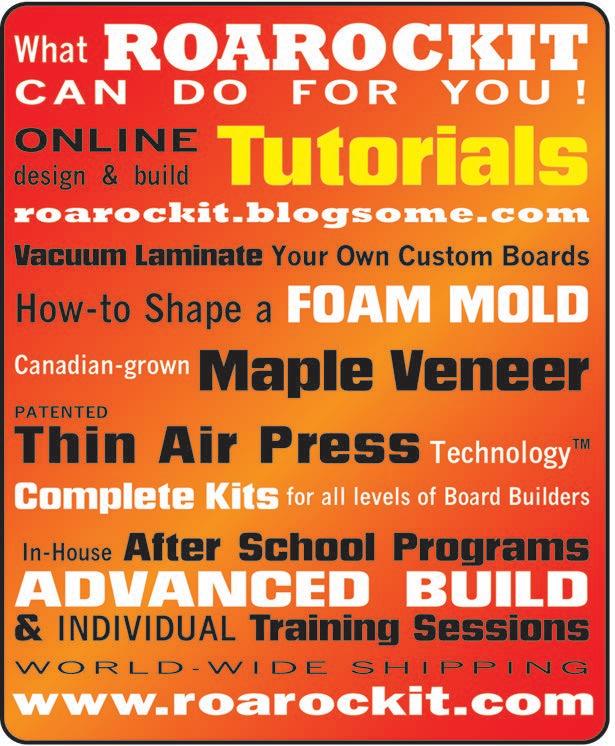

78 CONCRETE WAVE HOLIDAYS 2011

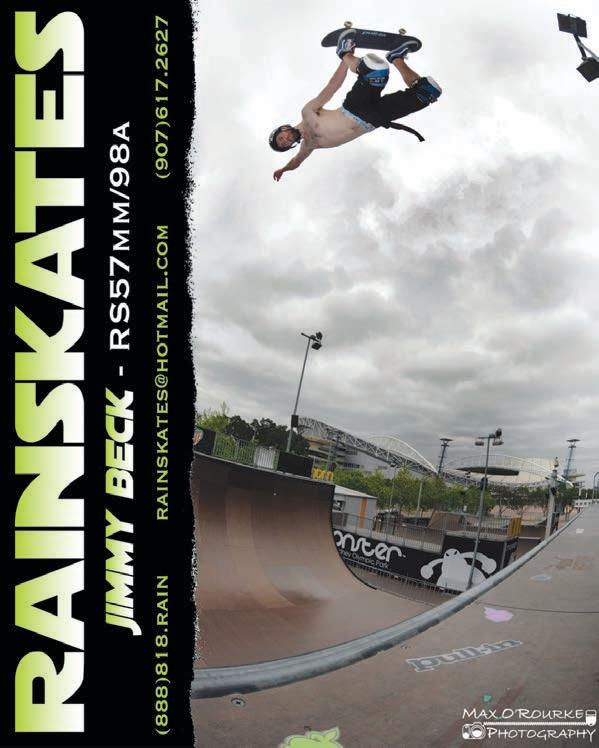

HOLIDAYS2011 CONCRETE WAVE 79

PHOTO ANNUAL
A Flow State of Mind.
Type “flow state” into Wikipedia and you'll learn about a Hungarian-born psychology professor with a curious name. Mihaly Csíkszentmihályi is known as the architect of the notion of “flow” – a state of concentration or complete absorption in a situation or activity – and for his years of research and writing on the topic. In his influential book, Flow: The Psychology of Optimal Experience, Csíkszentmihályi outlines his theory that people are most happy when they are in a state of flow — a state in which they are so involved in an activity that nothing else seems to matter.
 Wesley Harkavy shines on.
Photo: Dylan Harkavy
Wesley Harkavy shines on.
Photo: Dylan Harkavy
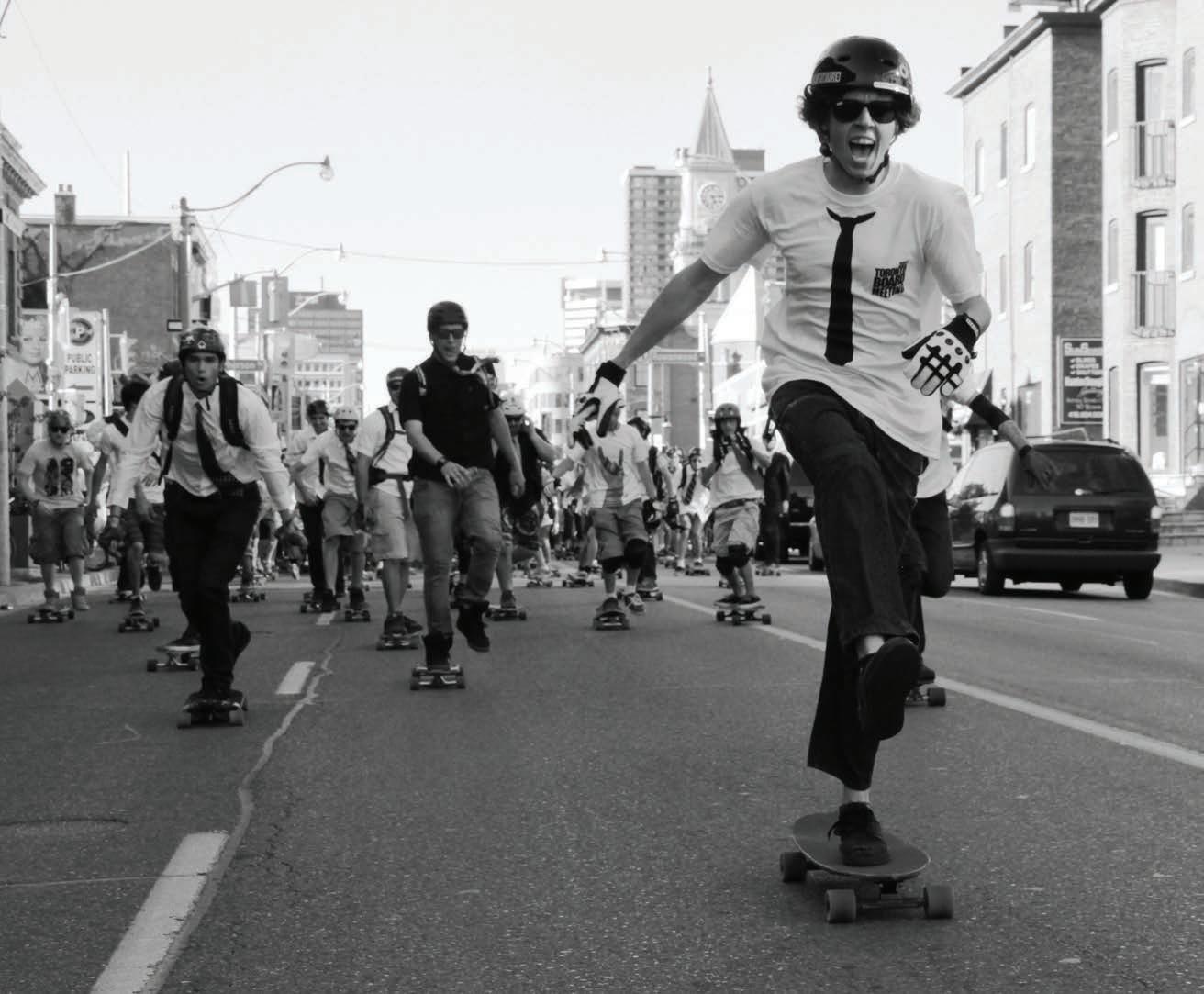
 Matt Livingston leads the charge at the 2011 Board Meeting in Toronto.
Photo: Jonathan Nuss
Matt Livingston leads the charge at the 2011 Board Meeting in Toronto.
Photo: Jonathan Nuss


 Kenny Wright takes flight.
Photo: Jeff Nass
Start of the 2011 Broadway Bomb, NYC.
Photo: Brian Babish
Kenny Wright takes flight.
Photo: Jeff Nass
Start of the 2011 Broadway Bomb, NYC.
Photo: Brian Babish

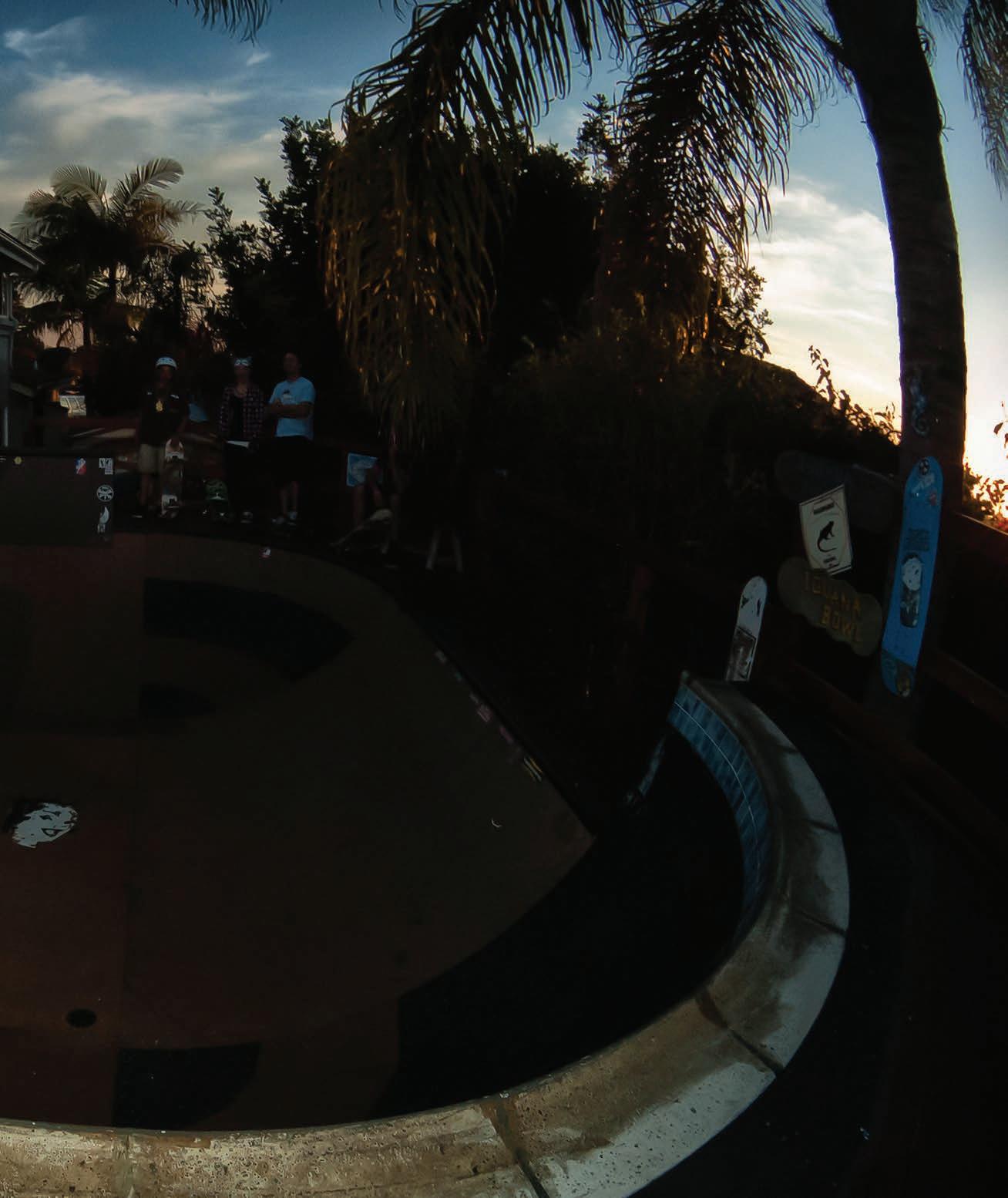 Guto Lamera stylish frontside air, Max's Bowl, Encinitas, California.
Photo: Dan Bourqui
Guto Lamera stylish frontside air, Max's Bowl, Encinitas, California.
Photo: Dan Bourqui
 A Venice local by the name of Buddha carves his own path.
Photo: Ray Rae Goldman
A Venice local by the name of Buddha carves his own path.
Photo: Ray Rae Goldman


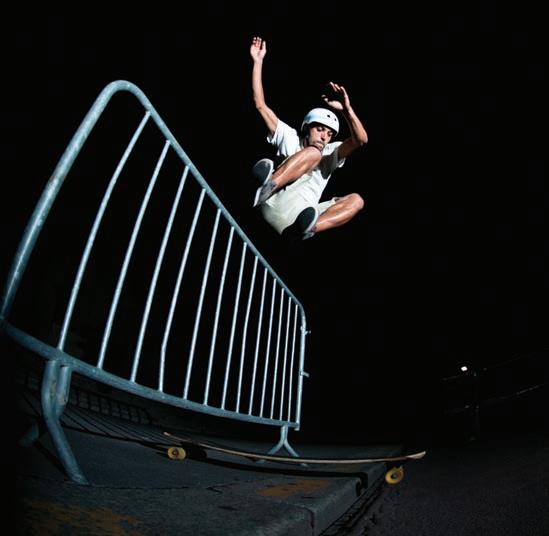 2011 Toronto Board Meeting — overview of Yonge Street.
Photo: Michael Brooke
French longboard guru Lotfi jumps a barrier perilously close to a curb.
Photo: Paul Norton Taillandier
2011 Toronto Board Meeting — overview of Yonge Street.
Photo: Michael Brooke
French longboard guru Lotfi jumps a barrier perilously close to a curb.
Photo: Paul Norton Taillandier
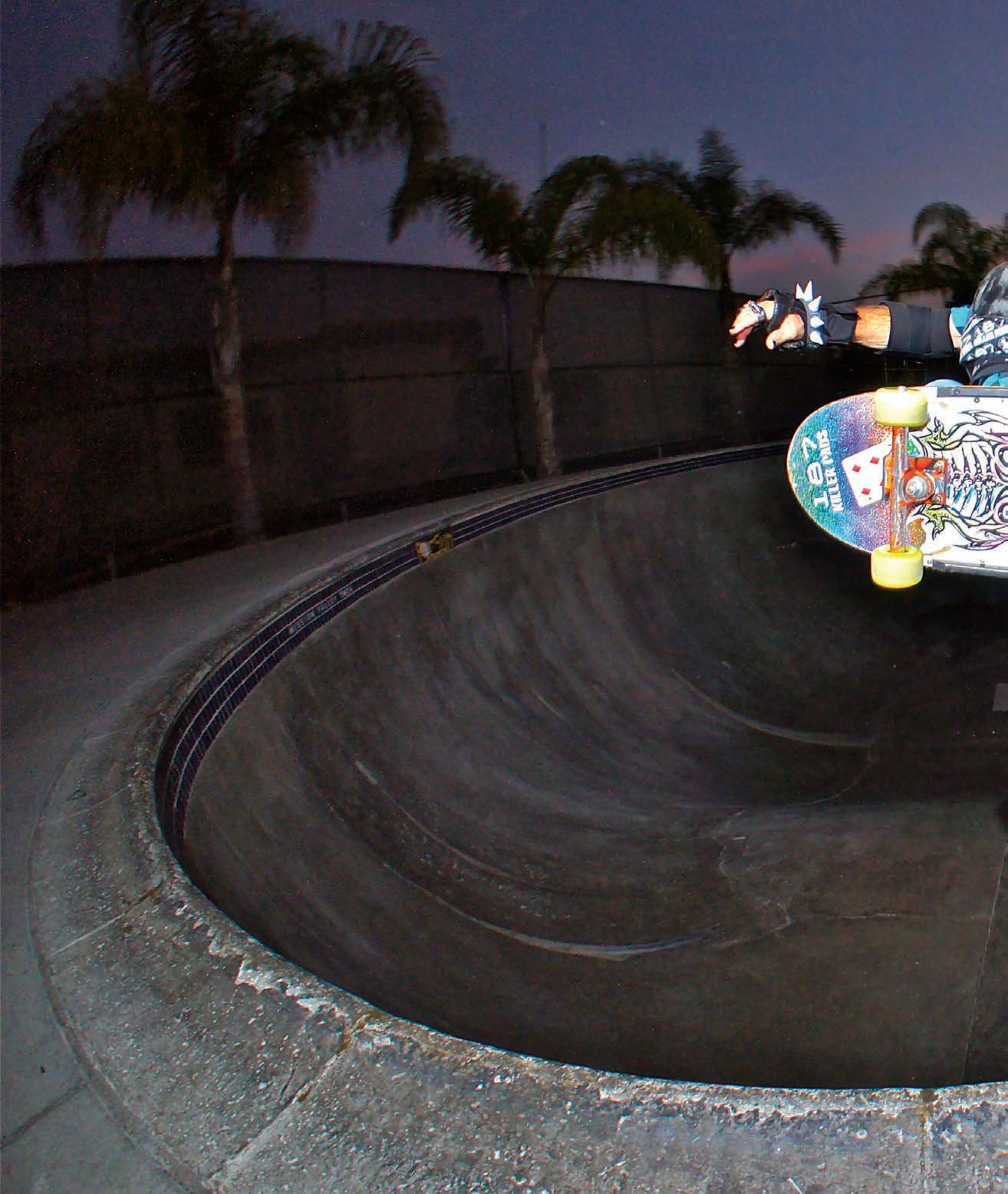 Jeff Tatum launches a powerful frontside air as the sun sets.
Photo: Dan Sparagna
Jeff Tatum launches a powerful frontside air as the sun sets.
Photo: Dan Sparagna


 Renan Lazzarotti skillfully displays a one-footed nose manual.
Photo: Rafael Fazano
Renan Lazzarotti skillfully displays a one-footed nose manual.
Photo: Rafael Fazano
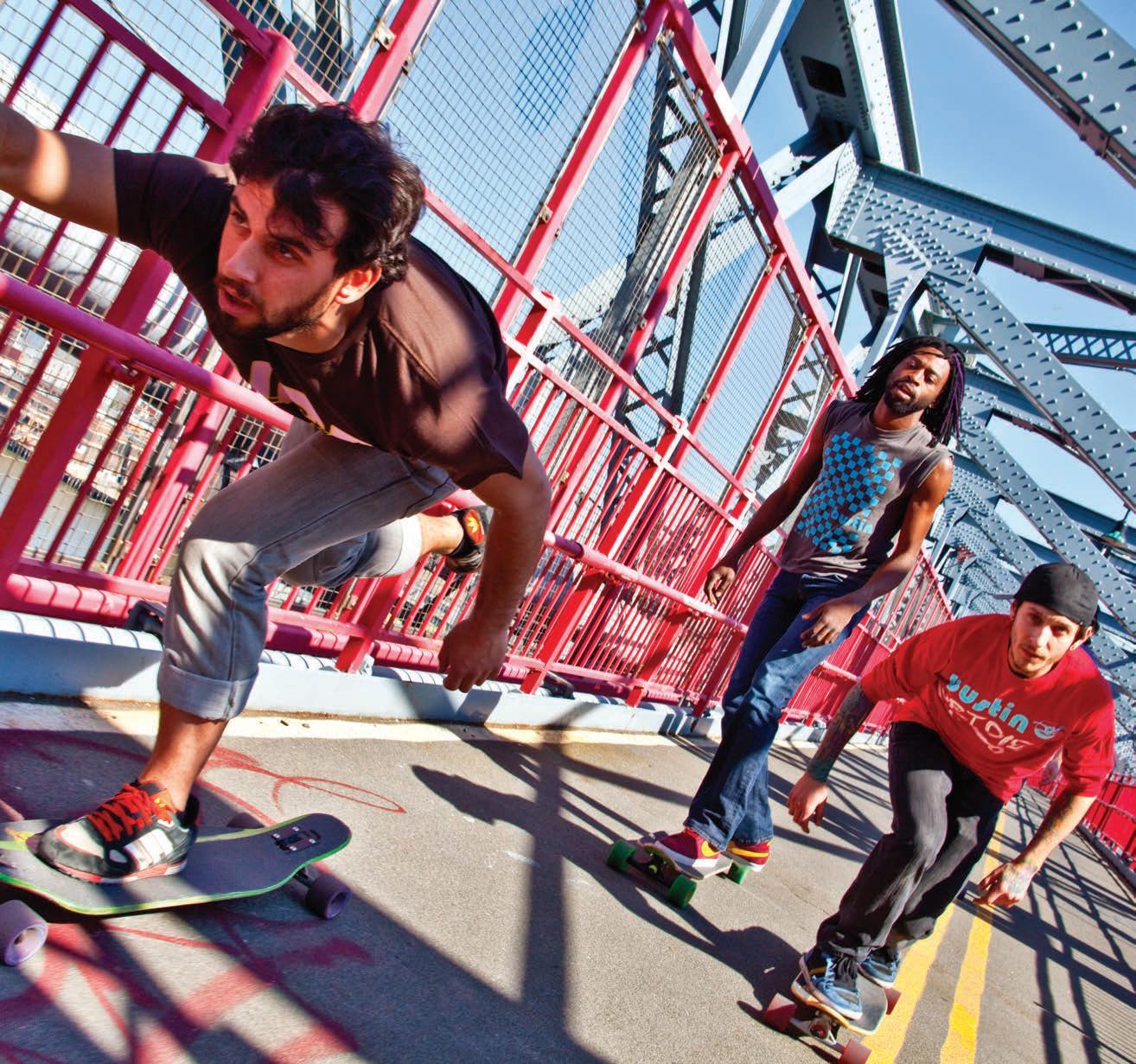 Mike Dallas, Solomon Lang and Mark Schaperow enjoy the rush of the Williamsburg Bridge.
Photo: Brett Beyer
Mike Dallas, Solomon Lang and Mark Schaperow enjoy the rush of the Williamsburg Bridge.
Photo: Brett Beyer


 James Kelly closes out the corner.
Photo: Max Dubler
Robin McGuirk slides into a turn at Alameda Ridge, Oregon.
Photo: Spencer Knuttila
James Kelly closes out the corner.
Photo: Max Dubler
Robin McGuirk slides into a turn at Alameda Ridge, Oregon.
Photo: Spencer Knuttila

 Bloody knees and falling leaves. Eduardo Furuga tears up the streets of Brazil.
Photo: Rafael Fazano
Bloody knees and falling leaves. Eduardo Furuga tears up the streets of Brazil.
Photo: Rafael Fazano

 Alex Tongue attacks the Alameda Ridge in Portland, Oregon.
Photo: Spencer Knuttila
Alex Tongue attacks the Alameda Ridge in Portland, Oregon.
Photo: Spencer Knuttila
 Katie Neilson is a fierce downhill competitor.
Photo: Andi Leslie
Katie Neilson is a fierce downhill competitor.
Photo: Andi Leslie
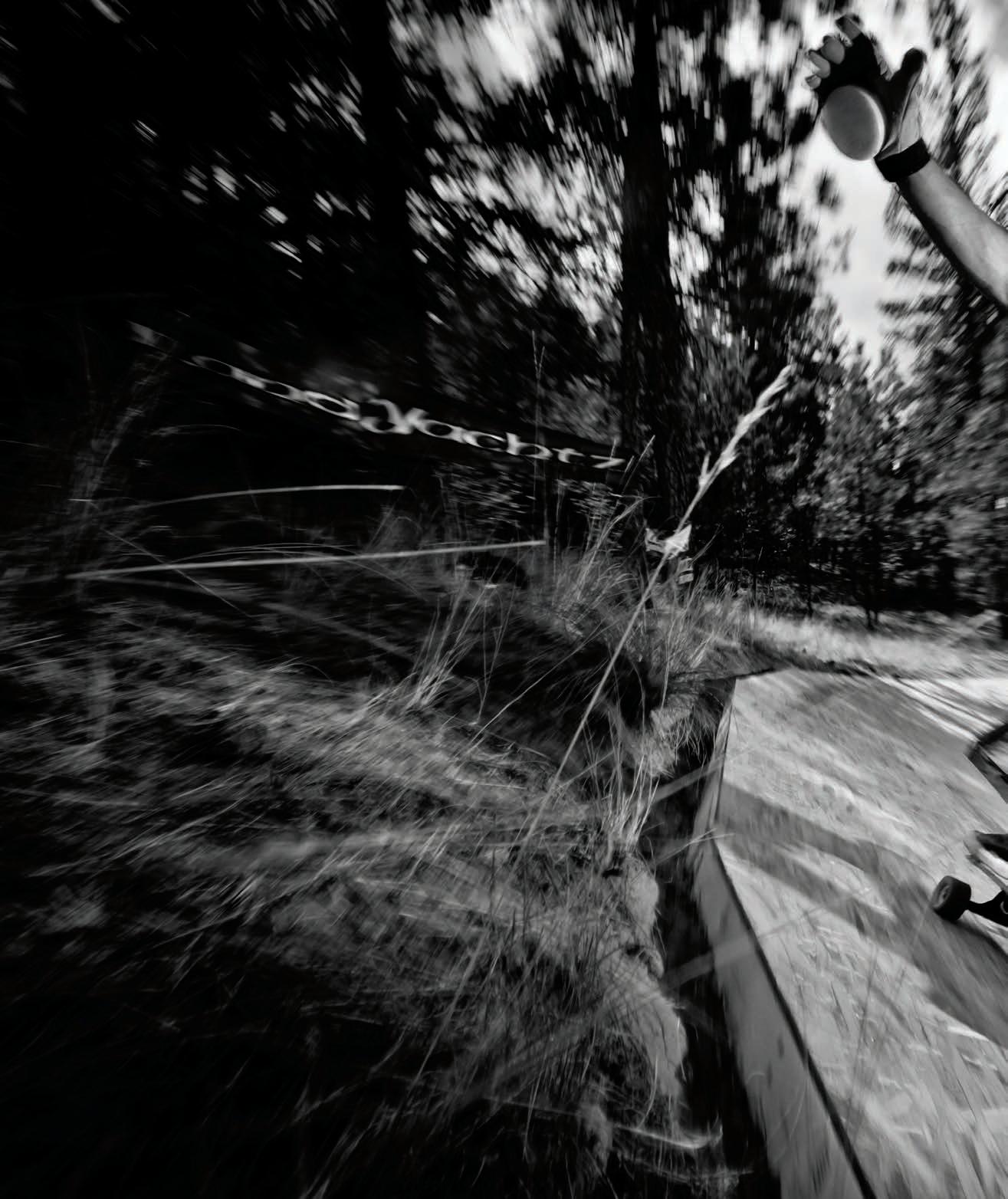 Étienne Roy-Martel sails around the shortcut at the Giant's Head Freeride.
Photo: Jon Huey
Étienne Roy-Martel sails around the shortcut at the Giant's Head Freeride.
Photo: Jon Huey
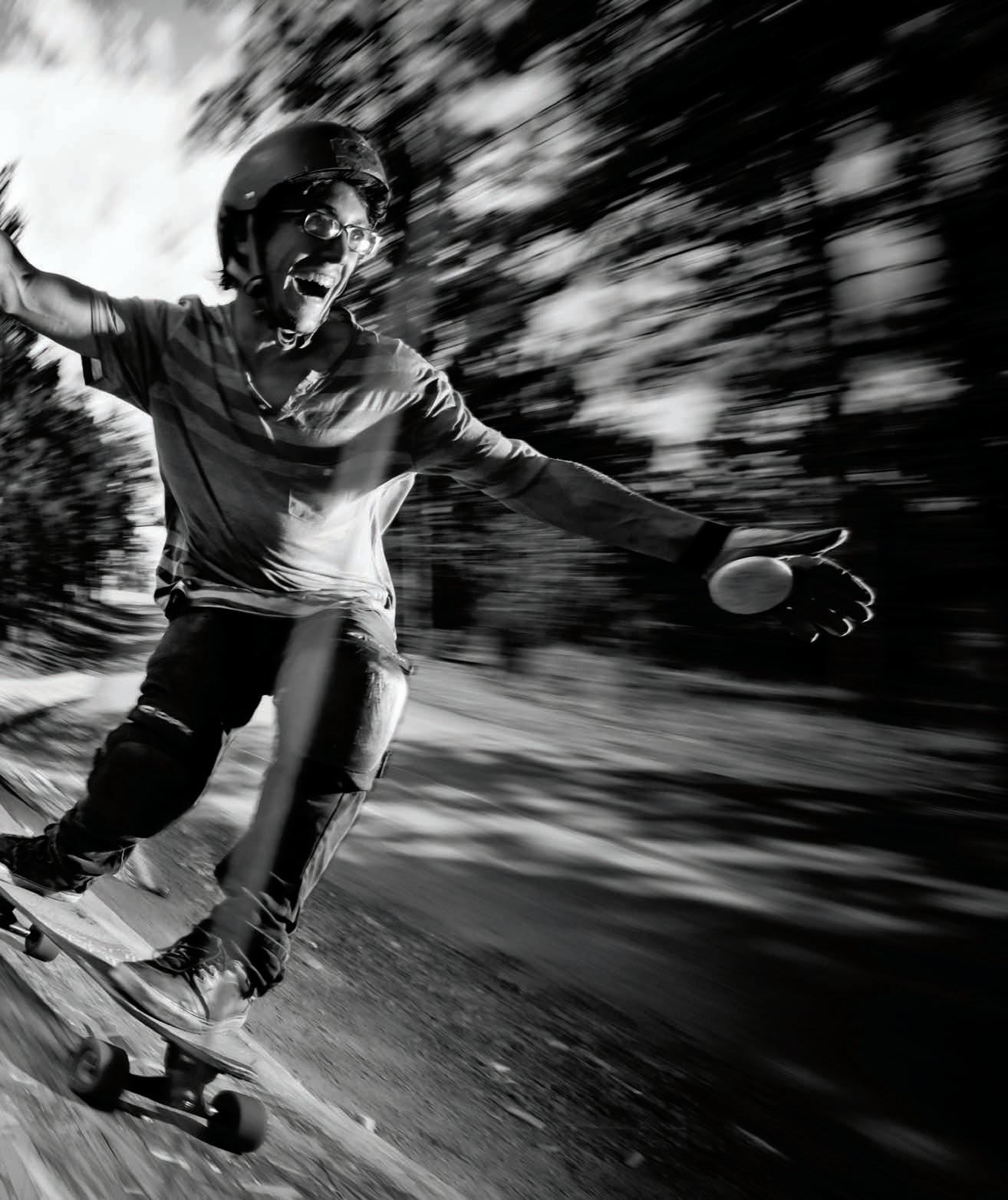
Half the Hills, All the Skills

JUST WHAT THE HELL IS HAPPENING IN TORONTO?
INTRO/DISCLAIMER
This is probably one of the most difficult articles I’ve ever had to coordinate and write. The reason is that I live in Toronto. Actually, that’s not technically accurate. I moved to Toronto in 1983, but have been living in a suburb just a five-minute skate from Toronto since 1989. So technically, I live in the Greater Toronto Area (a.k.a. GTA). But that’s not the issue.

The issue is that there are so many amazing people who have helped develop the Toronto scene that I knew it would be ridiculously difficult to cover all the bases. And since this is my hometown, I know that people will be upset by the multitudes of things I’ve missed. What we
BY MICHAEL BROOKE
present here only begins to scratch the surface. I am proud to present this feature on the scene here. It is long overdue. But to my fellow GTA’ers, know that I have strived to present the most comprehensive picture I could.
WELCOME TO THE T-DOT
Toronto’s longboard scene would puzzle those lucky enough to live near mountains or who are blessed with endless warm, sunny days. Toronto has neither of those things in any great abundance. Actually, it doesn’t have any mountains, and it can get freakin’ cold here from November through April.
But despite being vertically and sunshine-challenged,
100 CONCRETE WAVE HOLIDAYS 2011
GTA longboarders possess some of the greatest skate stoke you’ll ever encounter. I asked Mike McGown, a.k.a. Smooth Chicken, what makes Toronto so unique.

“We’ve got a scene here unlike anything else in the world,” he says. “The skating that’s going on here is different than anywhere else. I brought some folks back from Germany who were at the Worlds slalom in Ottawa. They were totally out of their element. The lowspeed, freestyling skate style is different than everything else.”
I’ve known Adam Winston, a.k.a. Joker, since he was in high school. He’s been at the forefront of creating the magic here in Toronto for more than a decade.
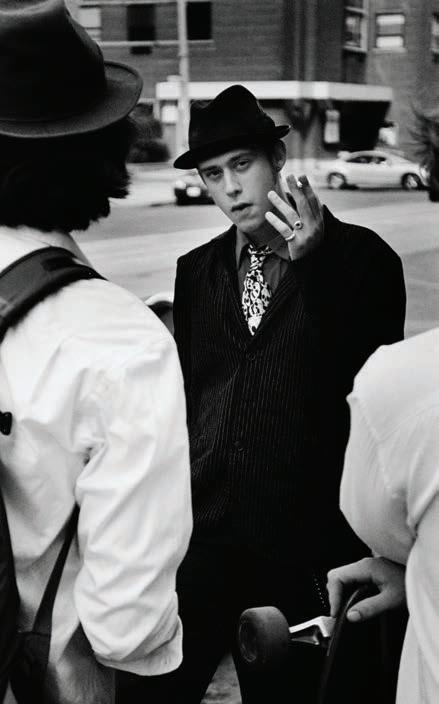
“The very first session, I posted up on Silverfish,” he says. “It was this parking garage … 11 years ago. There was a small group of folks who would meet up at Hogtown [skate shop] and go skating. Tom Browne (a co-founder of the Metro Longboarders back in 1997 with yours truly — Ed.) headed up this group. Rob Sydia would also come out and we’d go to Burlington and try and skate the hills. But we just didn’t have the skills.
“There were three or four of us; we’d look forward to the weekly session. We met Chris Barrett and Mike Cividino [and said], ‘Hey, we should get our own forum.’ But apparently there already was one. Chris had already made it. So we just started using it.”
THE ONTARIO LONGBOARDING FORUM
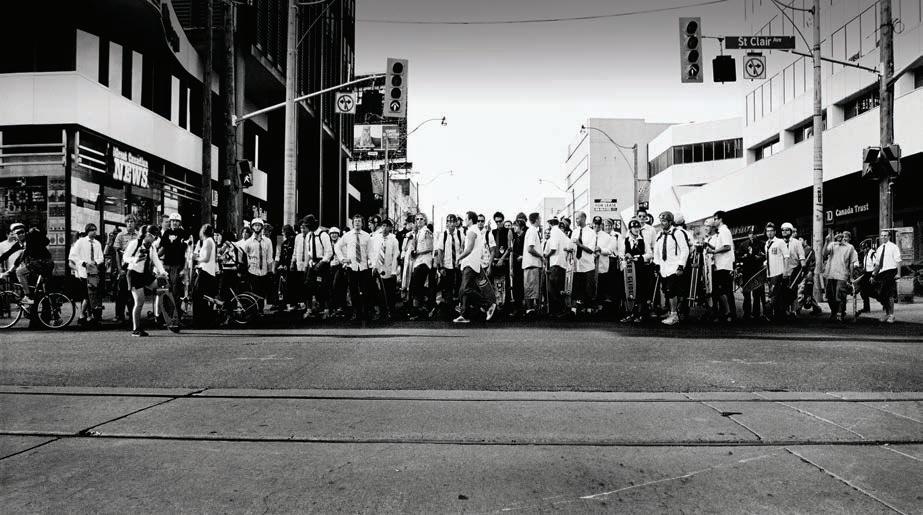
The forum Barrett developed was called the Ontario Longboarding Forum, or OLF. Before it was created, information about local sessions and riders was communicated through silverfishlongboarding.com. In April 2004, Adam, Smooth Chicken, Mike Cividino and Rob Sydia met up with Chris, who dabbled in a number of fields, including slalom, and started talking about the need for a forum just for the Ontario longboard community.
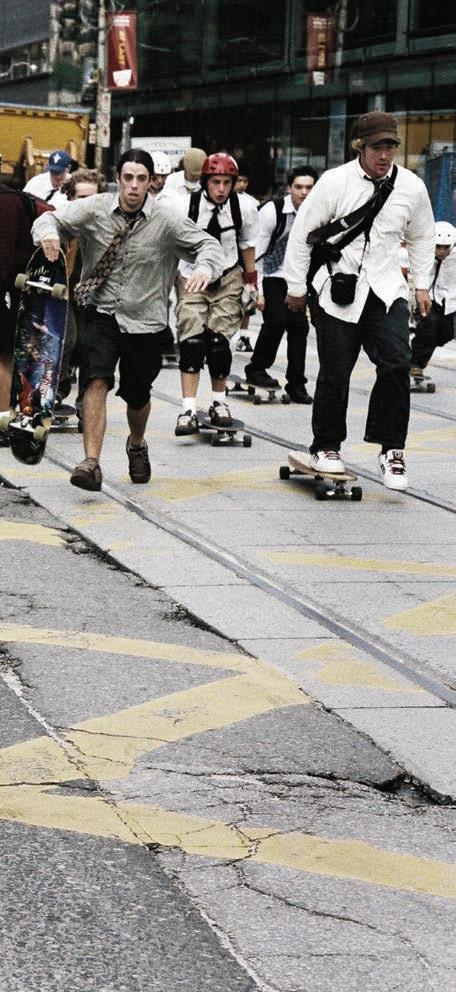
HOLIDAYS 2011 CONCRETE WAVE 101
Board Meeting 2005. Photo: Jonathan Nuss
Adam Winston, 2005.
Photo: Jonathan Nuss
Smooth Chicken, 2004.
Photo: Jonathan Nuss
Board Meeting 2006.
Photo: Jonathan Nuss
MEET SOME OF OUR RETAILERS
Downtown Toronto has some great places to buy longboards, and we’d be remiss if we didn’t share a number of them in this article.

On King Street West, just near Spadina, you’ll find Hogtown Extreme Sports. This legendary shop has been a fixture on the scene for almost three decades. For years, Hogtown has carried a wide selection of product, and helped to grow the interest of longboarding back when there were only a handful of interested parties. Sadly, Peter Wheldrake, the founder of Hogtown, passed away in August 2011 in a biking accident. He will be missed. On Queen Street West, you’ll find a fascinating shop called So Hip It Hurts. The longboard section is in the back, but walking through the shop is half the fun. Three years ago, Ryan Rubin and his friend
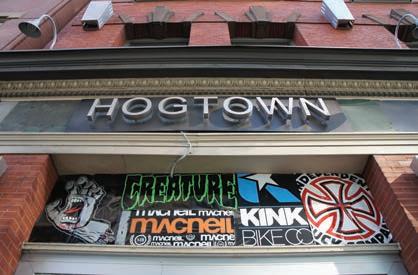
“We knew there were people out there, and the more we scratched at the surface, we realized there was a need for [a local] forum,” says Chris.
OLF has been an incredible tool for bringing Toronto skaters together. Thanks to it, the scene has grown organically and exponentially.

“People really liked the ability to talk to people,” Chris says. “They weren’t too interested in how it looked.
“Slowly, but surely, it got bigger. We started with a handful of people, and then it just exponentially grew. It was like a virus. It overwhelmed us.”
Chris says he wants to keep providing more and more features that add value for OLF members. “Things like messaging and calendars have been widely embraced, but I’d like to be able to offer things like video sharing,” he says. “But the fact is, I really want it community driven and give the users what they want.”
Suzanne “Ponyta” Nuttall has been instrumental in helping the scene grow in Toronto. (More on her accomplishments in a moment.) She is quick to heap a huge amount of praise on Chris.
“The website has been at the heart of the community,
102 CONCRETE WAVE HOLIDAYS 2011
Mischa Chandler
created Longboard Living, which now has two shops in Kensington Market. Throughout the spring, summer and fall, the shop conducts a number of workshops on riding skills. And on College Street, you’ll find Junction, a shop that has just been newly renovated.
long before the existence of other social media sites,” she says. “It’s been a place where a lone skater can find out about sessions around town and make like-minded friends.”
VISUAL HISTORY
As with every skate scene, there’s always that one person who painstakingly documents it all. That person in Toronto is Jonathan Nuss, whose many photos grace this feature.
“The scene right now in Toronto is magical,” he says. “More things have changed in the last two years than in the last 10. What started with a small group of friends … turned into a small community and now has turned into a giant family. These kids right now are killing, and the Toronto boom has just begun. Everywhere I go, I see other kids with longboards in their hands. There were 900 people at Board Meeting this year! Everyone’s hard work is finally paying off. I am lucky to be a small part of it.”
BOARD MEETING
How did 900-plus longboarders wind up gathering in September of this year? Well, you have to go back to

POSTER CHILD FOR A FALSE ALARM
During the first two years of Board Meeting, Jonathan Nuss says he and Benjamin Jordan would put up posters at the top of every hill in Toronto, hoping a longboarder would see them.
“Every time we saw a random longboarder, we would chase them down, hoping they would come out,” Nuss says.
Many of the riders also came because of two punk kids who called themselves “Smooth Chicken” and “Joker,” who seemed to have quite a following.

The posters led to some bad press in 2005 when they invited riders “to bomb Yonge Street like never before.” A worried, non-skating citizen thought it was a real bomb threat, and the police wanted to shut the event down. After that, promotion of the event had to go underground, spread mainly by word of mouth and the people on OLF.
2003, to a guy by the name of Benjamin Jordan. I’ll let Adam Winston take up the story from here.
“Benjamin Jordan would come to sessions, and he was kind of like a hippie,” Adam says. “He saw things a bit differently. He was taking a course in which he had to come up with a community event.”
What Jordan came up with was Board Meeting, a joyful, light-hearted reinvention of its stuffy, stereotyped namesake: a gathering of longboarders, most of them wearing white “office” shirts and ties, riding together through downtown Toronto as a show of camaraderie and community spirit.
“It was like 15 people the first time we did it,” Adam says. “It was cool to skate with a group that big.”
Adam says that at first he didn’t do much to support the event: “All we did ever did was put out a few posters and talk to a few people. It was all Ben.

“After a while, he just left. He skated across Canada for Push for the Cure. And after he left us with this event. Everyone enjoyed it but there were no rules.”
Benjamin Jordan created something magical with Board Meeting and his skate stoke is still strong. He was enjoying the moment when I spied him at the 2011 Board Meeting — thrilled to see so many people had taken hold of his idea.
Chris Barrett.
Photo: Jonathan Harms
Adam at the 2011 Board Meeting.
Photo: Michael Brooke
Super Mellow Beach Cruise
Photo: Andrew Yeung/longboardism.com
my two sons. It was not only a terrific day of longboarding, it was just a great feeling sharing and passing along all that skate stoke to my kids. The police were incredible. They helped with traffic flow, and you just knew it was one of those magical moments.
But Board Meeting isn’t the only event on the scene where the multitudes gather. In 2005, Jonathan Nuss, Benjamin Jordan and Janelle LeClair started a weekly skate called “Old School Night Shred.” They would meet at Queens Park every week to shred all the downtown garages, and Ben would make videos with his point-and-shoot camera.
“We wouldn’t go home ’til our legs felt like they would fall off,” Jonathan says. “It was a fun place for all skill levels to skate together, male or female. We were all equals. I remember this dude named Patrick Switzer, the most stoked kid every week. He would pump the s—t out of these garages on a different board each week.
“We were a giant family and it was all love. We would forget all of our troubles and just skate with giant smiles on our faces. It was all very simple, and I was very lucky to have been there.”
SNOWBANKS, SALT AND MINUS 30°




Winters can get mighty cold here in Toronto. But that doesn’t deter the hardy souls of the Great White North, who’ve been known to go out riding even in the middle of January.
“It was minus 30°, but it was dry on the roads,” Winston says. “I was wearing my leathers and two down jackets.”
Smooth Chicken explains you’d best be wearing your leathers or multiple layers, unless you want hypothermia: “When you the roads get dry — sometime in January — you throw on some ski goggles and five or six hoodies and you’re good.”
Oddly enough, there are roads that some longboarders will ride only in the winter because the snowbanks actually offer some protection: “We’d hit that instead of a guardrail,” Winston says.
Besides the cold, though, winter brings two other challenges: road salt and black ice. Salt is tricky and unpredictable to ride through. If you’re lucky, the worst it
will do is bounce around in front of your wheel as you’re moving forward. If you’re not so lucky, it will form a perfect wedge in front of a wheel and toss you off your board. As for black ice, that thin coating of glazed ice on the asphalt that is practically impossible to see — well, you just pray for the best. You definitely don’t want to hit black ice.
THE ESCARPMENT SURFERS
The Greater Toronto area encompasses a huge amount of territory, but most of it is pretty flat — not as flat as, say, Florida, but pretty darn flat. However, as you start heading west toward St. Catharines/Niagara Falls/Buffalo, you’ll spy what is commonly known as the Niagara Escarpment. It actually spans over 700 kilometers of terrain, but longboarders focus on the parts that give them the most joy: the hills!
John Barnet grew up on the escarpment. He used to ride it on his “regular” skateboard. Then, he says, “Someone told me, ‘There’s actually a board for that — it’s called a Sector 9 longboard.’ I went and got one and started ripping down the hill. In my area, I was the very first person.”
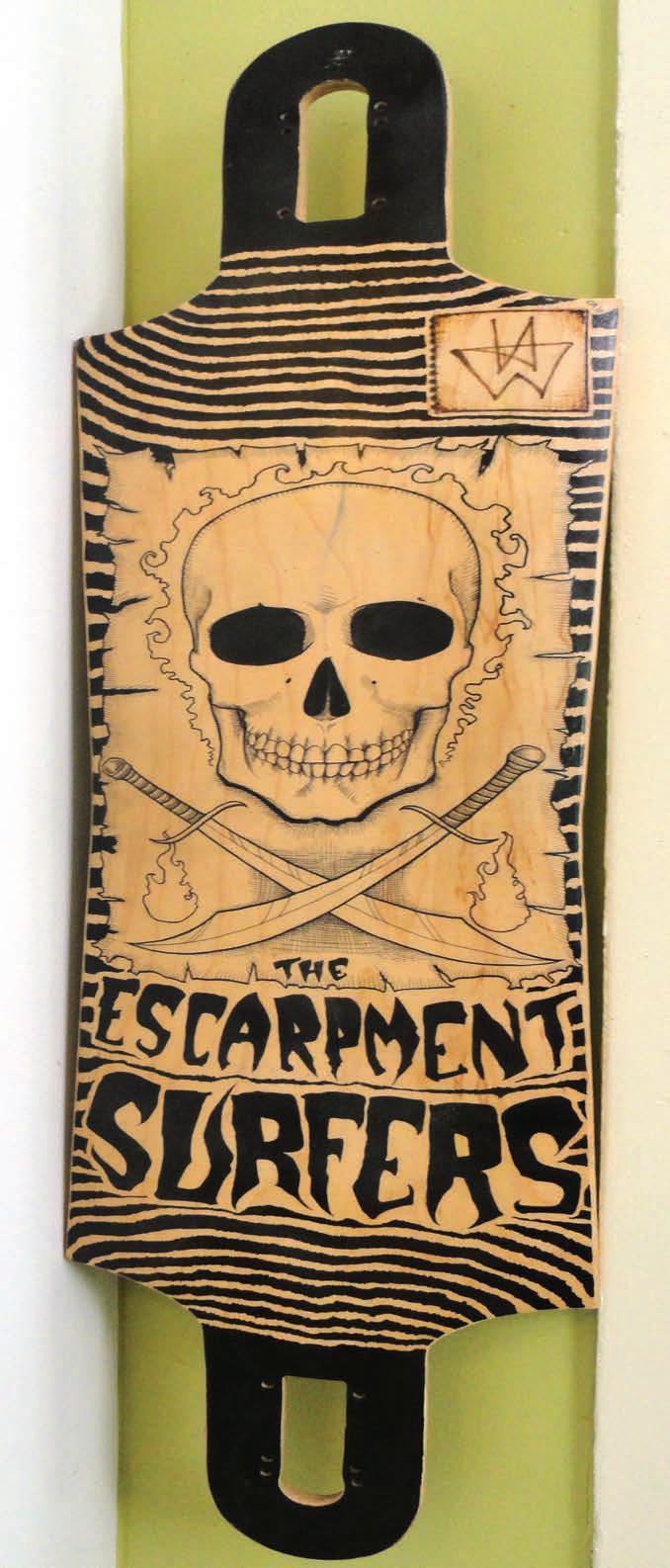

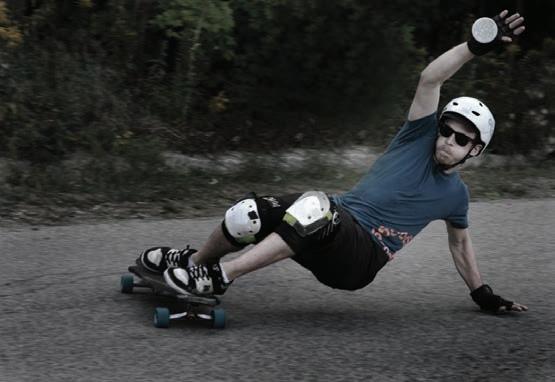
others. A tight group of hard-core riders emerged, forged on the hills of this unusual terrain. They called themselves the Escarpment Surfers. ES riders were undaunted by circumstances. Despite the often lousy pavement, Adam Winston recalls a time when they’d go five days a week and ride 12 to 14 hours per day.
The forces of nature were not the only challenge. Barnet says, “It seems like you can skate all day in BC and never see a police officer. In Ontario when people are out skating a lot, the ES could do three runs on a hill and we had to run. If we did a fourth run, there would be cops there. It’s always been like that. We describe the term as skating ninja. There are only 12 runs around here. And the cops know where they are.”
Ontario hills can be good-sized but are not overly huge or steep. Barnet says it’s possible to hit 100 km/h (60+ mph), but to do that, you have to really work. As riders hit the Escarpment, it was apparent that everyone was tucking es it eloquently: “We learned how to maximize the hills. You need to hone certain skills to go fast on them. It is the land of unnecessary all the skills.’” Barnet says the early days were a pretty competitive time.: “It was a group of 10-15 people, and every time we went out it was a race. We were constantly pushing each other. There was this blue van and in the glove box there was the name of [whoever] had hit the fastest on each hill. It was scratched out quite a bit.”
104 CONCRETE WAVE HOLIDAYS 2011
Adam Winston. Photo: Jonathan Nuss
John Barnet. Photo: Jonathan Nuss
“It was for bragging rights,” Winston says. “It was always a pissing contest. We have met other groups of skaters who skate the same hills who don’t skate the way we do. And to this day, there aren’t people who skate them like we do.”
“The thing about the ES is that we were victims of our own demise,” says John. “We never stopped pushing; it was never good enough. Adam hit a guardrail and has a pin in his leg. Chris Avataro broke his collarbone. I’ve been taken out in an ambulance.”
Winston admits that for a long time everyone had something to prove. But after sitting at a doctor’s office and told he might not be able to walk again, he started to gain some perspective.
“I’m going to do it for myself now,” he says. “It’s more about personal bests. Trying to pass your buddy and put him into a guardrail — those days are over.”
THE SUPER MELLOW BEACH CRUISE
But it’s not all racing and drifting in Toronto. In fact, if you just want to take it easy and enjoy the sights and sounds of Lake Ontario, well, we’ve got just the thing. I’ll let Ponyta take it from here.
“In late 2006, I crashed into a wall and fractured a finger while riding a gnarly parking garage named Devil’s,” she says. “After that, I was looking for something more mellow and began riding the smooth-asbutter bike trail down in the Toronto Beaches while the thing healed. Longboarding on the waterfront alongside majestic Lake Ontario felt amazing, and I thought I’d share this experience with the community by starting a monthly session called the Super Mellow Beach Cruise. I also
knew that many Torontonians had no idea there was a gorgeous beach in the city and that this would be a great discovery. The goal was to make the session accessible to everyone, a sort of gateway into the community... and it has worked!
Since early 2007, the session has been attended by a motley crew of punks, emos and preppies, a mix of women and men, teenagers and middle-aged old-schoolers like myself, complete newbies and longtime skaters alike. The head count has ranged from a dozen to as many as 70 skaters this past June. When I first joined the Toronto longboarding community, I was struck by how inclusive and welcoming it was toward me, and I wanted to create a session that embodied that populist attitude.”
PARKING GARAGE HEAVEN
The unique thing about Toronto is the amazing variety of parking garages. There are 10 or 15 garages of different styles and different directions. People have gone out on a weekly basis just to skate these garages. If they get kicked out, they go to the next one.
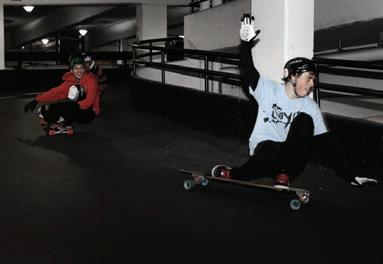
“A lot of our time was spent in garages,” says Chris Barrett. “They had speed, they had turns and it was also a little dangerous. It was the perfect arrangement of things. The garages became our own little private ski hills.”
The gang explored as many garages as they could. “Everything I learned from Mike and Adam, I learned in those places,” says Chris. “There
was just something about the parking garages that really resonated with me.”
“You’re together with 30 of your best friends and you ride a parking garage and it feels great. It is our place to train,” says Smooth Chicken.
The other great thing about garages is they offer a relief from the snow and salt. Plus, you get a free ride to the top!

HILTON BYRNE


On October 30, 2010, Hilton Byrne, a cherished member of the Ontario longboard community, passed away in a tragic skateboarding accident. Hilton’s family created a website to share the detailed story of the last 20 days of his life and their ongoing struggle to cope with losing him. They also created the Hilton Byrne Foundation – a charity that aims to ensure that all longboarders have access to helmets and that advocates for closed roads for safe riding. Learn more at hiltonbyrne.blogspot.com.


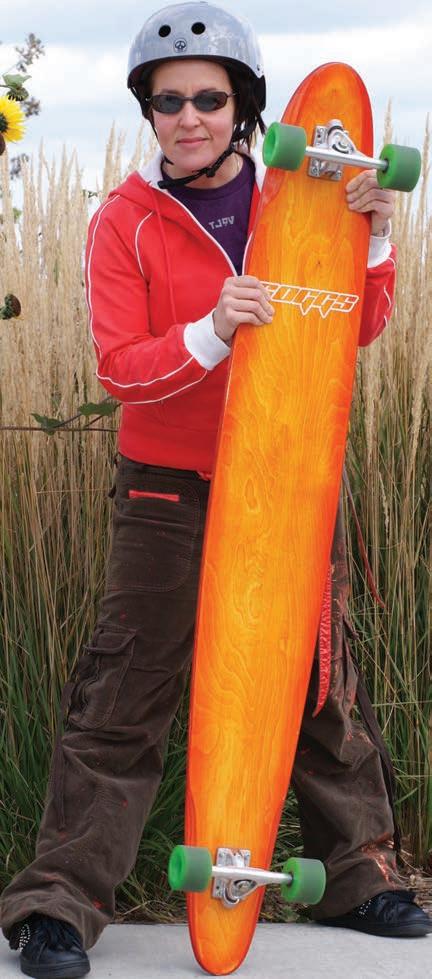

HOLIDAYS 2011 CONCRETE WAVE 105
HIlton Byrne. Photo: Scott Harrison
The Super Mellow Beach Cruise participants. Photo: Michael C. Palma
Suzanne "Ponyta" Nuttall. Photo: Scott Harrison
Adam Winston. Photo: Jonathan Nuss
John Barnet and Cam Brick. Photo: Jonathan Nuss
HOW SWAP MEETING KICKS OFF THE YEAR
Ponyta also organized the annual Swap Meet, held each March at Roarockit Skateboard Company — whose founders, Norah Jackson and her husband, Ted Hunter, are two of the most hospitable folks you’ll meet in Toronto.

“There had been a small swap at Patrick Switzer’s apartment in the fall of 2006, but it had been poorly promoted, so only a dozen of the usual suspects showed up,” recalls Ponyta.
Three years ago, she had a vision: “I saw the potential of combining this person’s old wheels and that person’s scratched-up trucks with another person’s discarded deck. I knew I had to take the idea and go BIG! I had played live music in bars for many years, so I applied the same organizational skills to promoting this. We had our first big Swap Meet in March 2007 and it was a smashing success. Every year it gets bigger. Skaters buy, sell and swap used gear. It’s an opportunity to recycle, save money, socialize and reconnect after a long Canadian winter.”
This year, Ponyta handed the organizational reins to Robert DeFreitas of Bombora Boards.
“I think it’s important to let go at some point and see how others can take an event that already exists and make it even better by infusing it with new ideas,” she says. “That’s certainly what happened with Swap!”
TALES FROM THE POOP CHUTE
Local geography affects the way people skate. And for the Toronto-area longboard scene, the influence of a local hill called the “Poop Chute” cannot be overstated.



The Chute is a pretty different type of hill, says Smooth Chicken: “It forces you to slide.” This, he says, has influenced local riders’ style away from high speed and toward high tech.
Winston agrees. “Toronto has its own style of longboarding,” he says. “If you go down to the Poop and you’ve gone more than 50 meters without sliding, you’re doing it wrong.”
For years, this 550-meter paved oasis was a secret. But once the first “Slide Fu” slide clinic was held there, the secret was out. Now, Adam says, “You go there anytime, and there are kids skating. They use it like a skatepark.”
106 CONCRETE WAVE HOLIDAYS 2011
Photo: Ponyta
The Swap Meet can get mighty crowded. Photo: Jonathan Nuss
Danilo Catanyag —The Poop Chute is sessioned hard no matter what the season.
Photo: Scott Harrison
Of course, one hill cannot be all things to all people. But the Poop Chute has provided Toronto-area skaters a unique training ground.

“Our riders, once they leave Toronto, [still] need to learn to go fast,” Smooth Chicken says. “[But] as long as they [get] comfortable with speed, you can take them anywhere. We teach how to maneuver here.”
Now that the cover has been blown off the Poop Chute, there’s a whole new crop of longboarders taking things to a whole new level.
“If I go to the Poop Chute, there’s an army of young skaters who are all better than me,” says Jonathan. “It takes your breath away!”
LOCATION, LOCATION, LOCATION
So the moral of this story is: Never doubt a place based on its geographic location.
“People immediately assume that you’ll find the best skaters from BC or California,” says Smooth Chicken. “But we trained Patrick Switzer pretty good here before we sent him off to BC. Geography definitely helps, and if you grow up near mountains, well, you might turn out to be a great skater. But it takes a special type of mentality to come from a place like this and aspire to be a great skater. We have to drive four or six hours where we can train on big hills.”
But, he says, “You can find a skater living anywhere. I’d like to think that Toronto has revolutionized skateboarding a little bit.”
THE TORONTO LONGBOARDING COMMUNITY — FINAL THOUGHTS

Ponyta: “The magic of the Toronto longboarding community is its inclusive, populist attitude, which
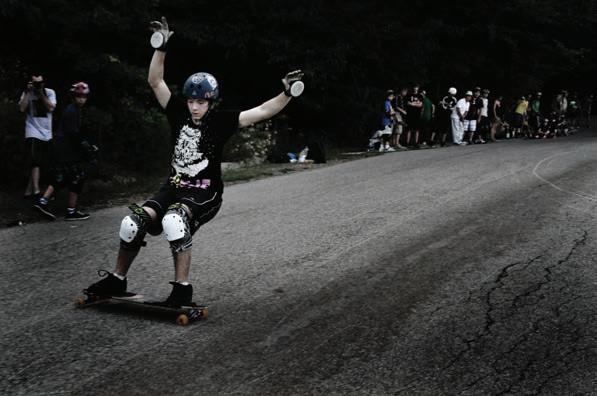
transcends ability, age, race and gender. Everyone is welcome to the party! The camaraderie and stoke are both really strong. It’s not unusual for longboarders to stop each other on the street and inform one another of events to attend and websites to visit.”
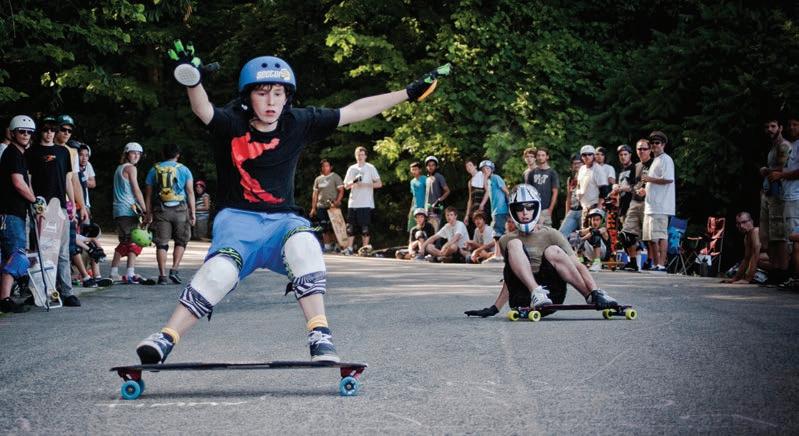
Adam: “I see it getting a little bit easier for us. When we started there wasn’t that older generation to show us how things were done. [But now] we’ve got slide schools. ... We flow gear to the kids. We take them out to races. In fact, speaking of kids, we’ve got 9-year-olds making the pros sweat.
“I want to take a back seat and go skate. It’s really stressful … I just want to enjoy it. The end goal is to be a
part of skateboarding. It is really so much fun. Sharing good times rather than worrying about racing. It’s more about hanging out and growing the sport.”
Chris: At the Board Meeting, there were so many little kids. These folks will determine the next steps. I see a little less emphasis on competition and more accent on building the community. Skateboarding is so open-ended – you can do whatever you’d like and that really drives the whole scene. I am trying to get away from labels. I just want to keep skating.
Jonathan: “We also used to ride with this man from Mexico named Raphael, born with no arms or legs, and instead of using a wheelchair he used a skateboard to get around. We gave him a longboard and Ben used to pull him from garage to garage, and to this day I have never met someone with more stoke in my whole life. He had more challenges than anyone else on the team, yet he was the most positive person I’ve ever met. He would bomb those garages fearlessly with the largest smile on his face. That’s the old-school vibe I will never forget.
“It’s crazy to think how far this has all come and how lucky I am to be able to document the community through photo and film. There’s nothing more amazing than someone telling you they came out to Board Meeting because they saw your photo on the wall. There have been so many people over the years who’ve made this all possible, and I am grateful to have been a part of the community from the beginning.” CW
HOLIDAYS 2011 CONCRETE WAVE 107
Ben Keymer and Jim Dechamp charging the Poop Chute.
Photo: Scott Harrison
Braden Tibbles takes flight over Francesco Jonathan De Chellis and Adam Mis.
Photo: Scott Harrison
Roarockit Headquarters and home of the Swap Meet.
Photo: Jonathan Nuss
SWITZER Rollsto His Fourth World Cup Victory



The second day’s schedule mimicked the first, with practice in the morning followed by final qualifying in the afternoon. Jackson Shapiera from Sydney, Australia, set a quick time of 1:28.945. Patrick Switzer was second with a time of 1:29.650. Switzer, the winner of the last three IGSA World Cup races, was looking strong and gunning for his fourth World Cup victory in a row. Pilloni qualified third with a time of 1:29.783. Friday’s top qualifier, Lindstrom, improved his time by approximately 3.5 seconds to a 1:29.822, but it was only enough to put him in fourth place. Still, it was an impressive performance for the former Series champion, who hadn’t raced in nearly two years.



Race day was warm and sunny. Approximately 3,000 spectators turned out to enjoy the day of racing, and an audience of around 14,000 tuned in to the live
The 2011 IGSA World Cup Series resumed for round number five with the WinSport Canada Cup, September 2-4 in Calgary, Alberta, Canada. Canada Olympic Park, site of the 1988 Winter Olympics, hosted the event on the bobsled track access road. The organizers pulled out all the stops, putting up a $12,000 prize purse and bringing in ColossoVision to provide video production, two jumbo screens and live webcasting. This represented a big step forward for the World Cup Series, by allowing downhill skateboarding fans from around the world to follow all the action. A unique feature of the 1.5km (.9 mi) race course were two speed bumps. The first was in an upper section of the course and the second followed the last corner at the top of the final straightaway. In addition, the competitors rode the park chairlift to the start instead of the typical buses or box vans.
After a full morning of practice on Friday, the first qualifying run was held that afternoon. Fredrik Lindstrom laid down a blistering run of 1:33.484 to lead the day’s qualifying. Lindstrom, who hails from Stockholm, Sweden, shocked many of his peers with his quick time. He was the 2006 IGSA World Cup Series champion, but he rarely races at the World Cup level anymore due to work and family commitments. Qualifying in second position was Louis Pilloni from Los Angeles, California, with a time of 1:33.798. Kyle Martin from Vancouver, Canada, was third with a time of 1:33.923.
108 CONCRETE WAVE HOLIDAYS 2011
IGSA REPORT >> By MARCUS RIETEMA
Patrick Switzer,, James Kelly and George Mackenzie run nose to tail through Seismic Corner.
Photo: Scott Wippermann
2006 World Cup Series Champion Fredrik Lindstrom showed that he hasn’t lost any of his speed.
Photo: Scott Wippermann
Max Wippermann won the all-important Junior II race.
Photo Scott: Wippermann
webcast, making this the largest audience to witness an IGSA World Cup race since the X Games back in 2001. After a tough four-round battle, it came down to the final heat between Switzer, Shapiera, Pilloni,

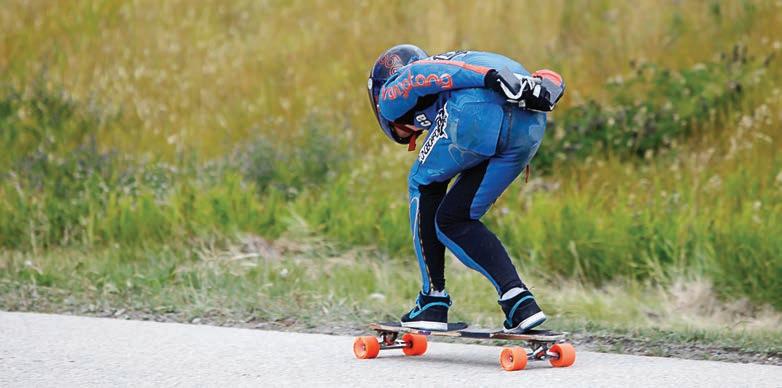

George Mackenzie, James Kelly and Niko Desmarais. Switzer had played it safe in his first four heats with finishes of second, first, second and second, respectively. Only in the final round did he lay his full
hand on the table. He pushed hard into the lead from the start, creating some separation between himself and the rest of the field.

Behind him, all hell was breaking loose. Shapiera and Pilloni were battling back and forth. Heading into Seismic Corner at approximately the midpoint, the two riders touched wheels; they both scrubbed speed, but fortunately, neither crashed. The hiccup enabled Mackenzie to move into second ahead of Pilloni, who dropped to third. Kelly also seized the moment to move past Shapiera and into fourth.
As they headed into the final straightaway, it was Switzer in the lead, followed by Mackenzie, Pilloni, Kelly, Shapiera and Desmarais. After safely negotiating the speed bump, Pilloni hit a small hole in the pavement, wobbled and crashed heavily. Fortunately, he was uninjured. At the line it was Switzer winning, Mackenzie second and Kelly benefiting from Pilloni’s crash to take third. Shapiera finished fourth, Desmarais fifth and Pilloni got up to finish sixth. Shapiera commented in his post-race interview that the race was the closest and hardest-fought he had ever experienced. Switzer affirmed his complete dominance of the downhill skateboarding world by winning his fourth consecutive IGSA World Cup race of the year.
After the awards ceremony, IGSA President Marcus Rietema announced that the WinSport Canada Cup has been selected to host the 2012 IGSA World Championships. The event will be moving to early summer and held July 6-8, 2012. He also announced that the Maryhill Festival of Speed will be held June 27-July 1, 2012, enabling racers from around the world to attend both North American events within a two-week period.
The 2011 WinSport Canada Cup was a huge success and raised the bar for IGSA World Cup events around the globe. It will likely become the blueprint for big international races in the future.
2011 WINSPORT CANADA CUP FINAL RESULTS
1. Patrick Switzer, Canada
2. George Mackenzie, Canada
3. James Kelly, United States
4. Jackson Shapiera, Australia
5. Niko Desmarais, Canada
6. Louis Pilloni, United States
7. Kyle Martin, Canada
8. Max Wippermann, United States
9. Alex Tongue, United States
10. Zak Maytum, United States
HOLIDAYS2011 CONCRETE WAVE 109
Louis Pilloni had a podium finish in sight before a late crash spoiled his day.
Photo: Scott Wippermann
Patrick Switzer extended his World Cup win streak to four races.
Photo: Scott Wippermann
James Kelly had a great weekend to earn the final podium position.
Photo: Scott Wippermann
By MARCUS RIETEMA
IGSA NorAm Series Season Review

With the continued growth of downhill skateboarding and the demand for more World Cup sanctioned events than the International Gravity Sports Association (IGSA) can provide, the sanctioning body has looked for additional ways to meet the demand. The result was the 2011 IGSA NorAm Downhill Series. Five North American events made up the inaugural season, with races in Canada and the United States.
The Vernon DH, Prince Edward County Gravity Festival and U.S. Nationals were able to join the Maryhill and Calgary World Cup events on equal footing to make up the NorAm Series. All five events awarded equal points, with each competitor’s four best finishes used to determine his or her final tally. At season’s end, NorAm Series champions were crowned in Open Downhill Skateboarding, Women’s Downhill Skateboarding, Junior I and Junior II Downhill Skateboarding, Street Luge and Classic Luge.
The launch of the NorAm Downhill Series means that more events can be part of a meaningful IGSA championship. Competitors who may not have the resources to go after the World Cup Series championship can now stay on the continent and race for the NorAm Series title.
By season’s end, the NorAm Downhill Series had accomplished its goals. Attendance of all three nonWorld Cup-level events was up over 2010, making the event promoters happy. A number of competitors raced in four events, and some did all five, showing strong support from competitors for the new race series.
More than 350 competitors raced for the 2011 Open Downhill Skateboarding NorAm Downhill Series championship. Mischo Erban was crowned the champion, with Patrick Switzer finishing second and Luke Melo third. Zen Shikaze was fourth, and Junior II racer Quin Finocchio rounded out the top five. All five skaters hail from Canada.

Quin Finocchio won the Downhill Skateboarding championship in the Junior II division, which is for competitors who are 14-17 years old. Brendan Davidson finished second, while Wolfgang Coleman was third.

110 CONCRETE WAVE HOLIDAYS 2011
IGSA REPORT >>
Katie Neilson had three victories en route to the Women’s NorAm Series title.
Photo: John Longfellow
Mischo Erban earned the NorAm Championship with consistent finishes.
Photo: Mike Smith
2011 IGSA NORAM DOWNHILL SERIES
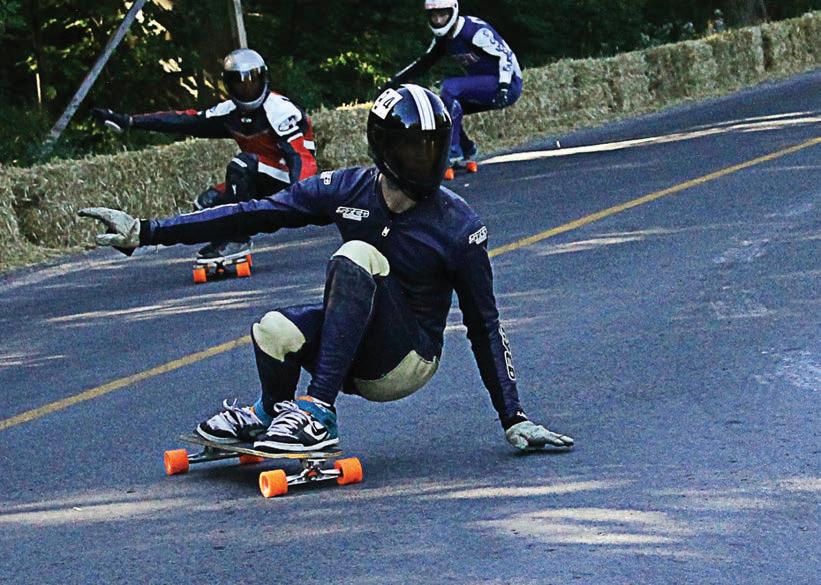
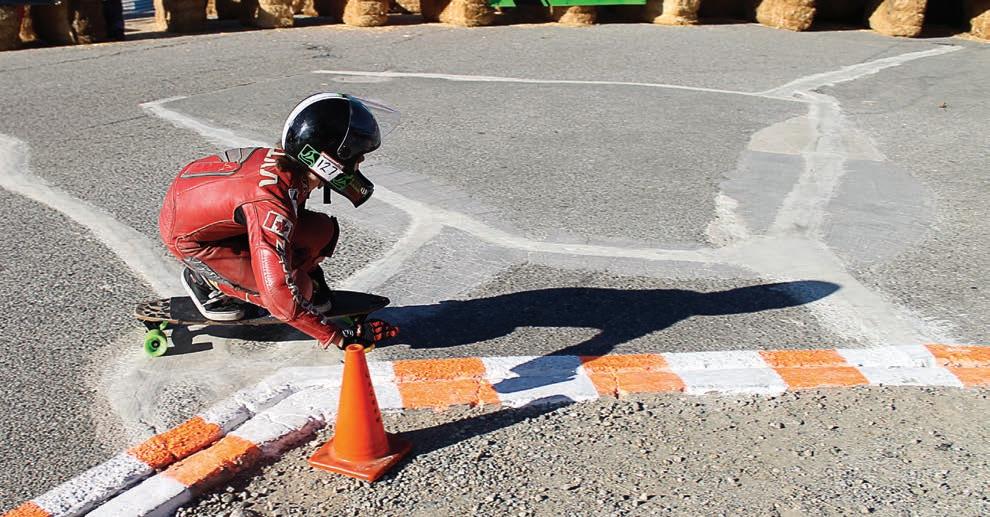
June 11-12
VERNON DH
Vernon, BC, Canada
June 29-July 3
MARYHILL FESTIVAL OF SPEED
Goldendale, WA, USA

September 2-4
WINSPORT CANADA CUP
Calgary, AB, Canada
September 17-18

PEC GRAVITY FEST
Picton, ON, Canada
October 8-9
NORAM FINALS
San Dimas, CA, USA
Finishing fourth was American Scott Hamilton, the only non-Canadian in the top five. Jacob Dutton rounded out the top five in the Series championship.
The Junior I racers (8-13 years old) are considered the future of the sport. Twelve-year-old Quinn Dubois won the NorAm Series title. Eight-year-old Tristan Bell finished second, showing that the young skater has a big future ahead of him. Oliver Korman was third, Nohlan Campbell fourth and Jack Craddock fifth.
Katie Neilson earned three victories in her three NorAm Series appearances. This gave her an insurmountable lead that left the other ladies racing for second place. Finishing second was Andi Leslie, while Dominique Vukorep finished the season in third. Anna O’Neill was fourth, giving the Canadian ladies a clean sweep of the top four positions.
The NorAm Series is already proving itself to be a valuable marketing tool for up-and-coming racers hoping to develop their reputations and increase their visibility to sponsors. This will become more and more important in the coming years. The Series will be back again in 2012 and will likely gain one or even two additional events. CW
HOLIDAYS 2011 CONCRETE WAVE 111
Quin Finocchio on his way to winning the PEC Gravity Festival and the Junior II NorAm Series title.
Photo: Marcus Rietema
Quinn “Pocketknife” Dubois won the Junior I NorAm Series title.
Photo: Marcus Rietema

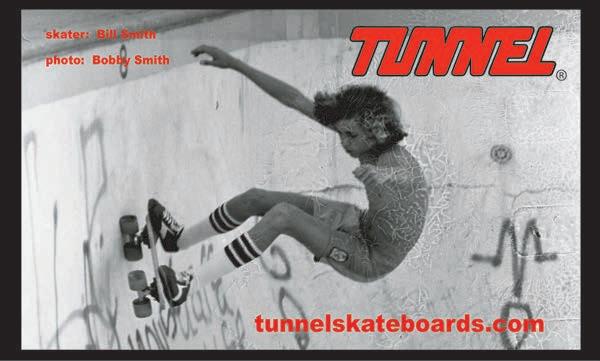
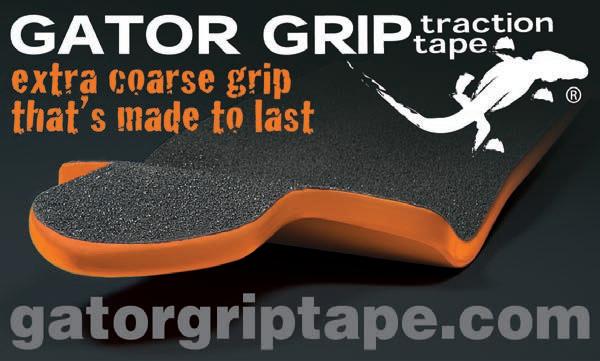




THREE WAYS TO SUBSCRIBE: NAME ________________________________________________ ADDRESS ______________________________________________ CITY/STATE ____________________________________________ ZIP___________________________________________________ 1. Send a check or international money order made payable to Concrete Wave. Mail to: The Indaba Group Attn: CW Subs PO Box 1895 Carlsbad, CA 92018. 2. Call Concrete Wave at 905-738-0804 with your credit card. 3. Pay Pal mbrooke@interlog.com USA SUBSCRIBERS MAIL TO: THE INDABA GROUP — ATTN: CW Subscriptions PO Box 1895 Carlsbad, CA 92018. ONE YEAR SUB $26 US CHECK IF GIFT CANADIAN ORDERS $26 CDN for 1 year includes GST INTERNATIONAL ORDERS $44 US for 1 year Send to: Concrete Wave 1136-3 Center Street Suite 293 Thornhill Ontario L4J 3M8 IMPORTANT: please make check payable to Concrete Wave 112 CONCRETE WAVE HOLIDAYS 2011 ISSUES PER YEAR $26 6 Subscribe Today! ATTENTIONACTIONSPORTSRETAILERS TO CELEBRATE THE LAUNCH OF JOIN US FOR A COMPLIMENTARY LUNCH AT AXS LONGBOARD RETAILER COVERS THE WORLD OF LONGBOARDING EXCLUSIVELY. THE MAGAZINE PROVIDES DETAILED INFORMATION THAT WILL ARM SALES STAFF WITH THE PRODUCT KNOWLEDGE THEY NEED TO SELL MORE EFFECTIVELY. Famous Dave’s Bar-B-Que is located at 300 South Pine Drive in Long Beach. (right next to the Convention Center) Please RSVP and your add your shop to our mailing list by visiting http://bit.ly/pamhWx For more info, email mbrooke@interlog.com or call Michael Brooke at 905-738-0804 THURSDAY, JANUARY 5th, 2012 FROM THE HOURS OF 11 AM TO 3PM
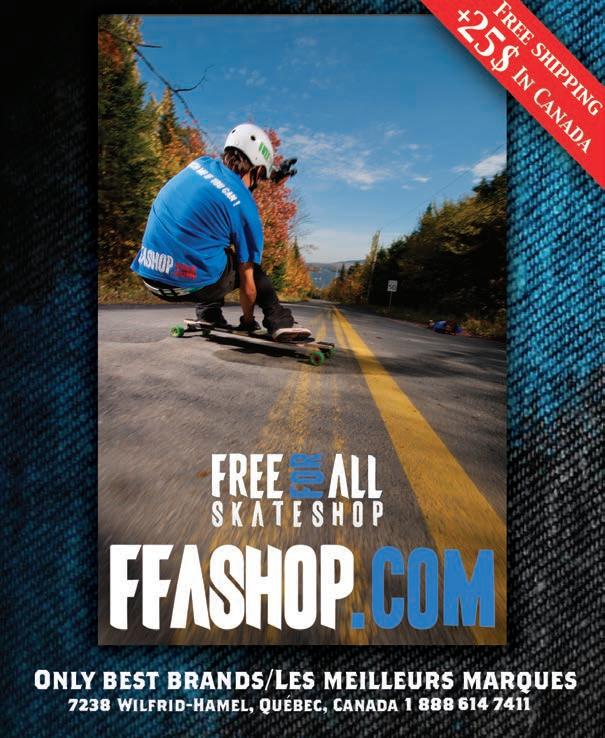



HOLIDAYS2011 CONCRETE WAVE 113
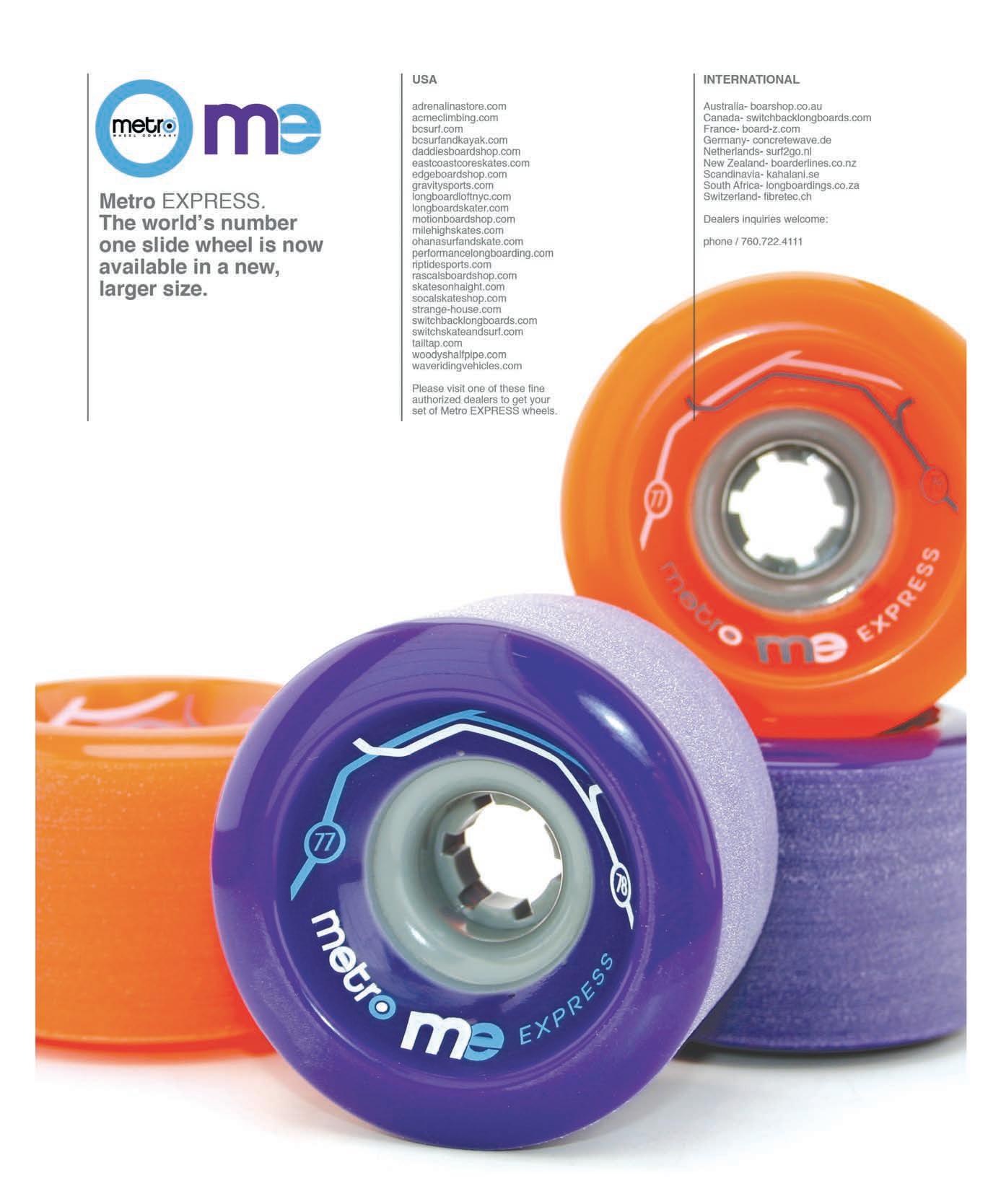





















































 Gary Wiltshire, England
Gary Wiltshire, England
 Matt Mullin Cincinnati, Ohio
Matt Mullin Cincinnati, Ohio





















































 CLINT CHEREPA
CLINT CHEREPA












 BY CHRIS YANDALL PHOTOS: GIGI DEARMAS-LOPATRIELLO
BY CHRIS YANDALL PHOTOS: GIGI DEARMAS-LOPATRIELLO









 By MICHAEL BROOKE
By MICHAEL BROOKE



































































































































































 Wesley Harkavy shines on.
Photo: Dylan Harkavy
Wesley Harkavy shines on.
Photo: Dylan Harkavy

 Matt Livingston leads the charge at the 2011 Board Meeting in Toronto.
Photo: Jonathan Nuss
Matt Livingston leads the charge at the 2011 Board Meeting in Toronto.
Photo: Jonathan Nuss


 Kenny Wright takes flight.
Photo: Jeff Nass
Start of the 2011 Broadway Bomb, NYC.
Photo: Brian Babish
Kenny Wright takes flight.
Photo: Jeff Nass
Start of the 2011 Broadway Bomb, NYC.
Photo: Brian Babish

 Guto Lamera stylish frontside air, Max's Bowl, Encinitas, California.
Photo: Dan Bourqui
Guto Lamera stylish frontside air, Max's Bowl, Encinitas, California.
Photo: Dan Bourqui
 A Venice local by the name of Buddha carves his own path.
Photo: Ray Rae Goldman
A Venice local by the name of Buddha carves his own path.
Photo: Ray Rae Goldman


 2011 Toronto Board Meeting — overview of Yonge Street.
Photo: Michael Brooke
French longboard guru Lotfi jumps a barrier perilously close to a curb.
Photo: Paul Norton Taillandier
2011 Toronto Board Meeting — overview of Yonge Street.
Photo: Michael Brooke
French longboard guru Lotfi jumps a barrier perilously close to a curb.
Photo: Paul Norton Taillandier
 Jeff Tatum launches a powerful frontside air as the sun sets.
Photo: Dan Sparagna
Jeff Tatum launches a powerful frontside air as the sun sets.
Photo: Dan Sparagna


 Renan Lazzarotti skillfully displays a one-footed nose manual.
Photo: Rafael Fazano
Renan Lazzarotti skillfully displays a one-footed nose manual.
Photo: Rafael Fazano
 Mike Dallas, Solomon Lang and Mark Schaperow enjoy the rush of the Williamsburg Bridge.
Photo: Brett Beyer
Mike Dallas, Solomon Lang and Mark Schaperow enjoy the rush of the Williamsburg Bridge.
Photo: Brett Beyer


 James Kelly closes out the corner.
Photo: Max Dubler
Robin McGuirk slides into a turn at Alameda Ridge, Oregon.
Photo: Spencer Knuttila
James Kelly closes out the corner.
Photo: Max Dubler
Robin McGuirk slides into a turn at Alameda Ridge, Oregon.
Photo: Spencer Knuttila

 Bloody knees and falling leaves. Eduardo Furuga tears up the streets of Brazil.
Photo: Rafael Fazano
Bloody knees and falling leaves. Eduardo Furuga tears up the streets of Brazil.
Photo: Rafael Fazano

 Alex Tongue attacks the Alameda Ridge in Portland, Oregon.
Photo: Spencer Knuttila
Alex Tongue attacks the Alameda Ridge in Portland, Oregon.
Photo: Spencer Knuttila
 Katie Neilson is a fierce downhill competitor.
Photo: Andi Leslie
Katie Neilson is a fierce downhill competitor.
Photo: Andi Leslie
 Étienne Roy-Martel sails around the shortcut at the Giant's Head Freeride.
Photo: Jon Huey
Étienne Roy-Martel sails around the shortcut at the Giant's Head Freeride.
Photo: Jon Huey
































































